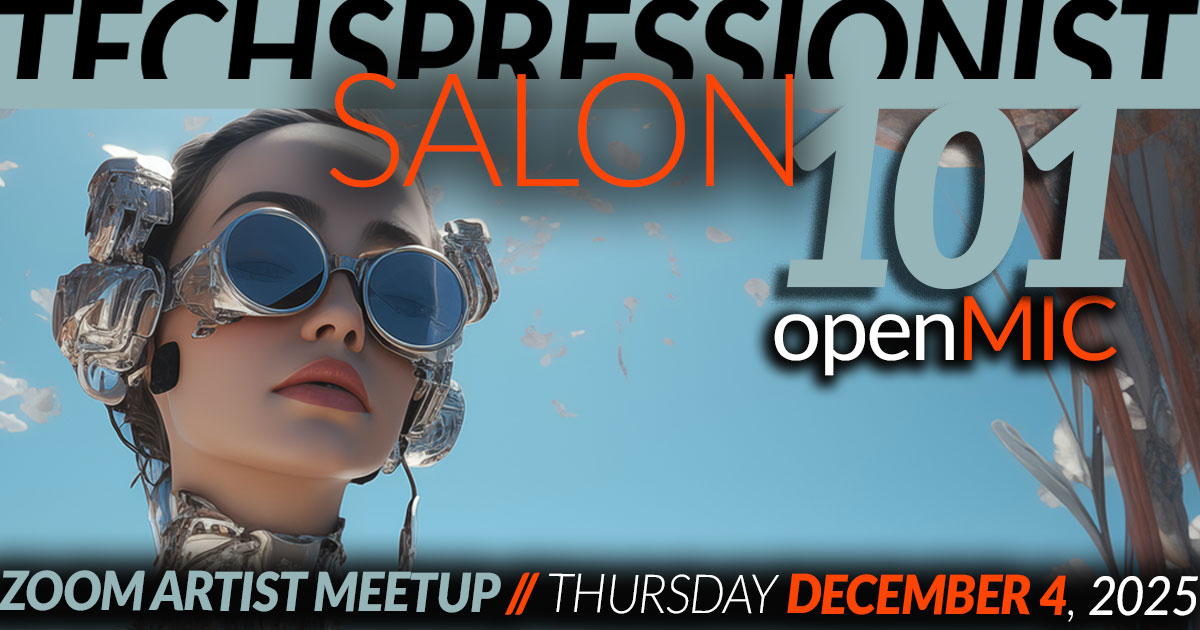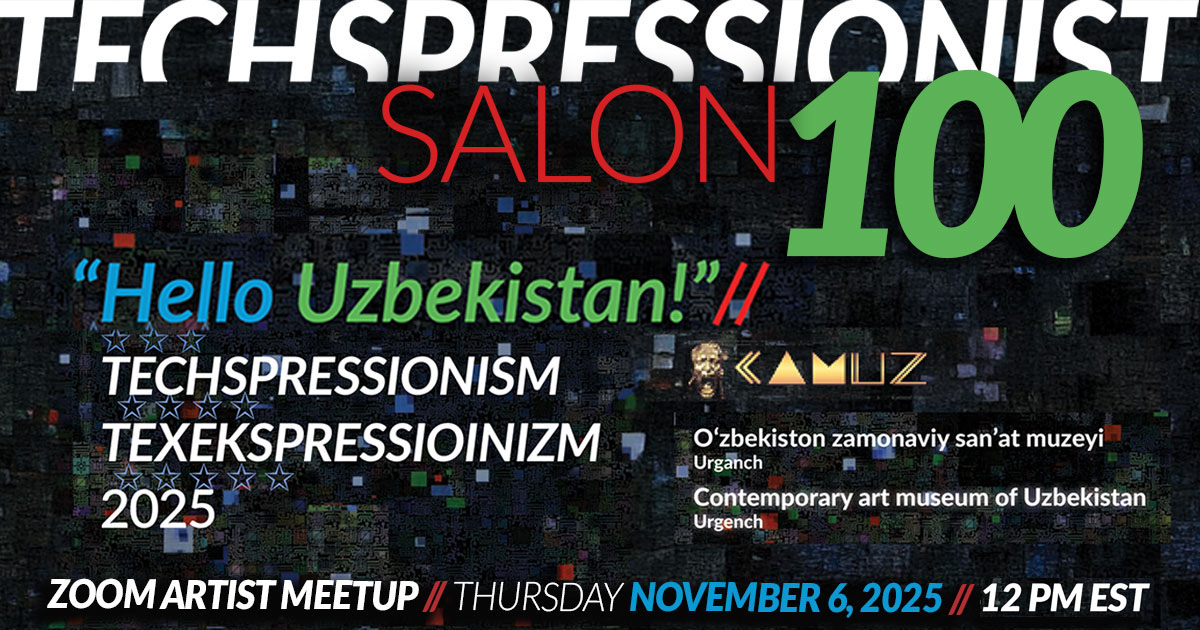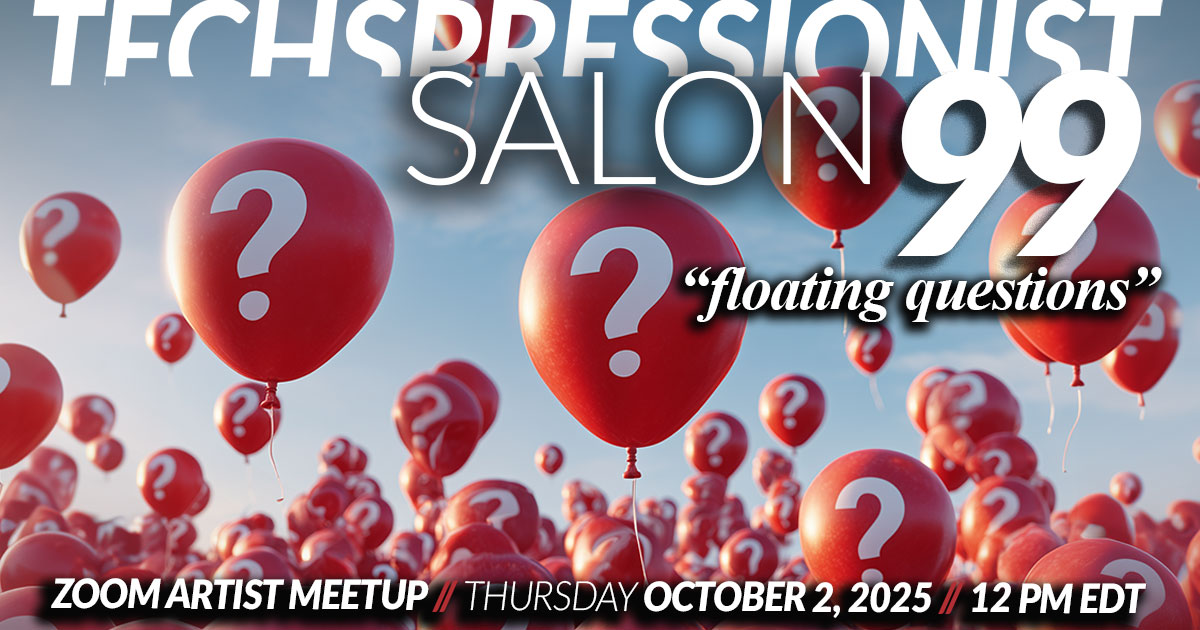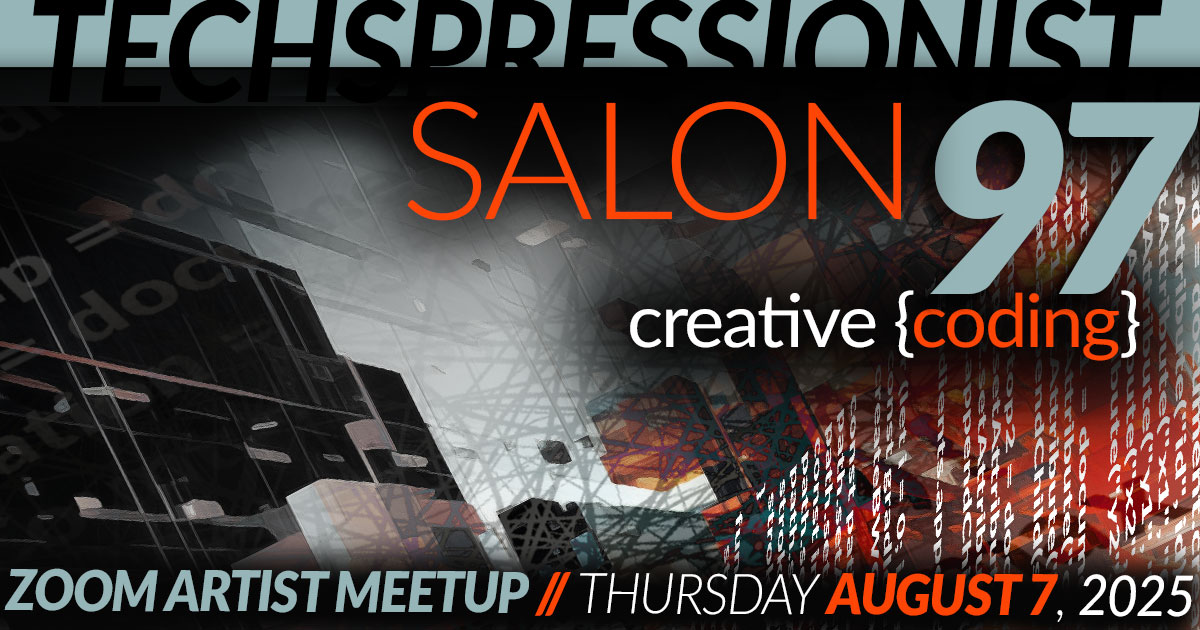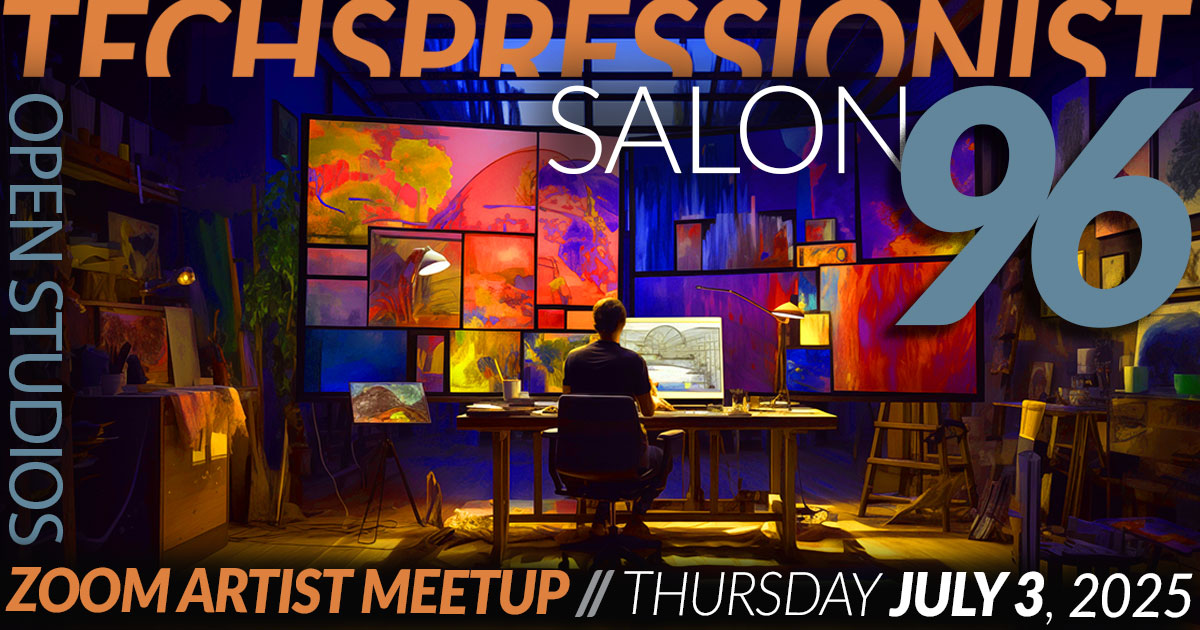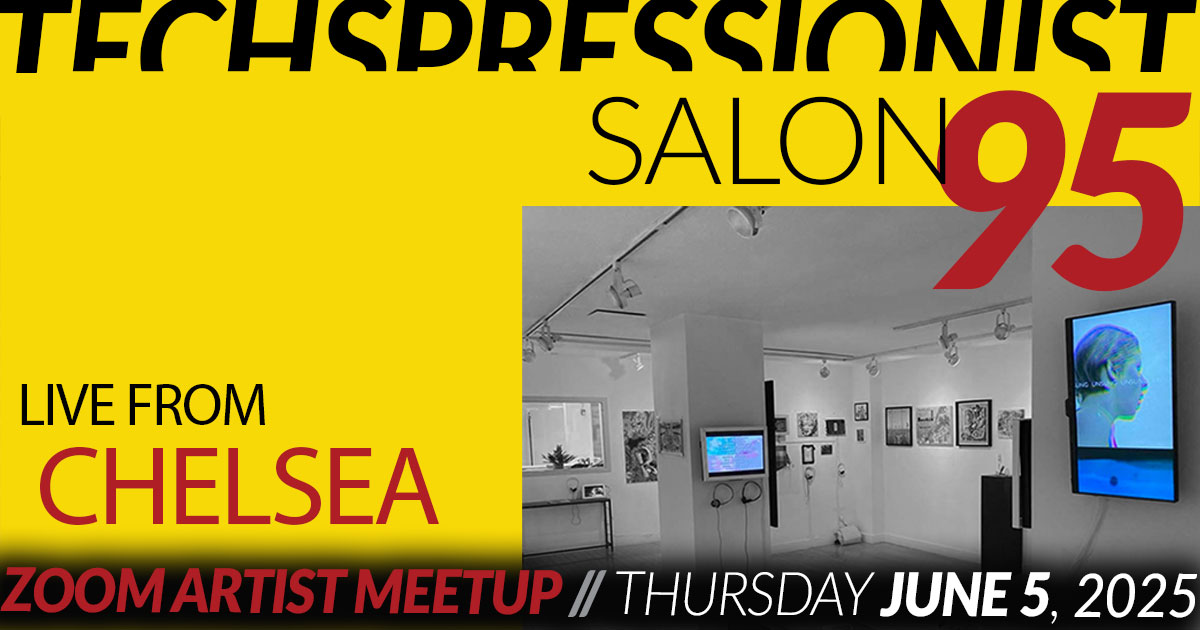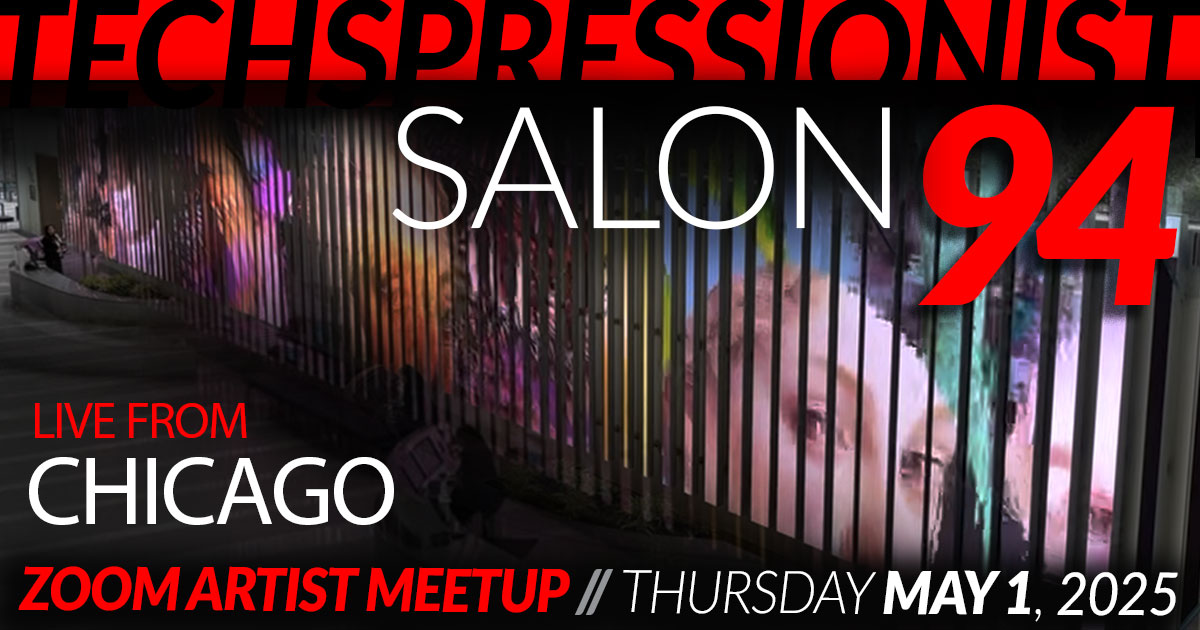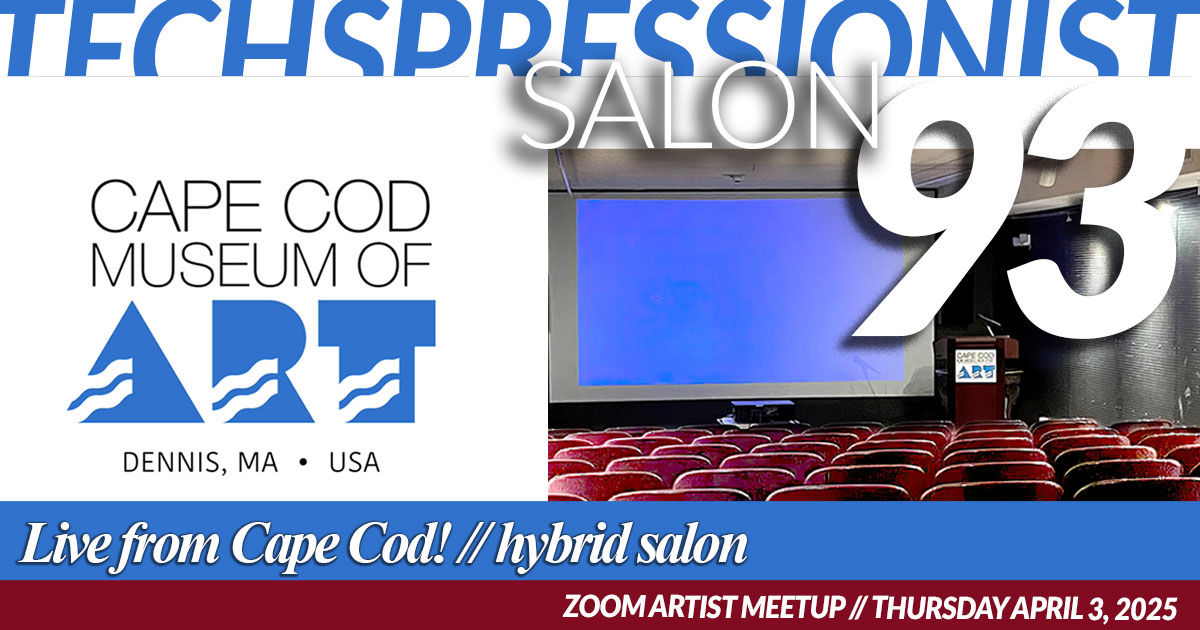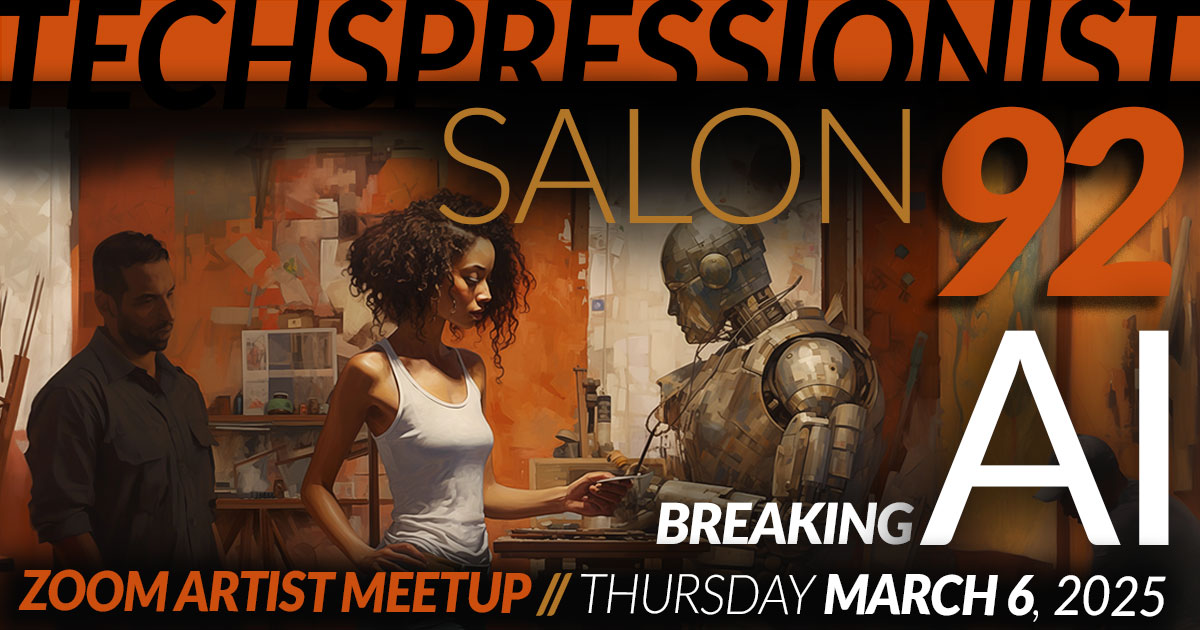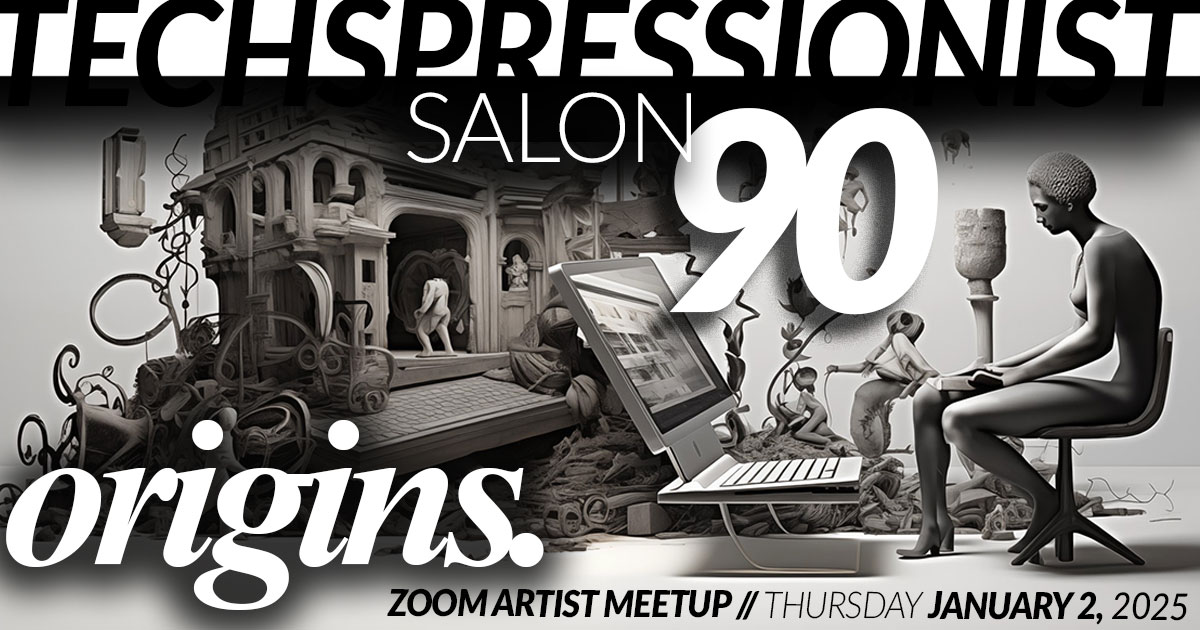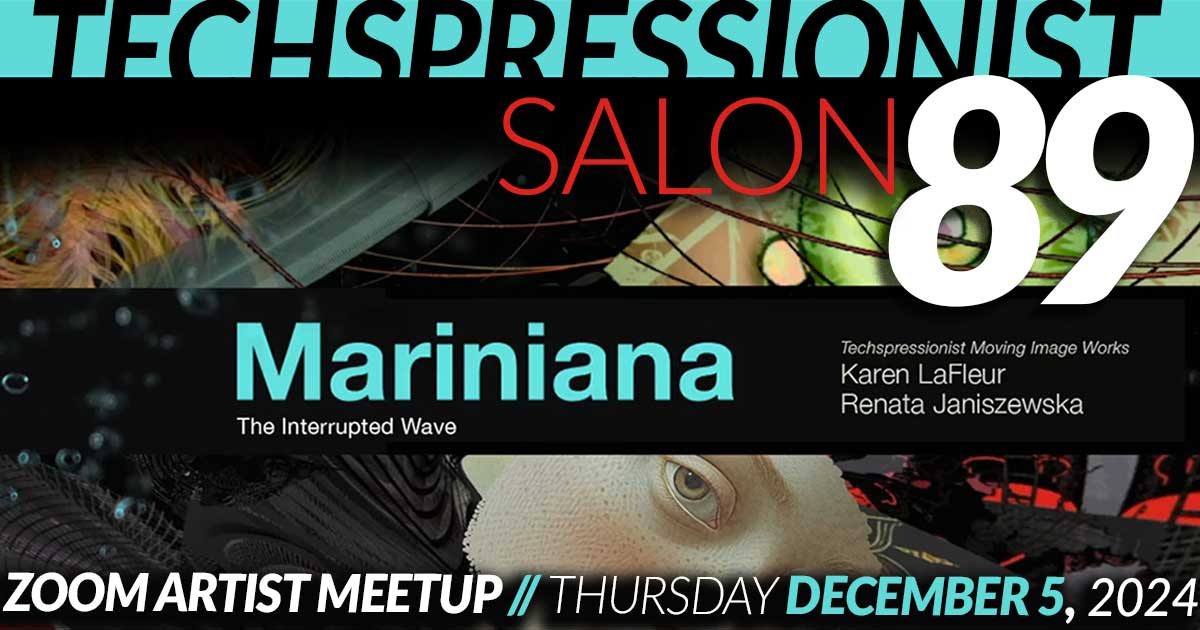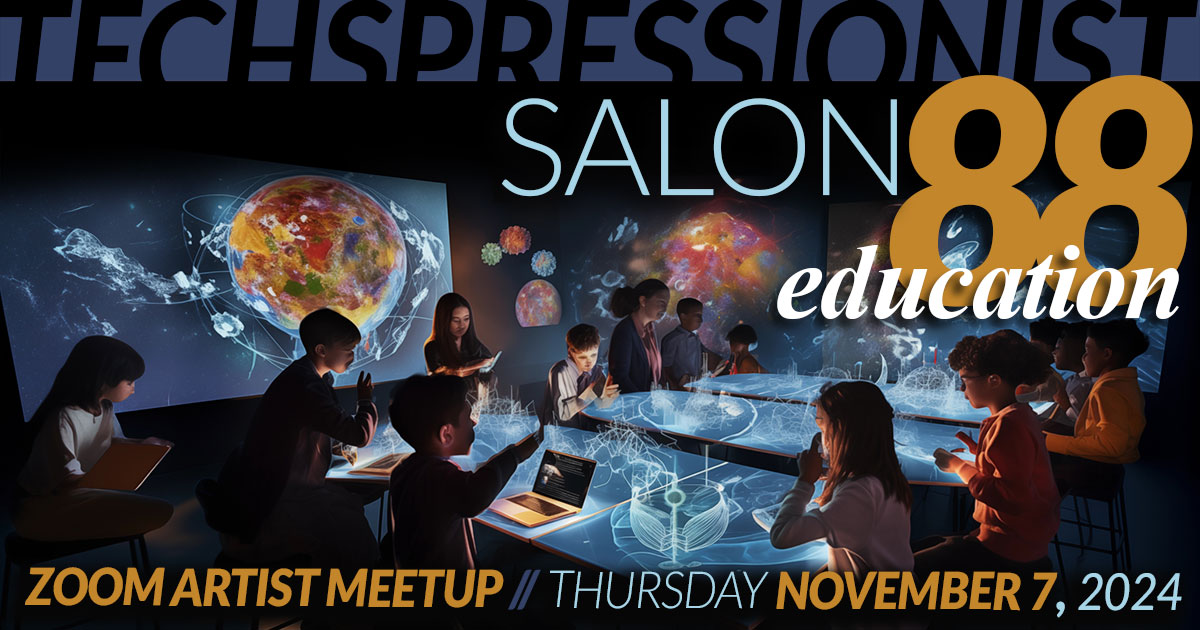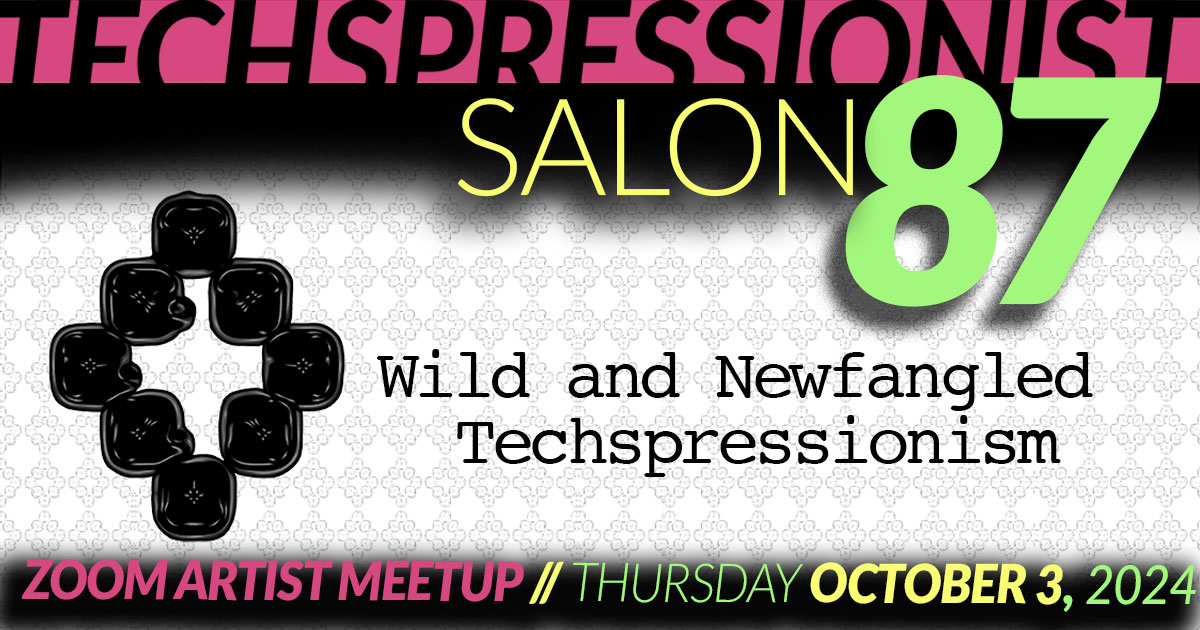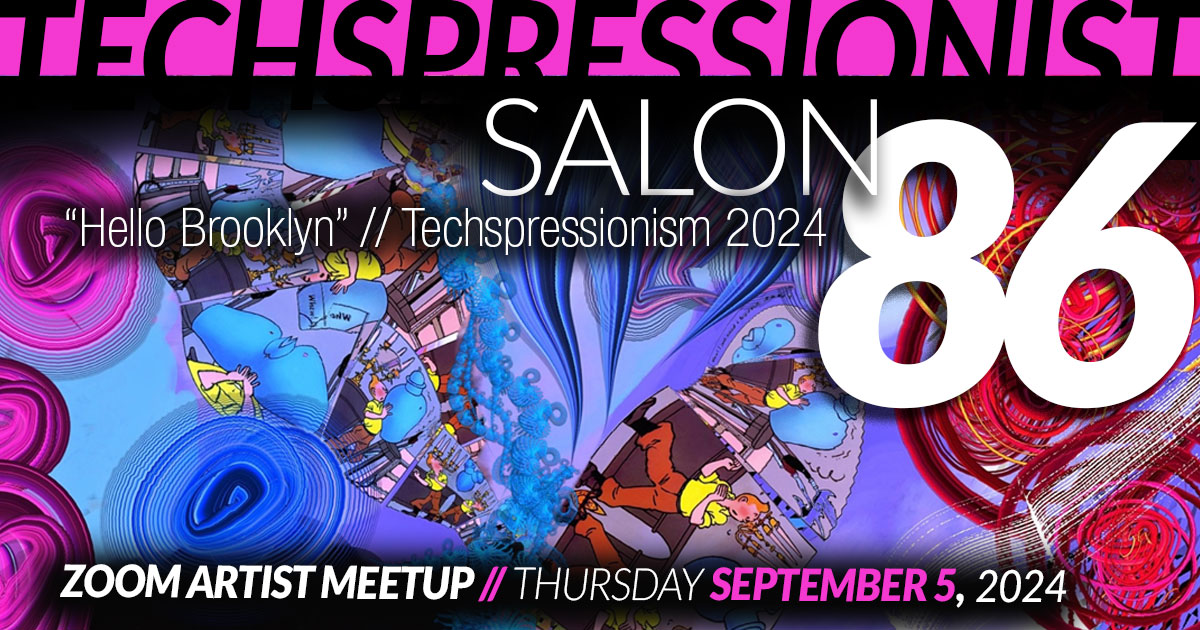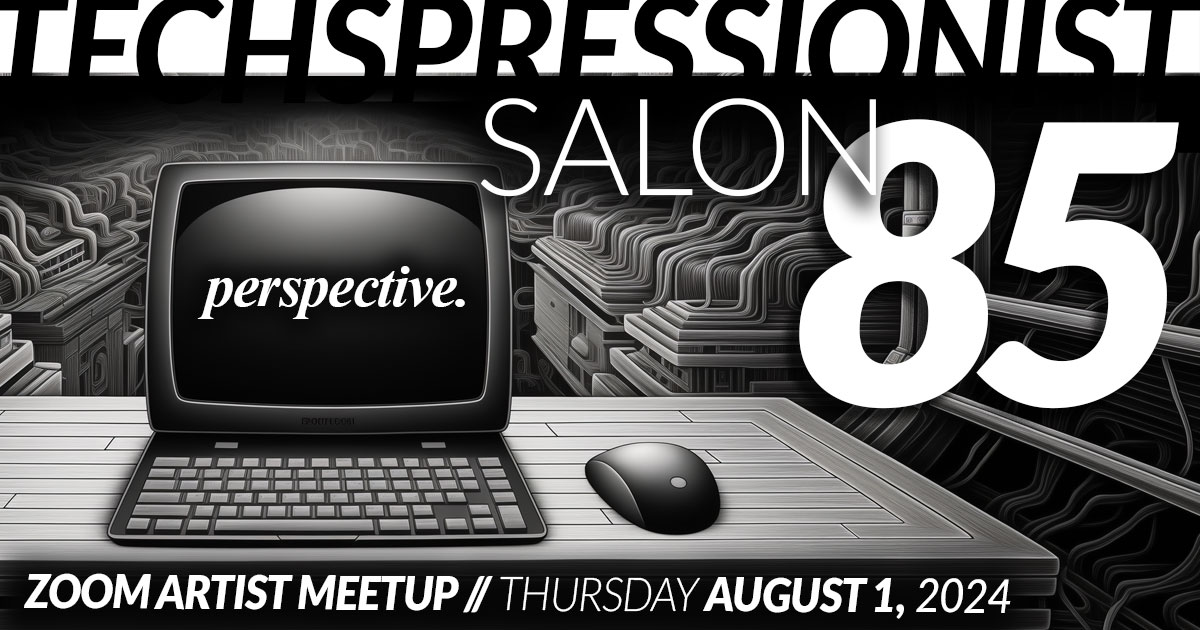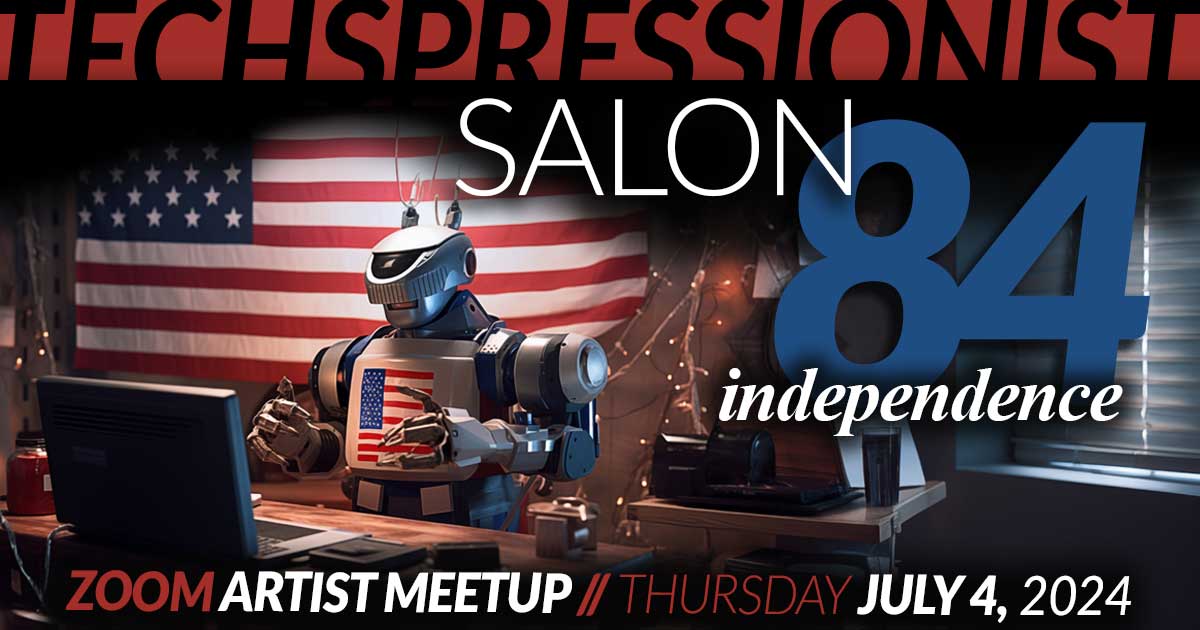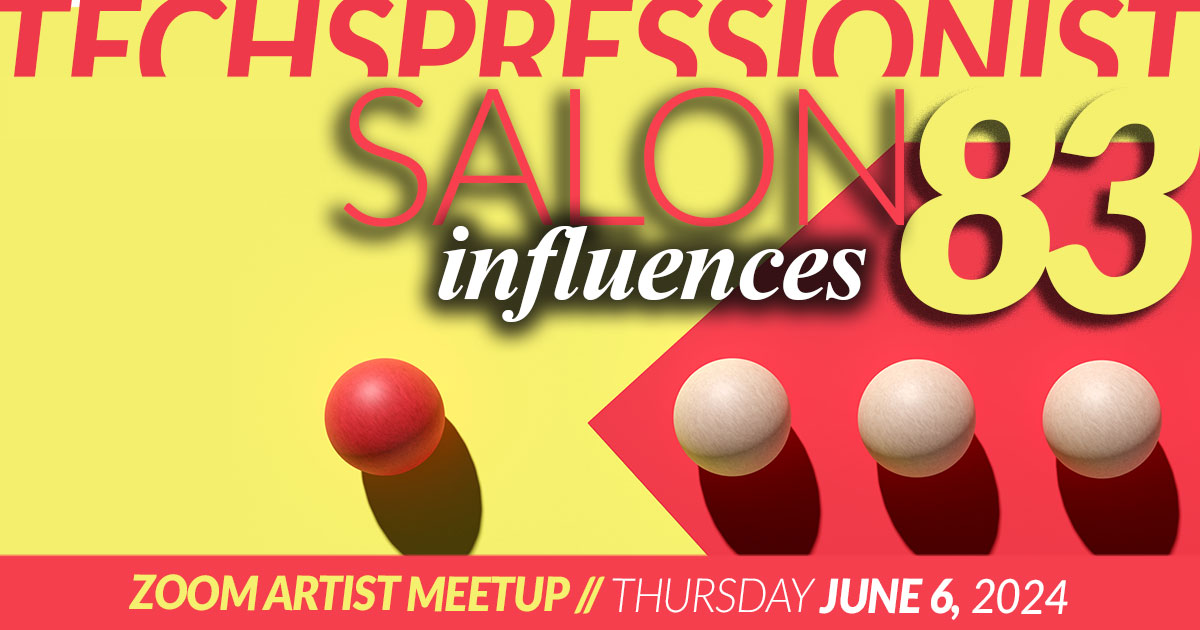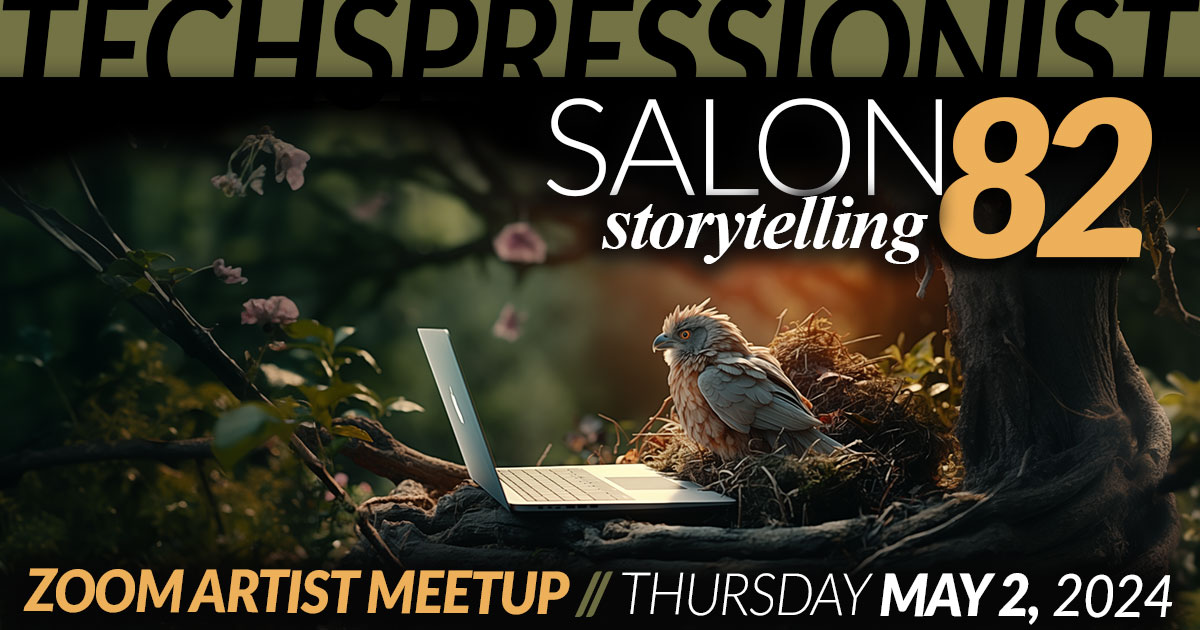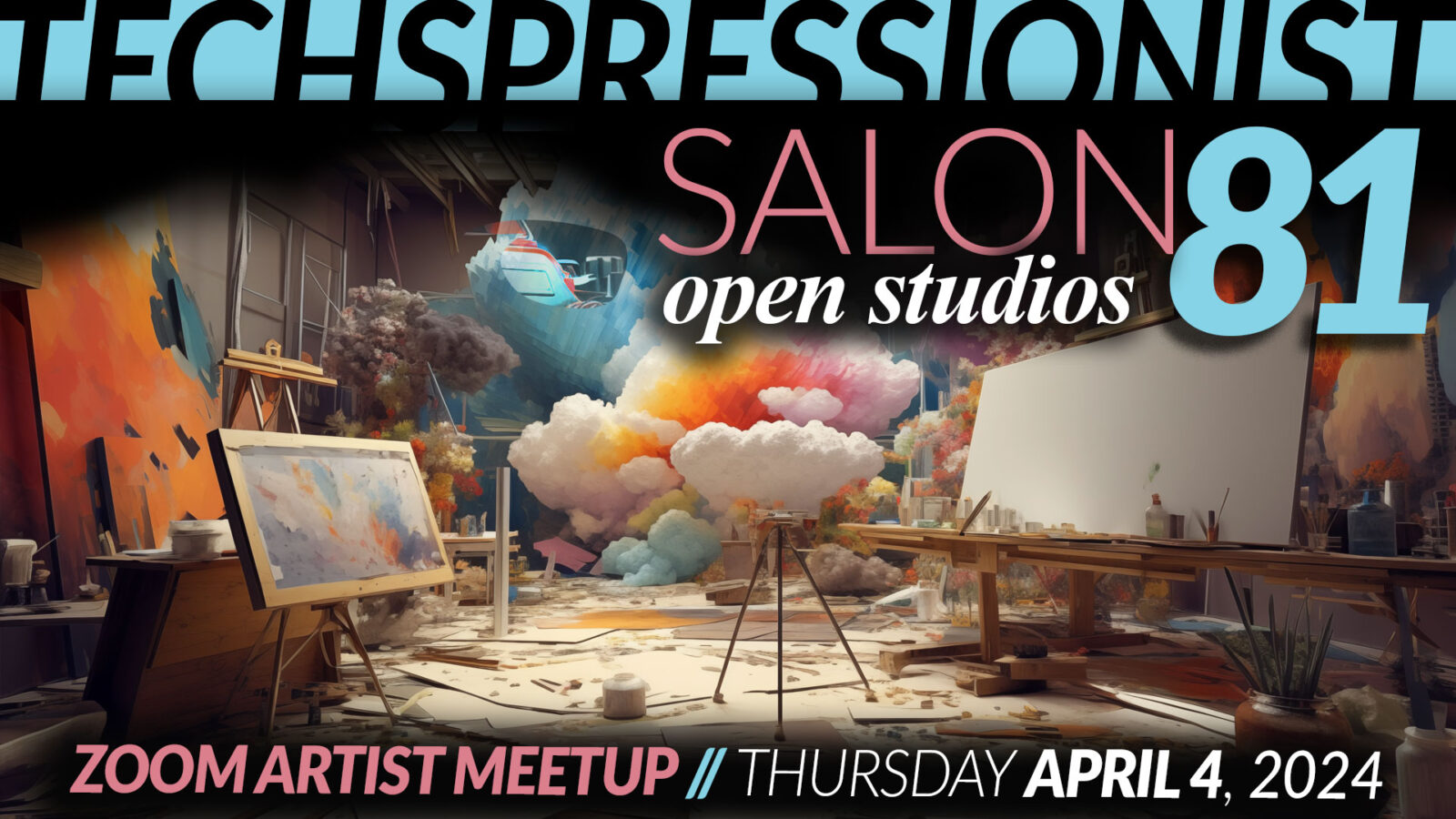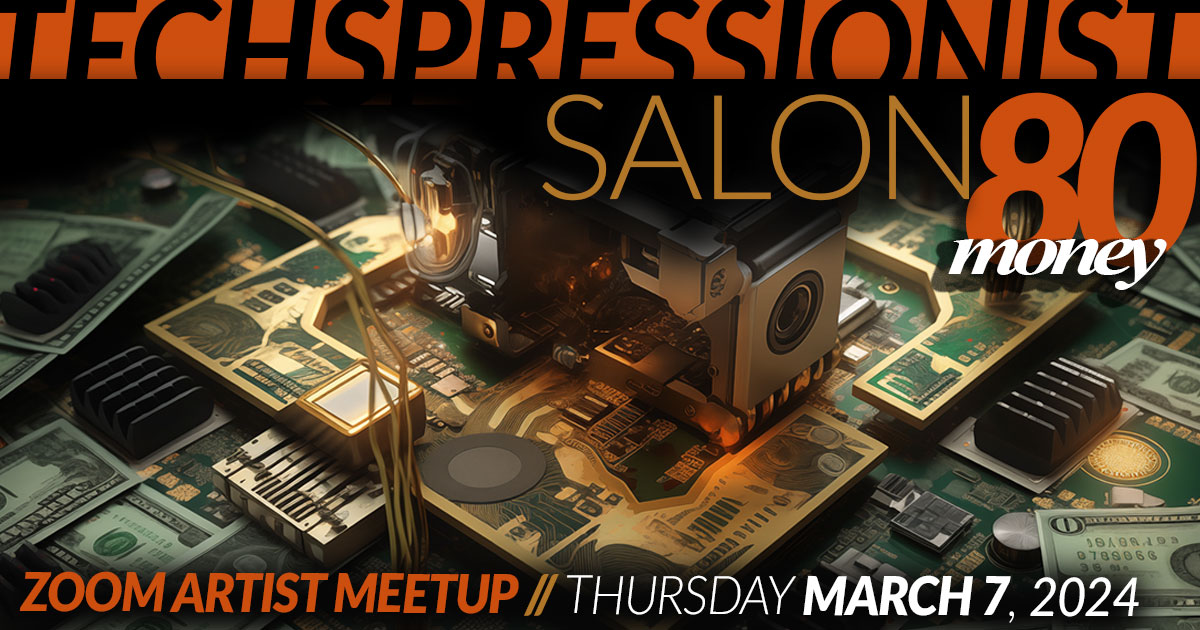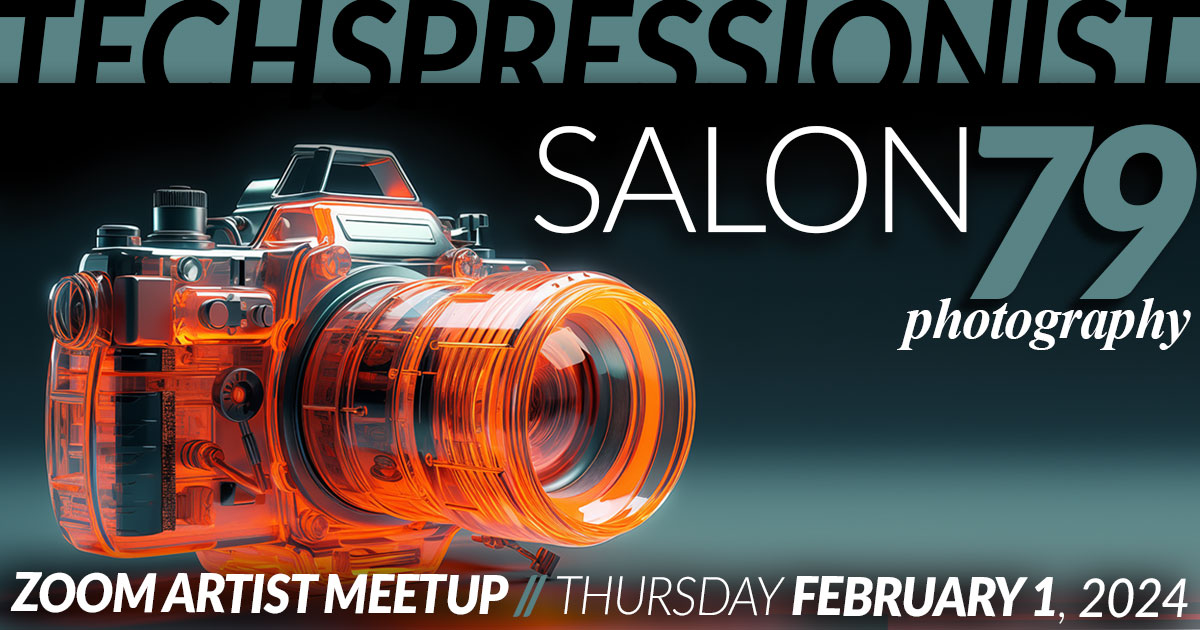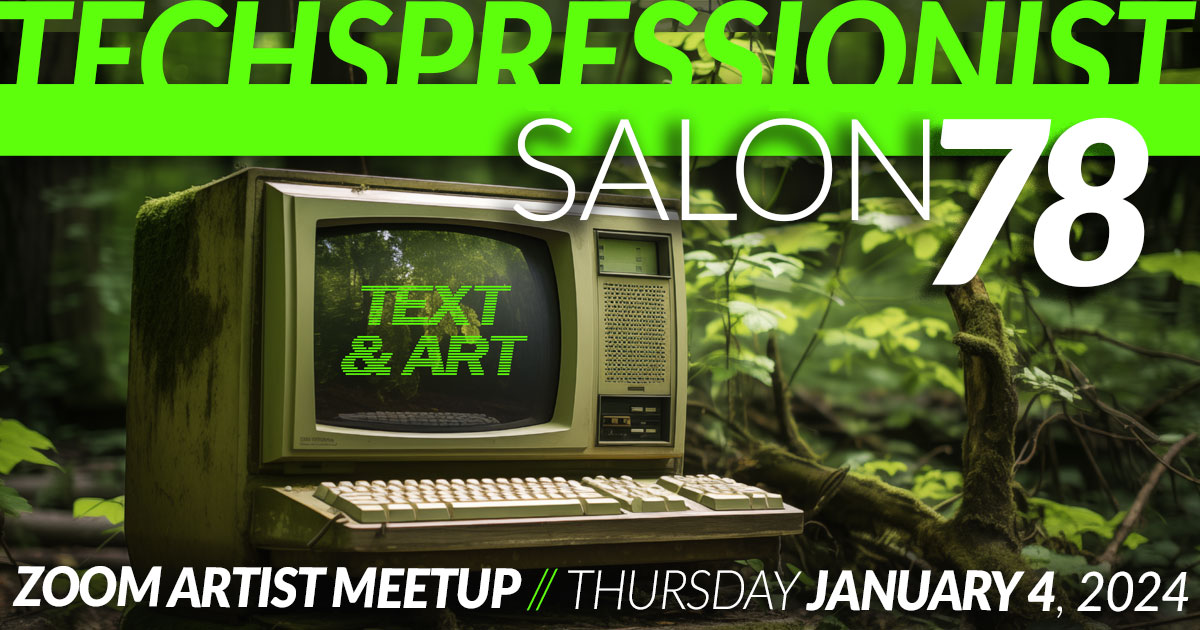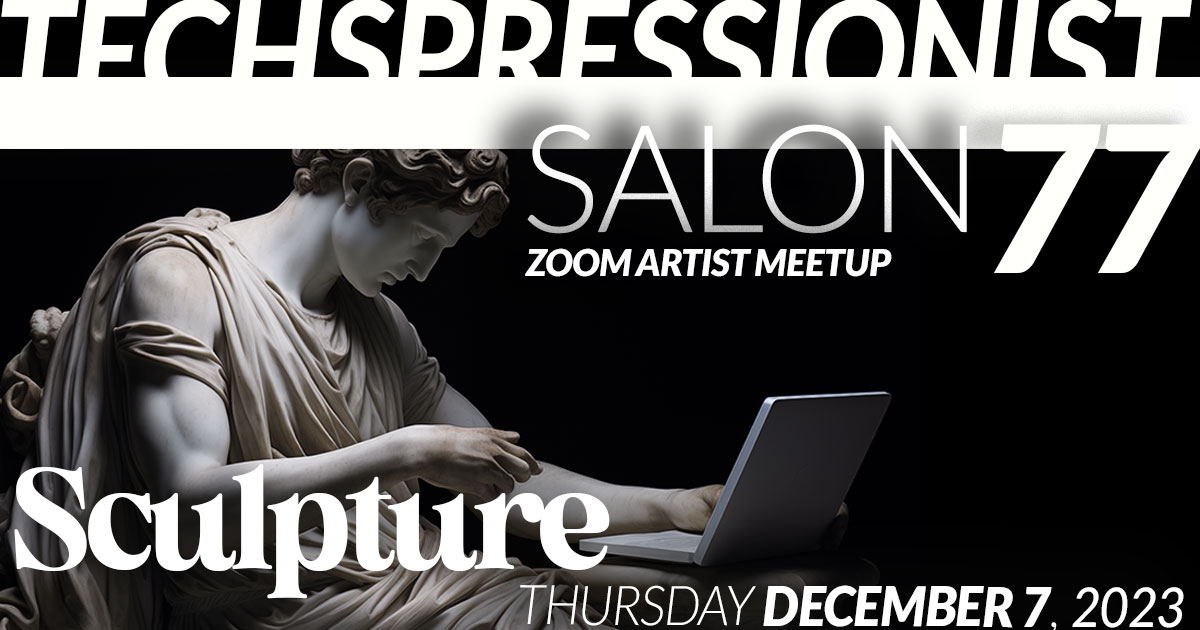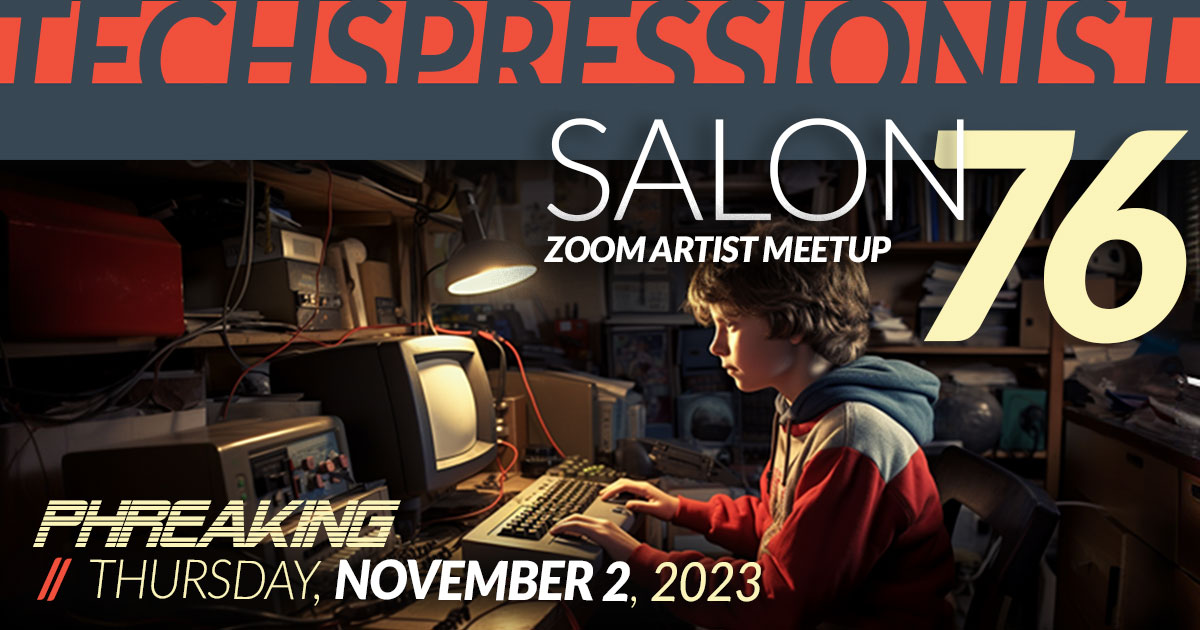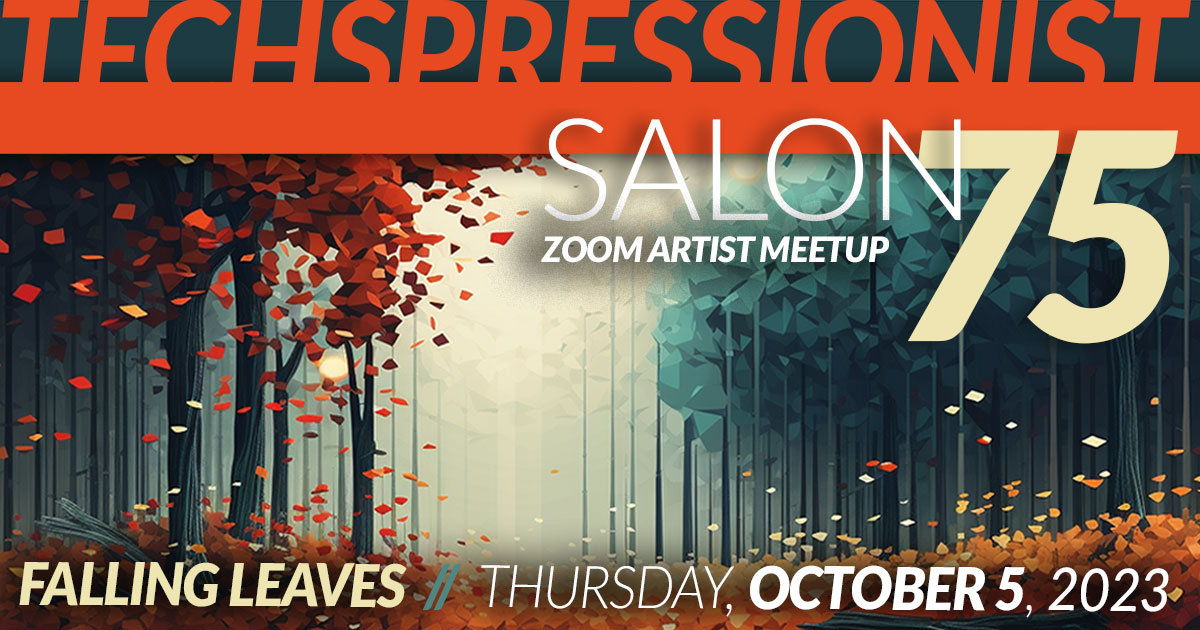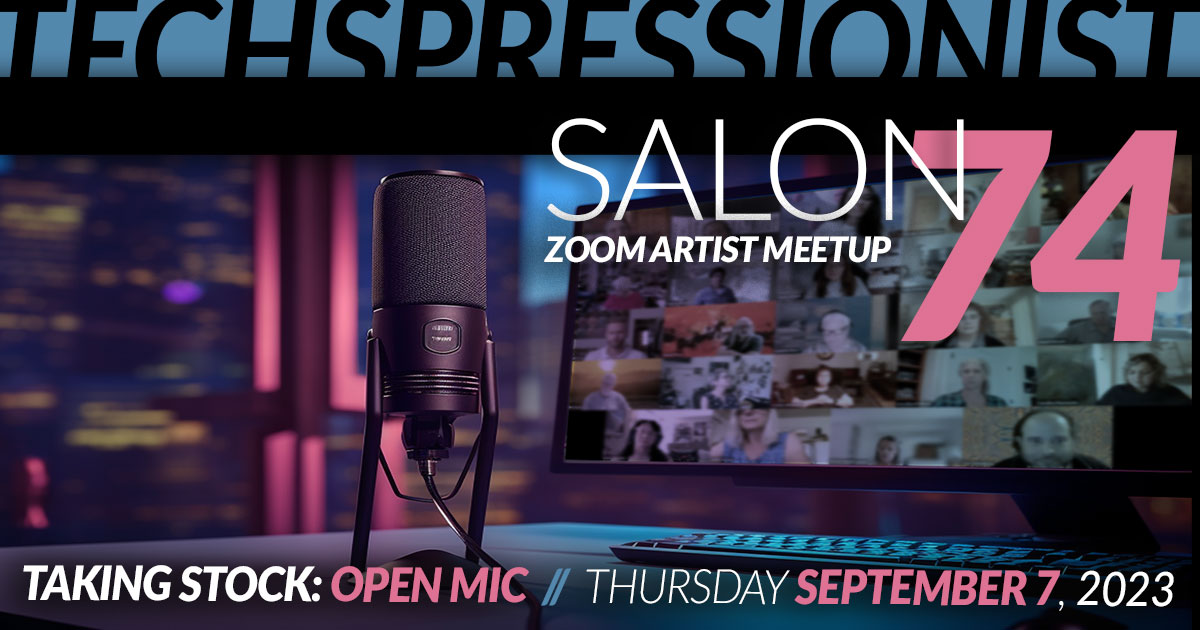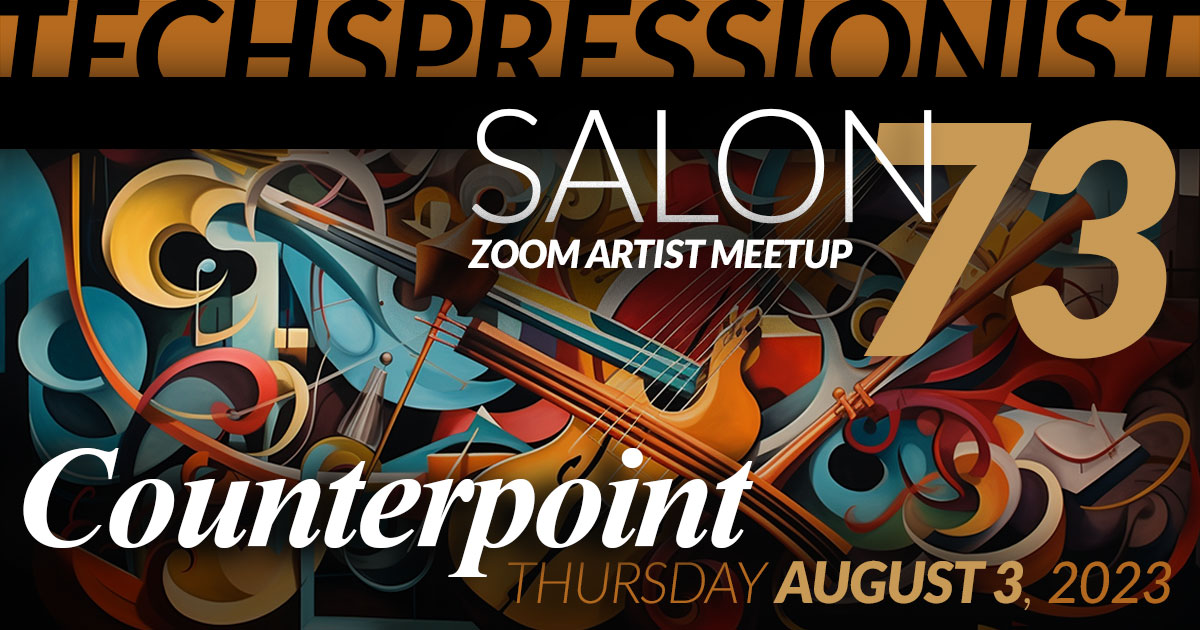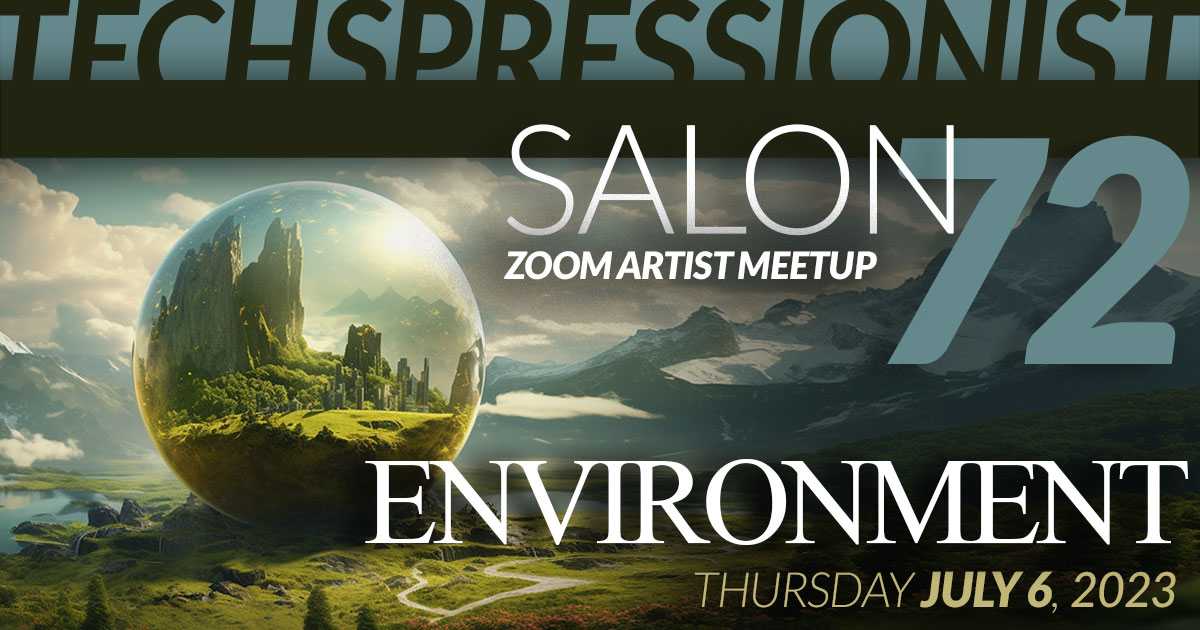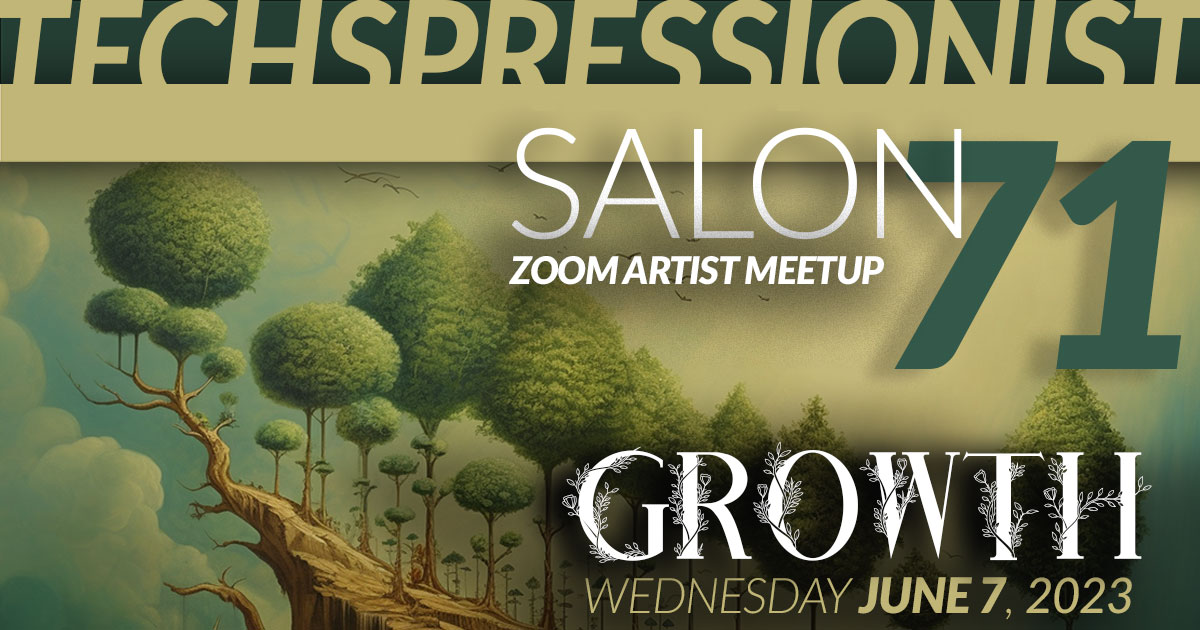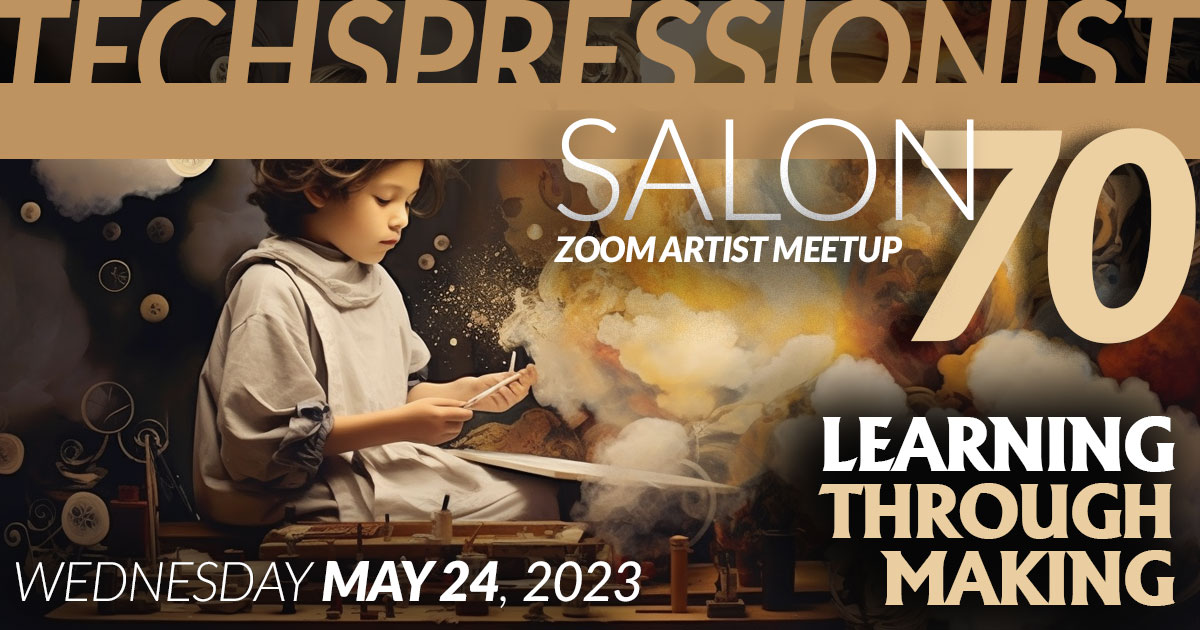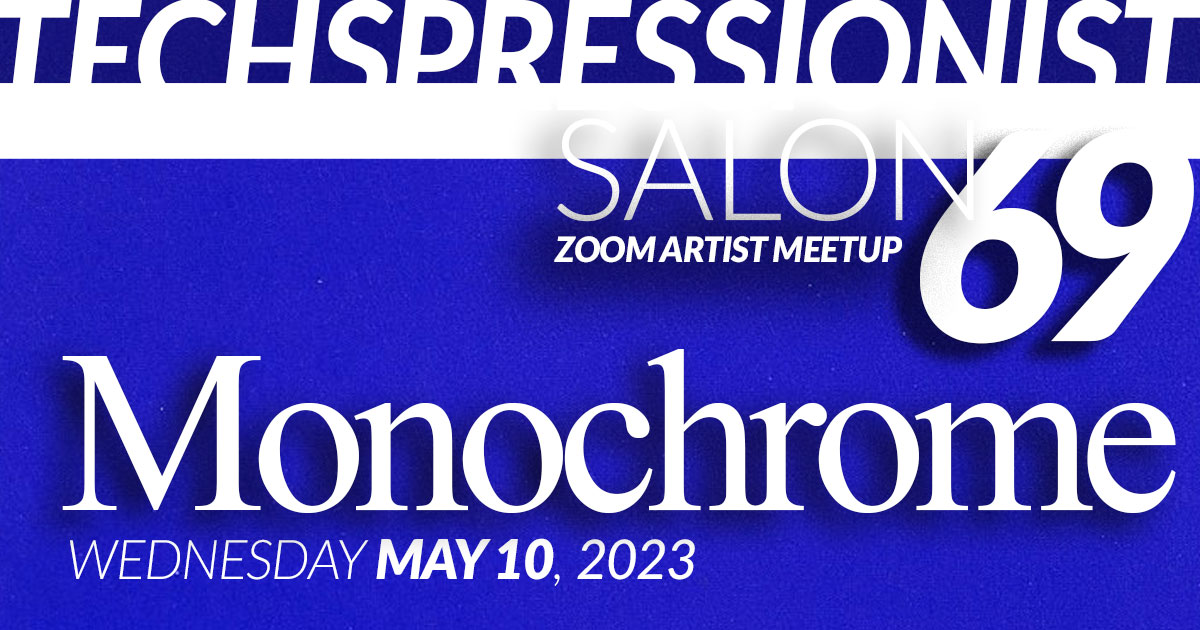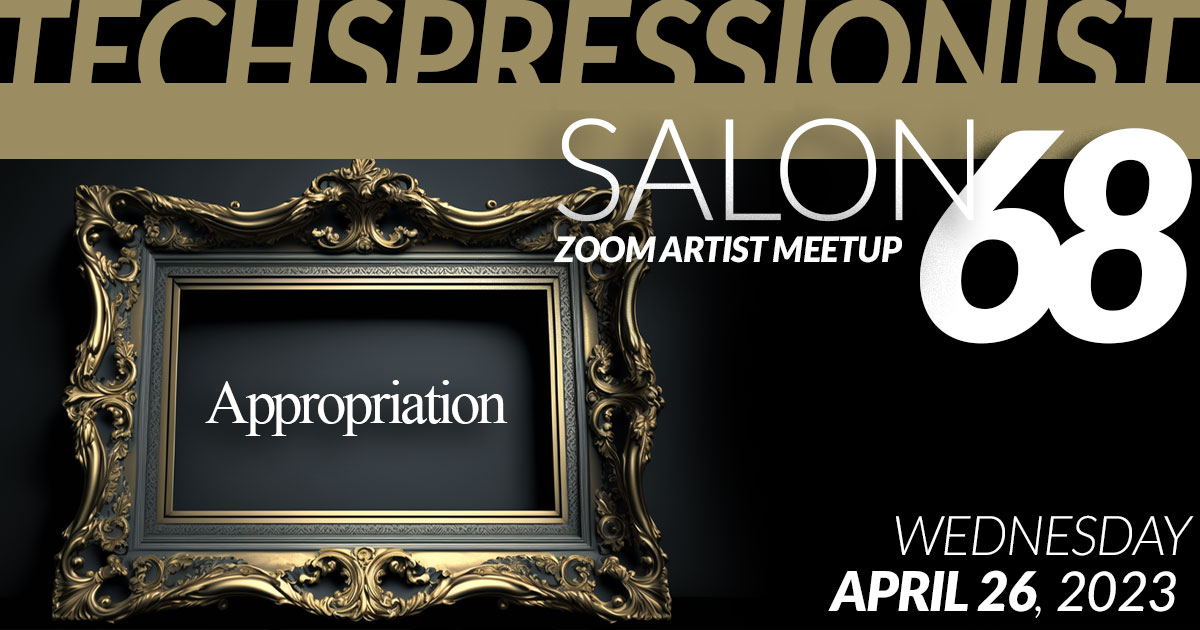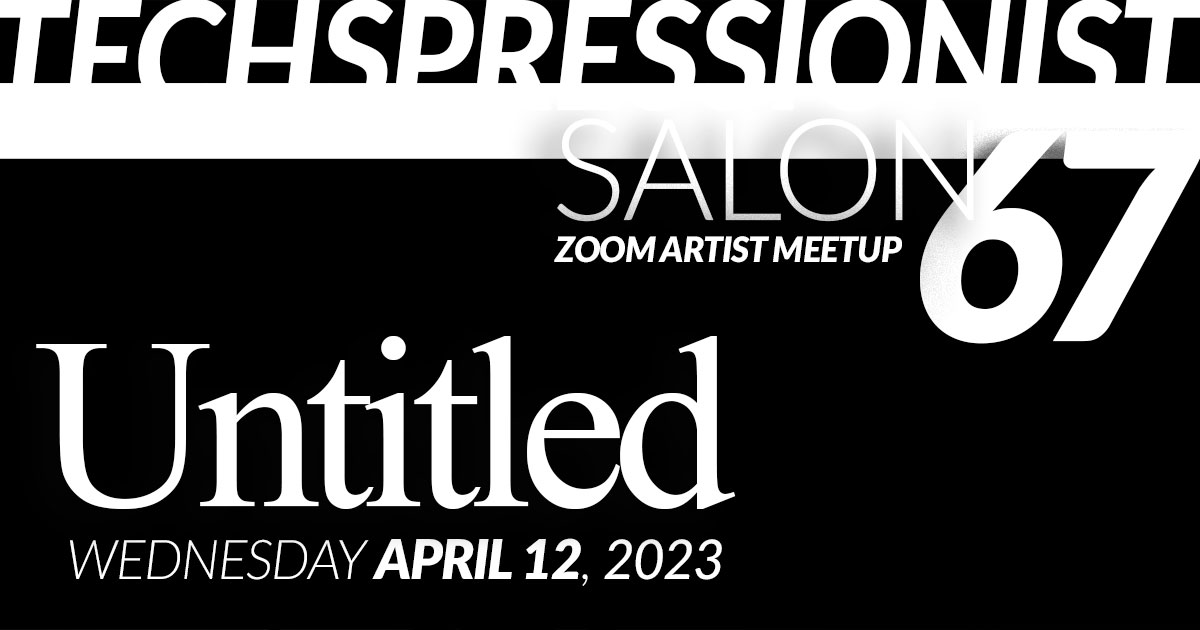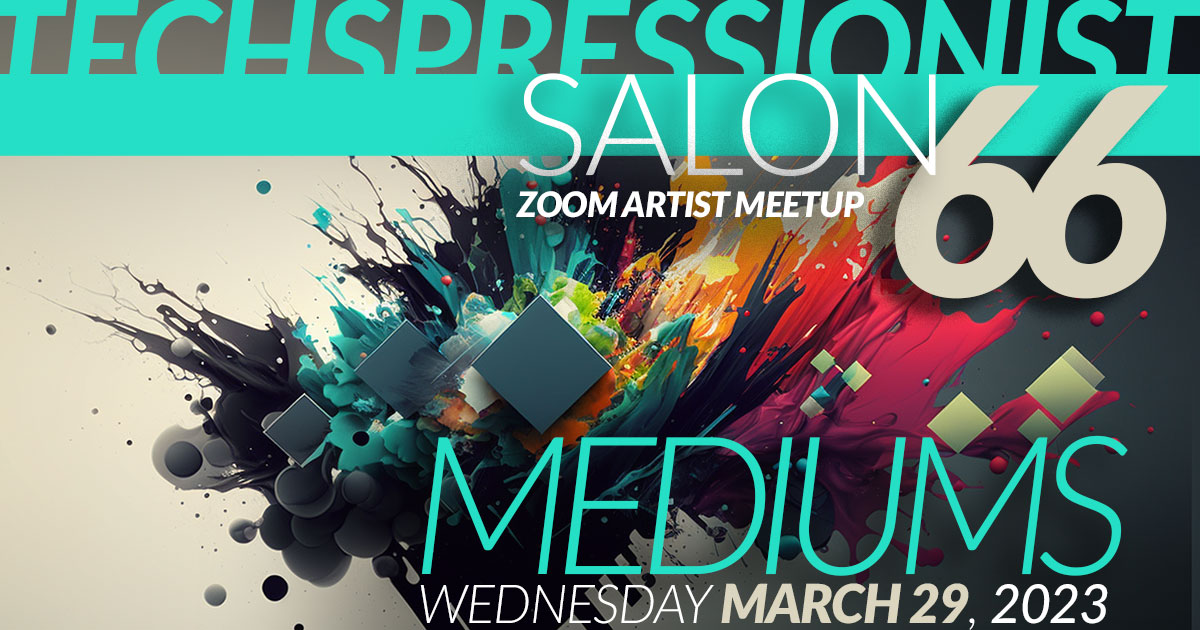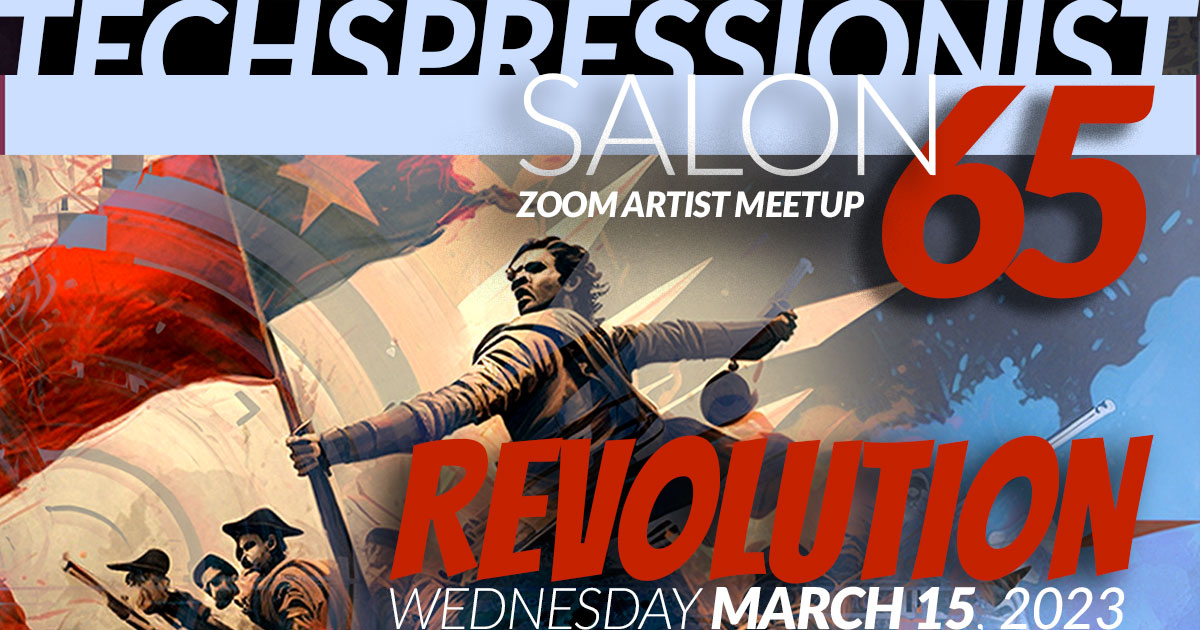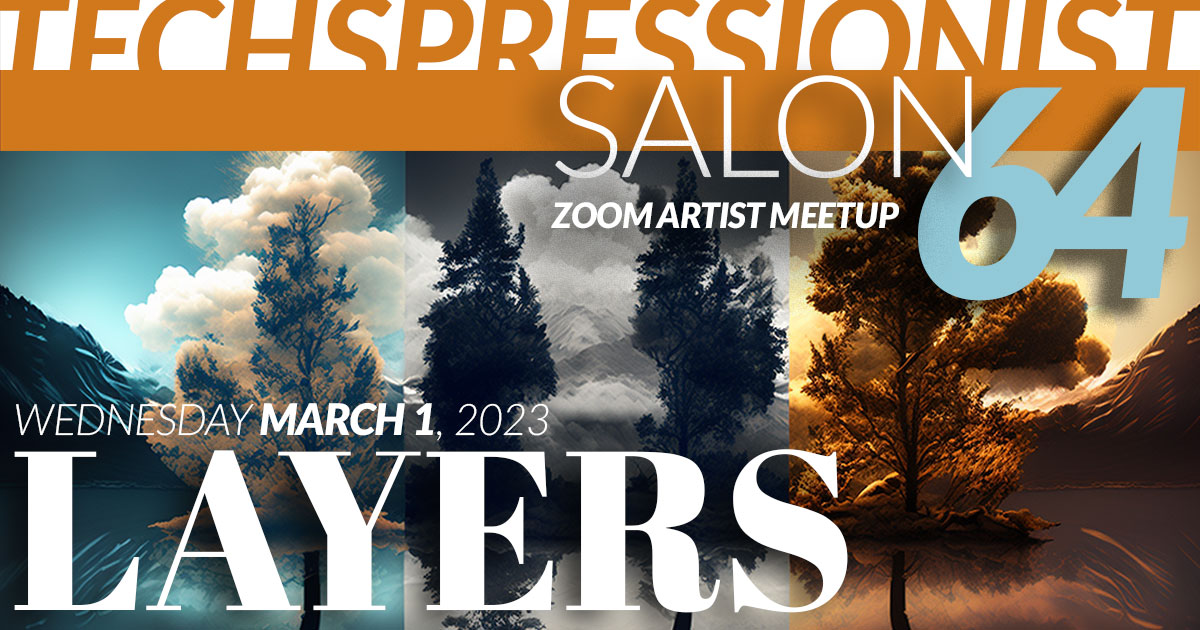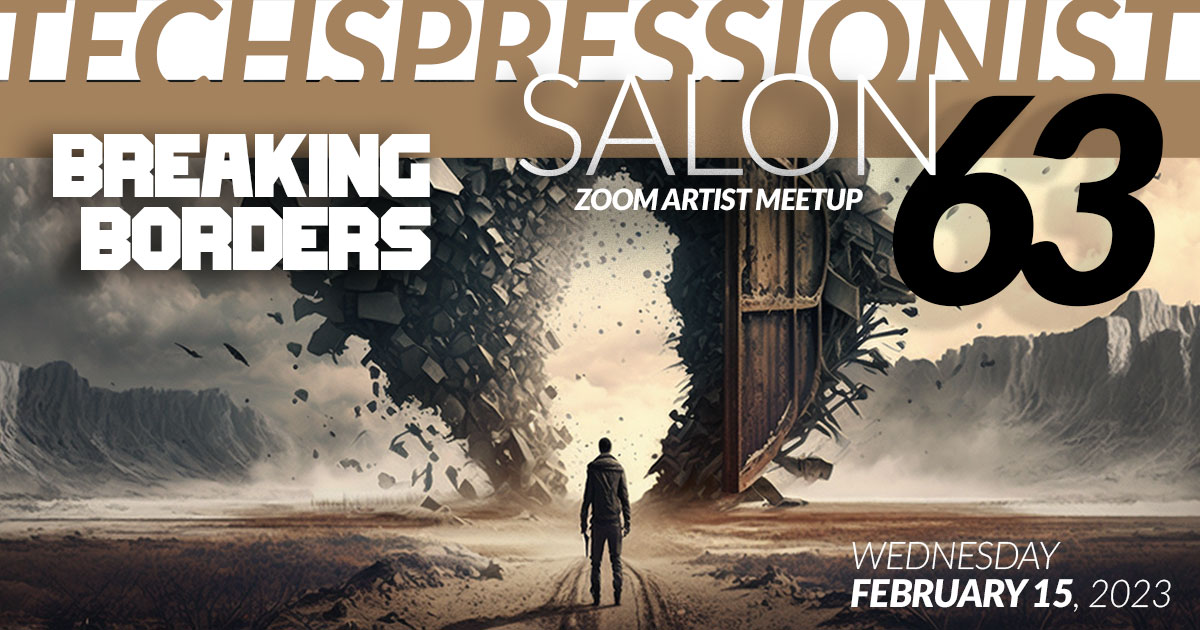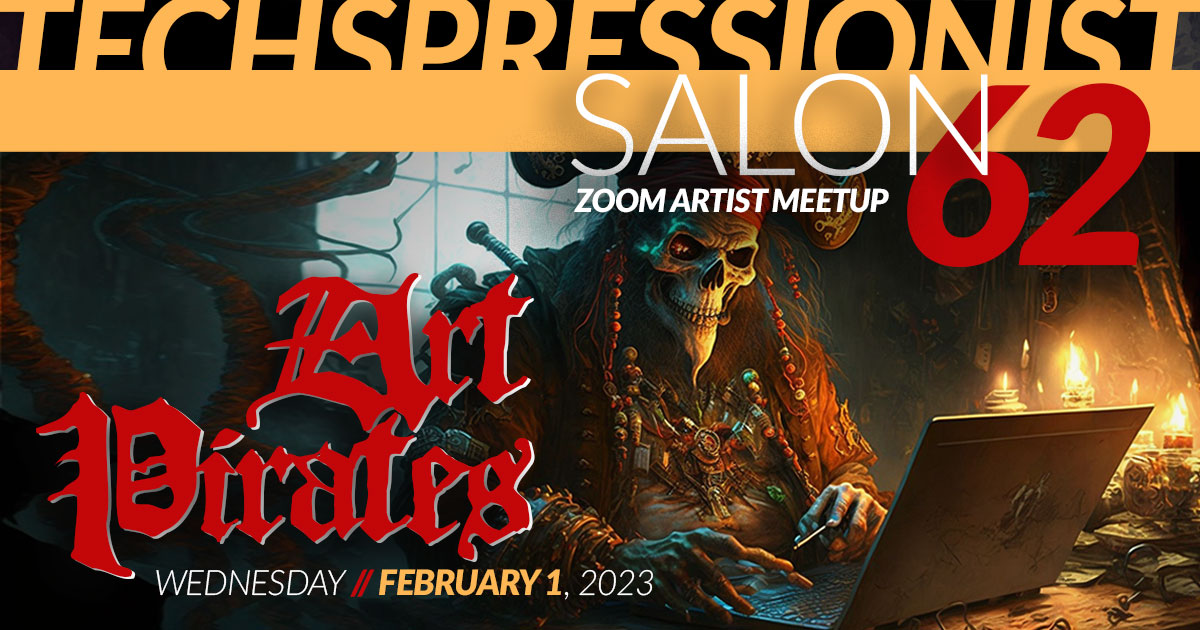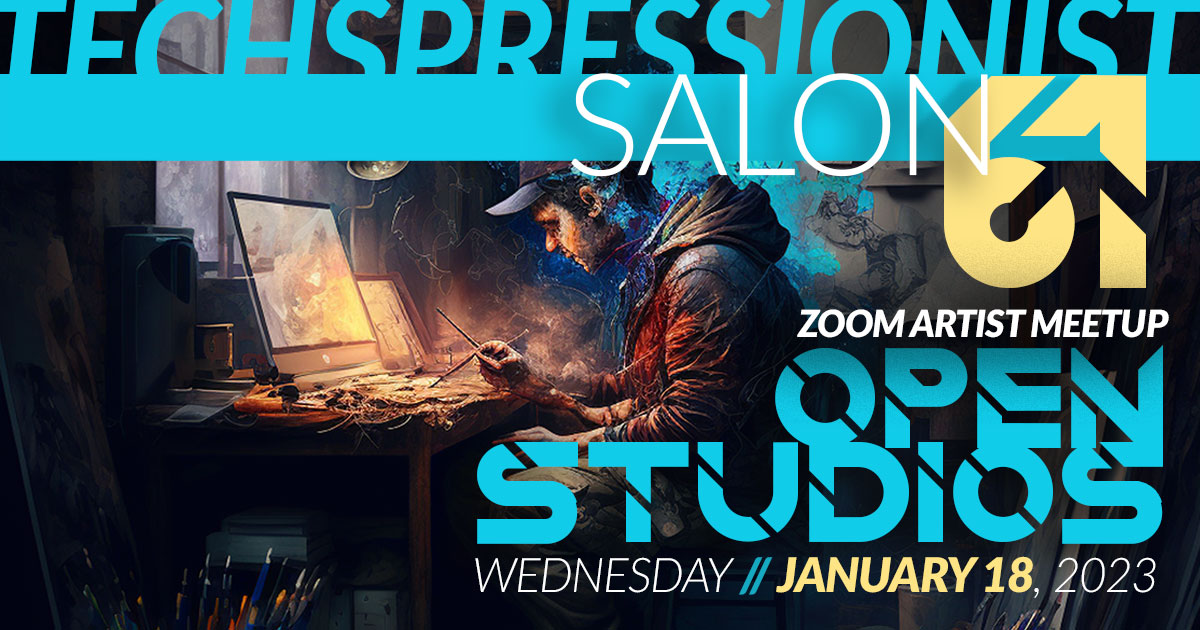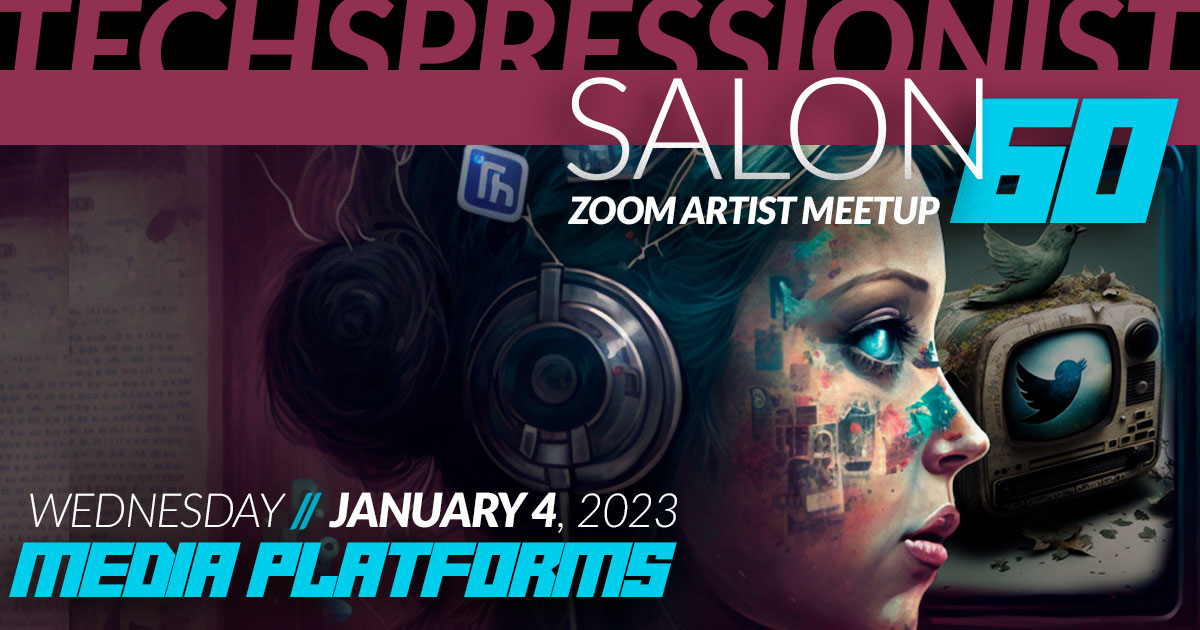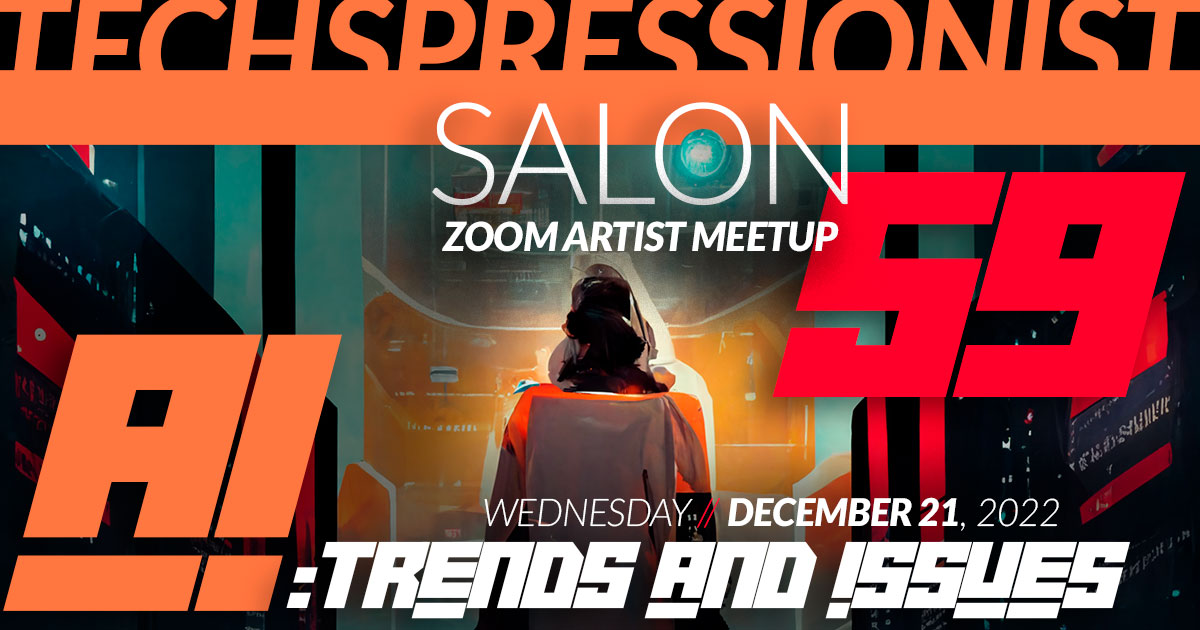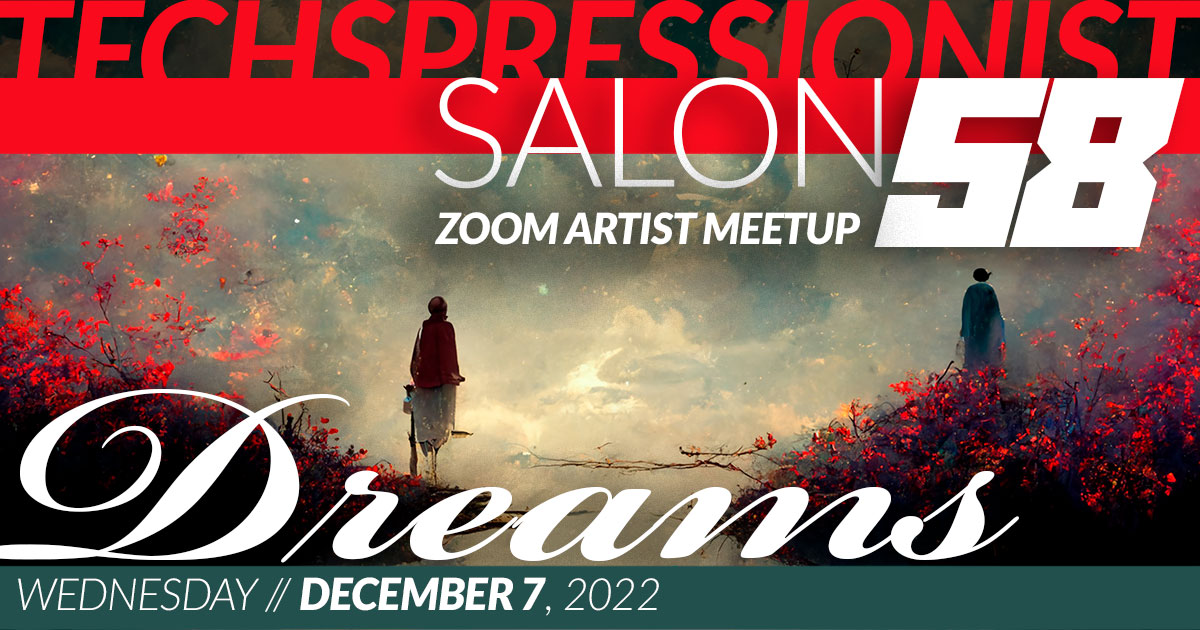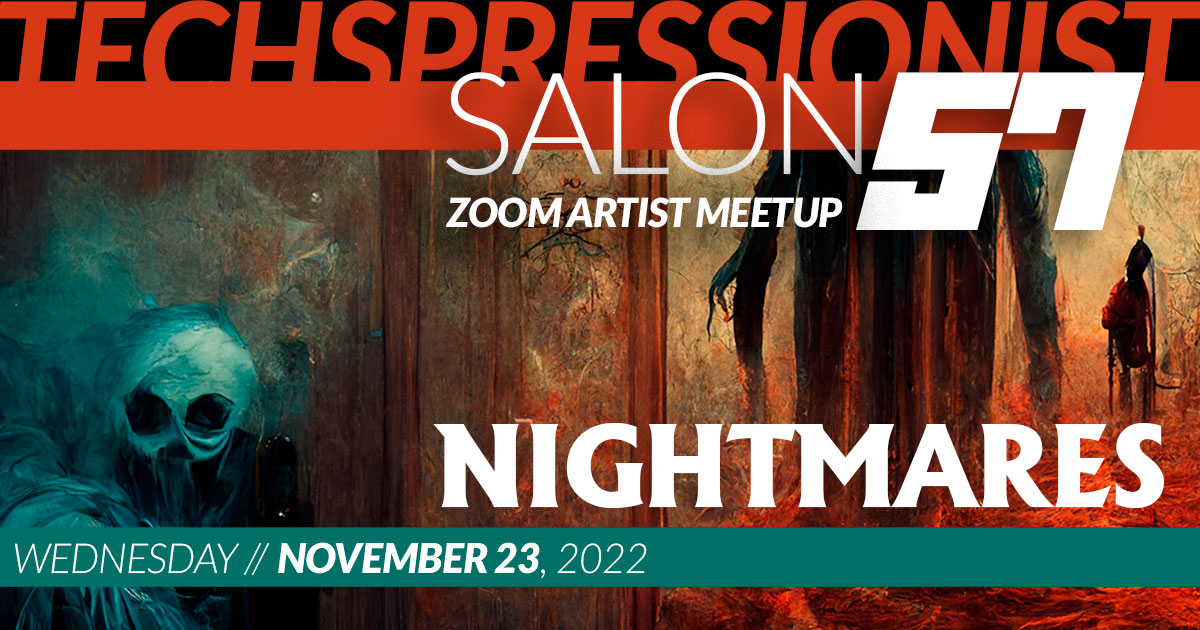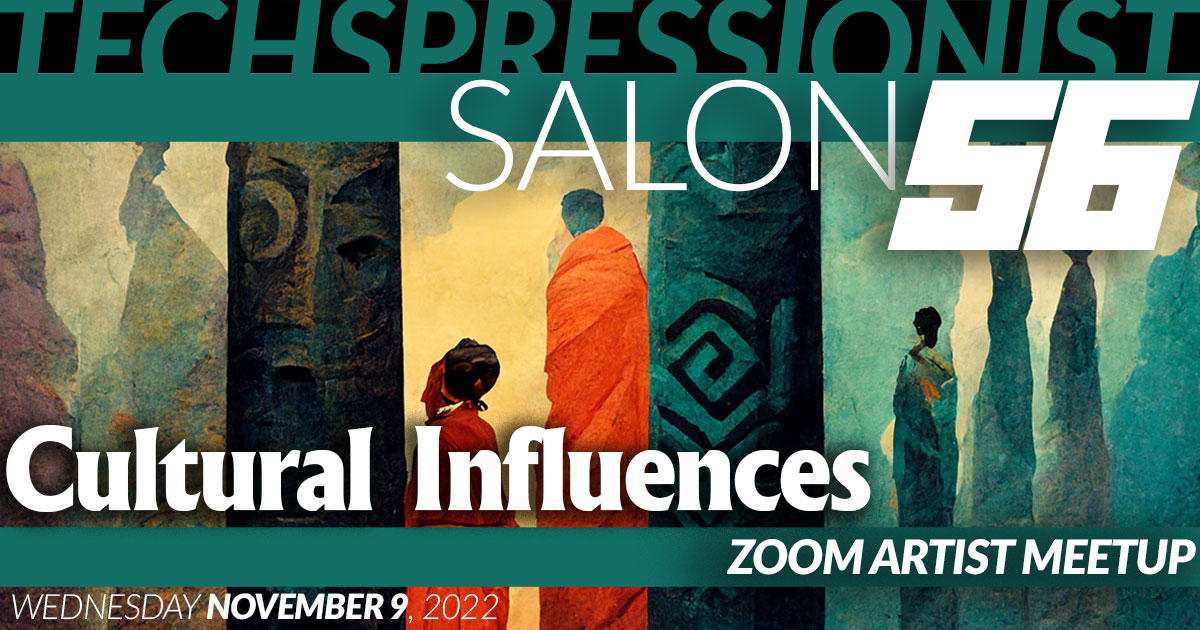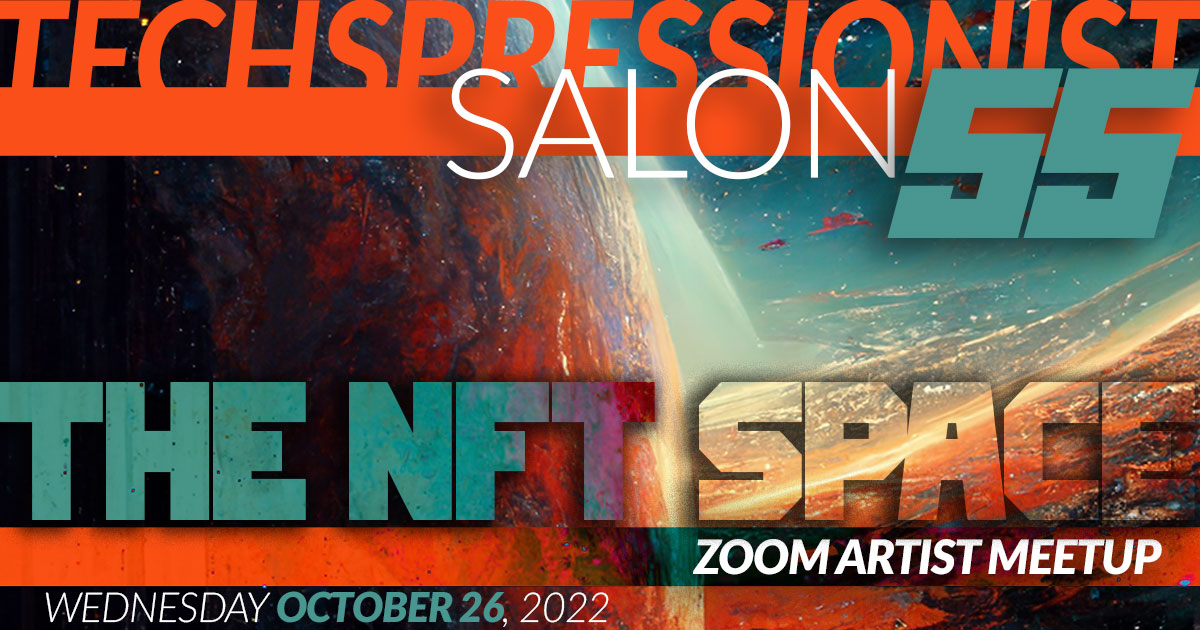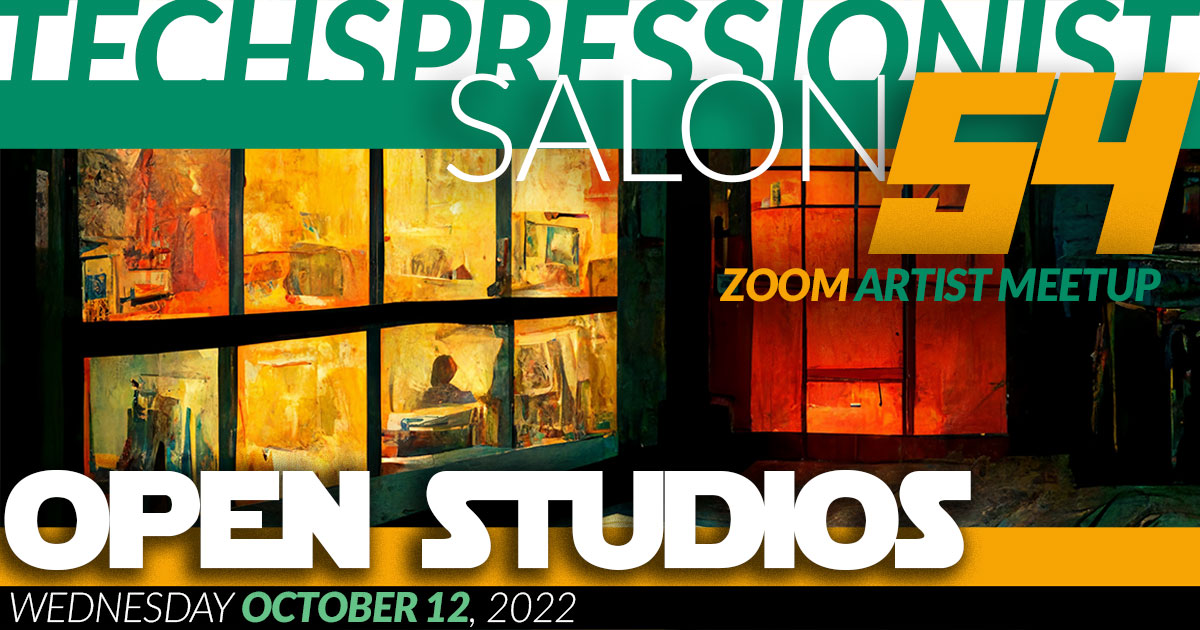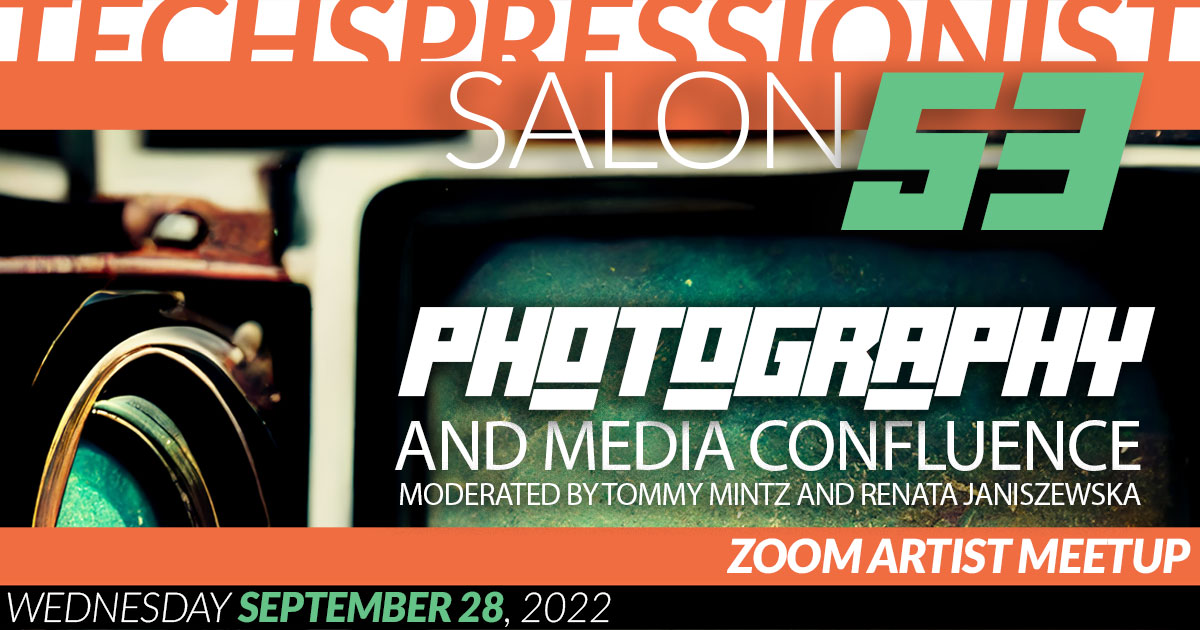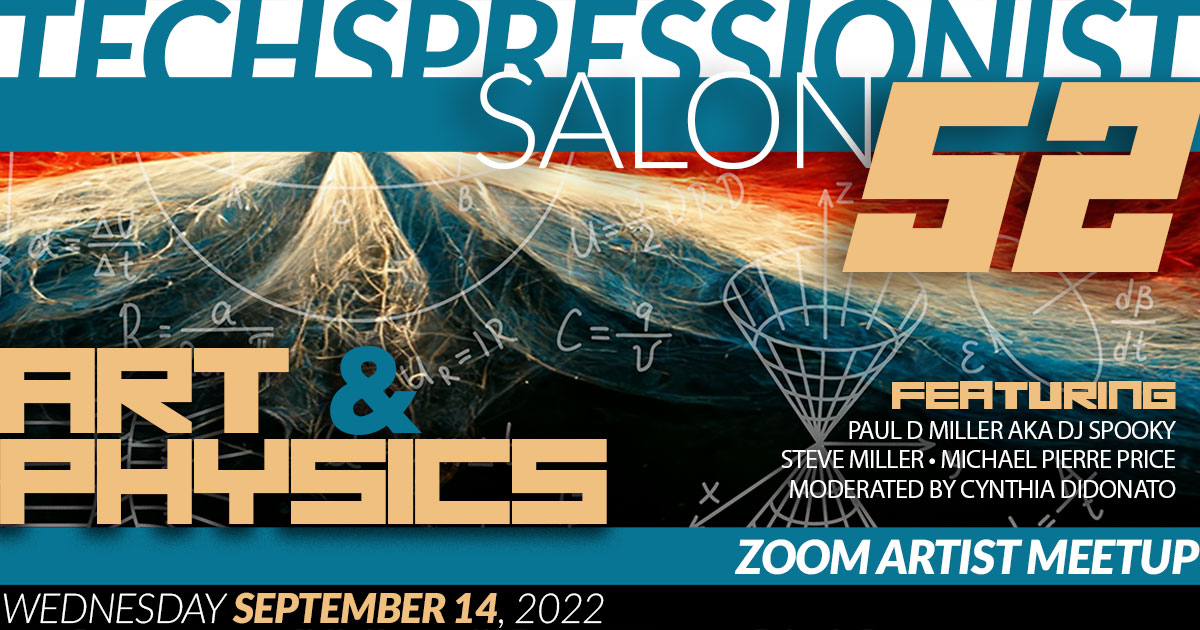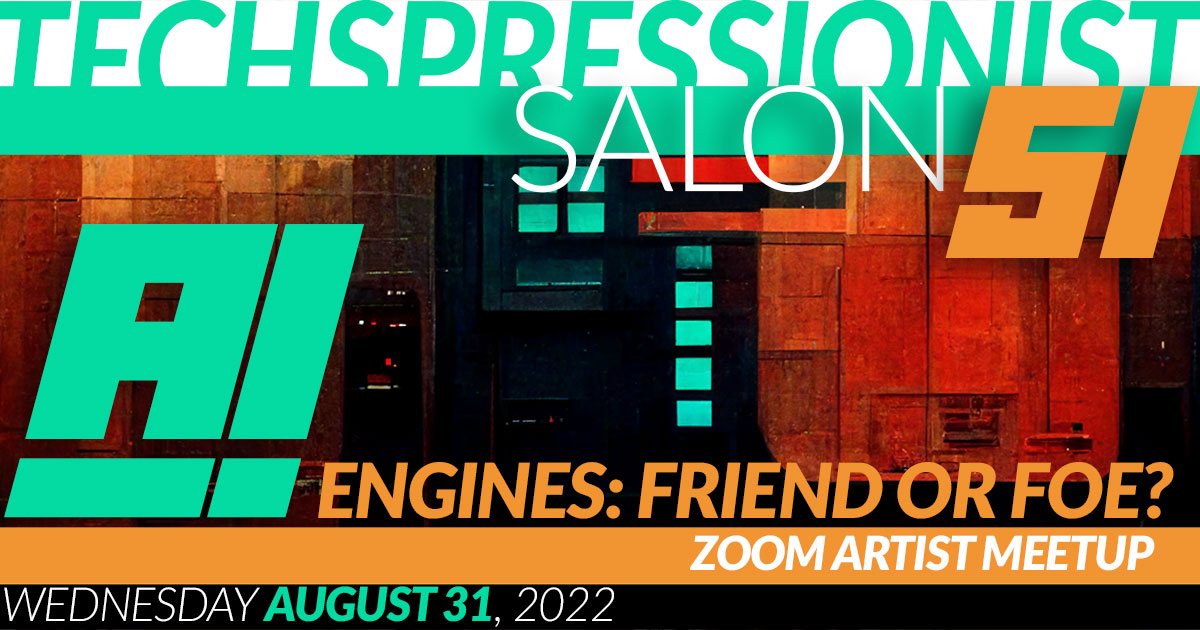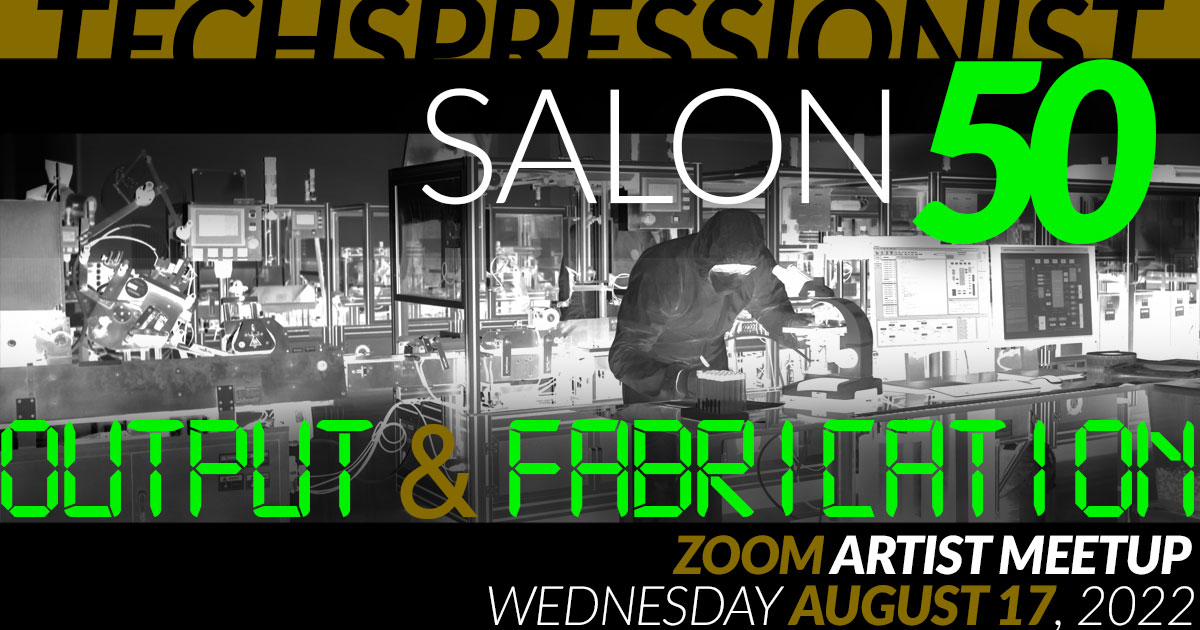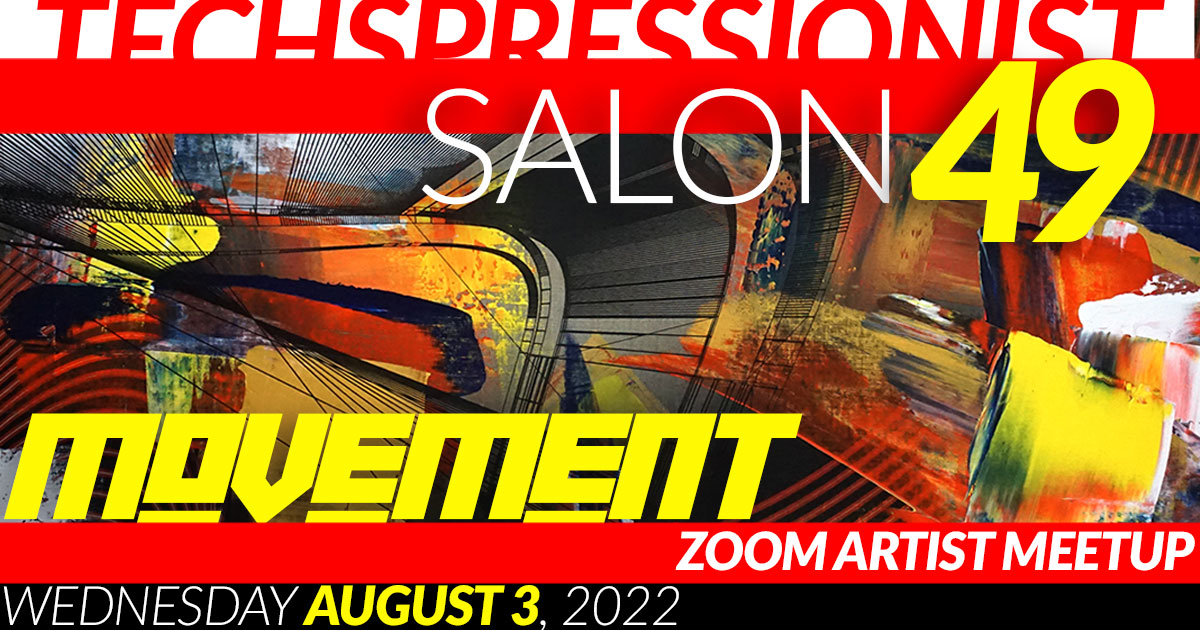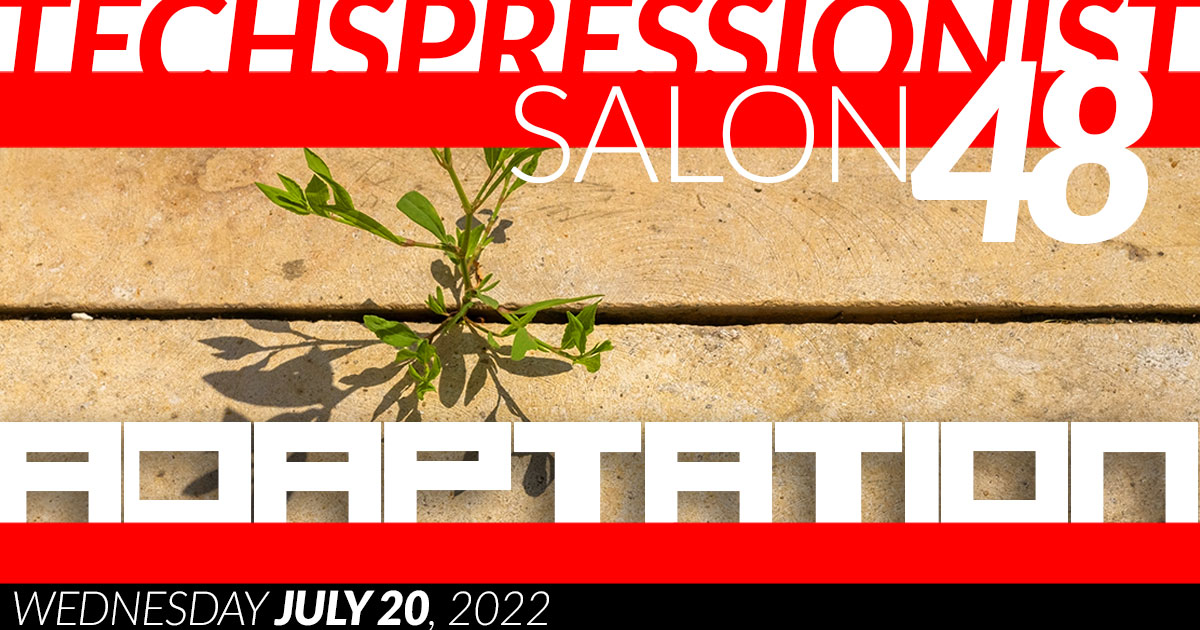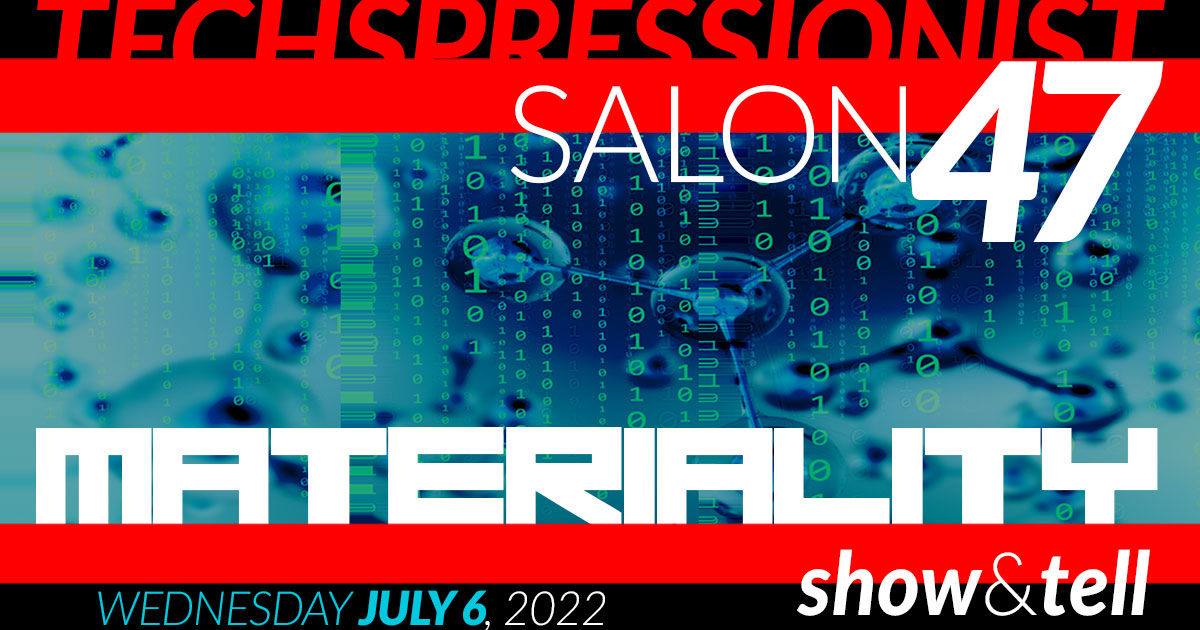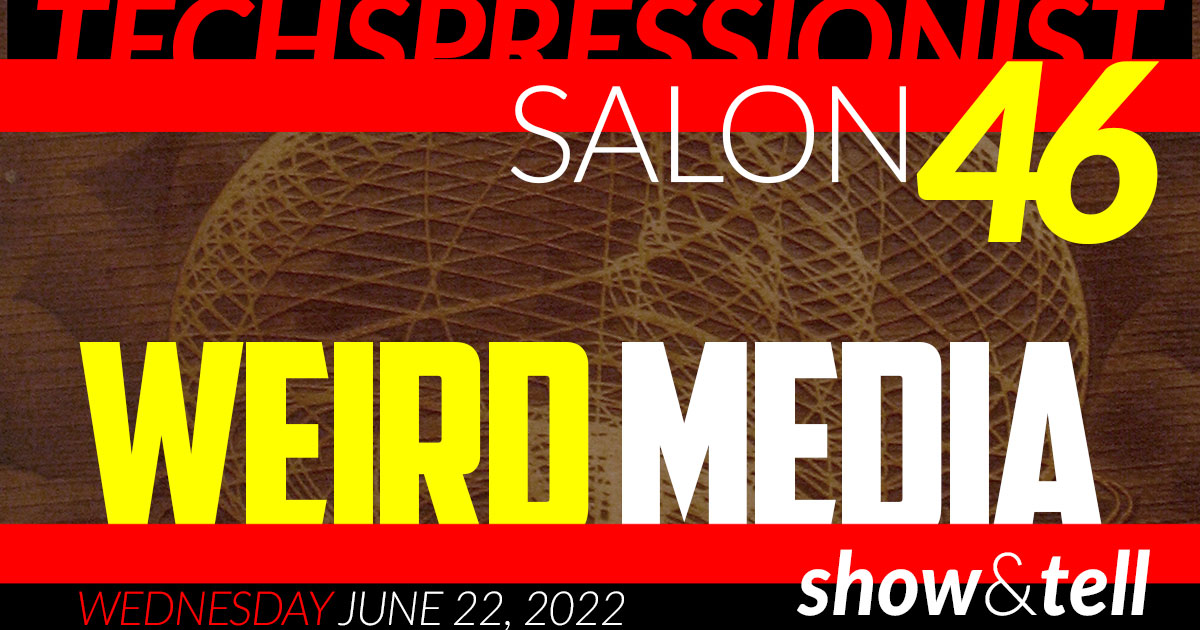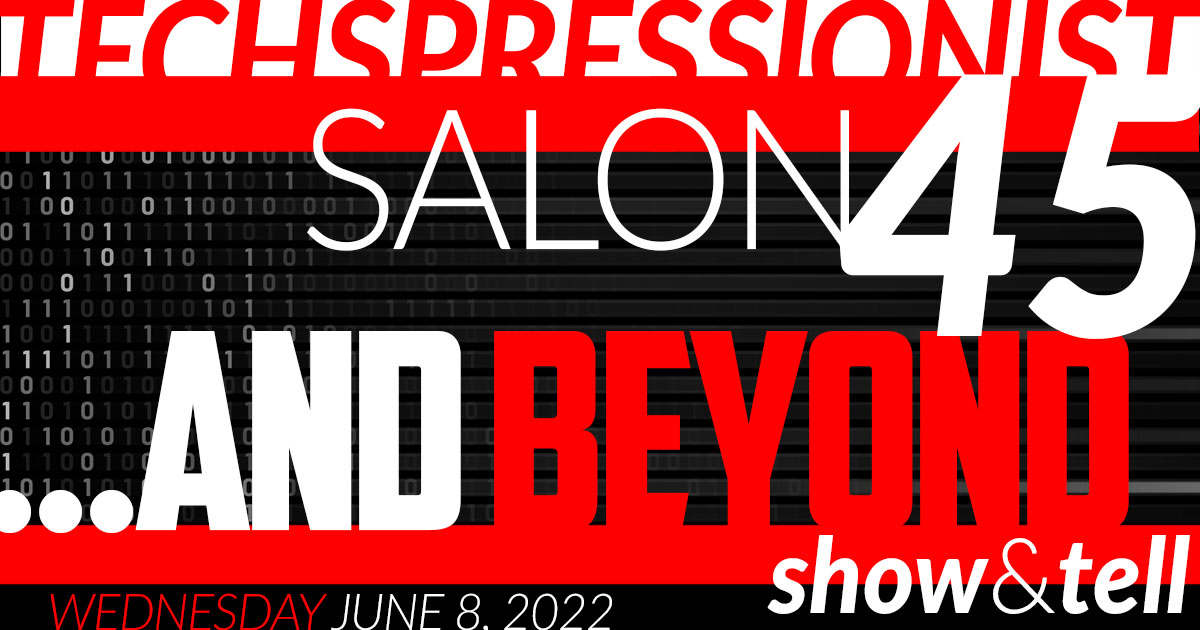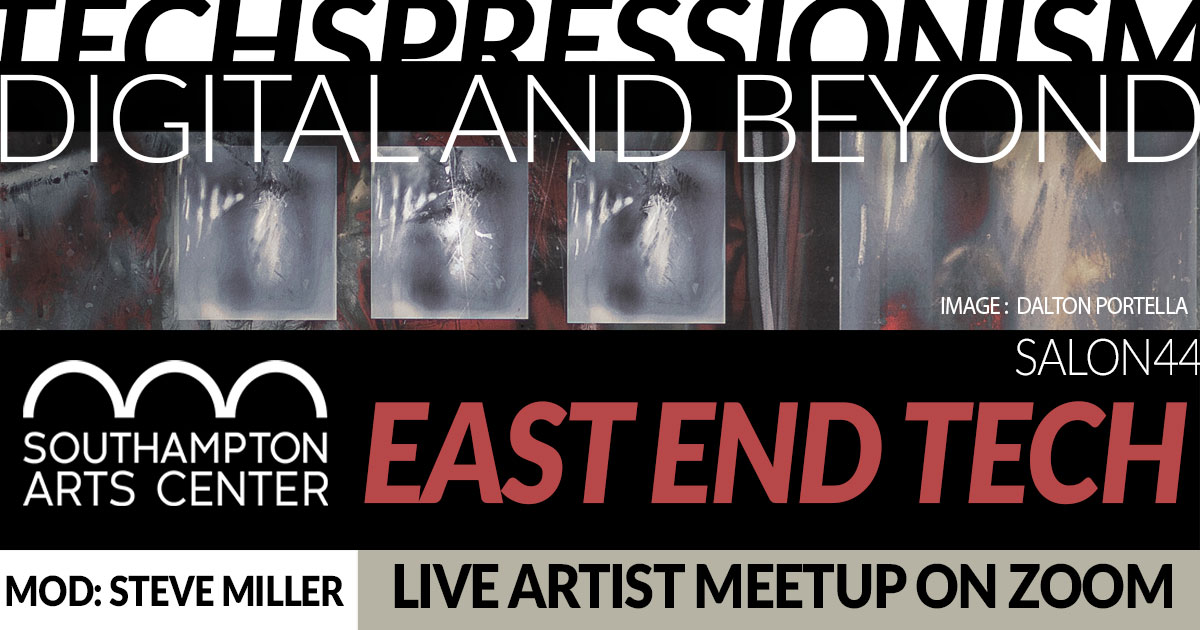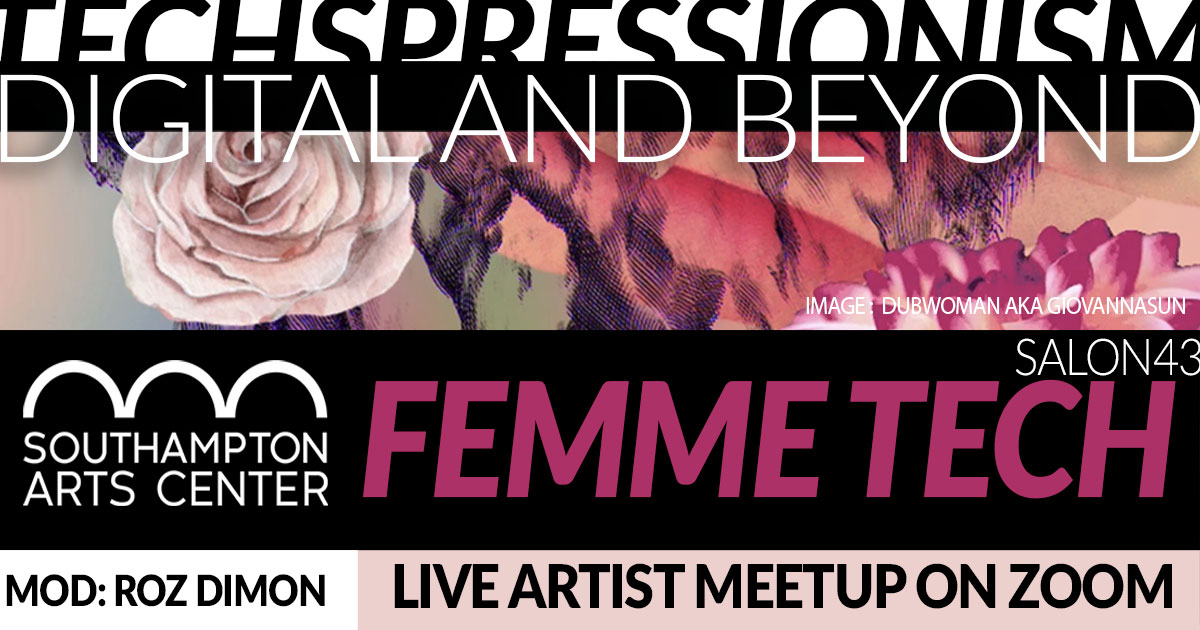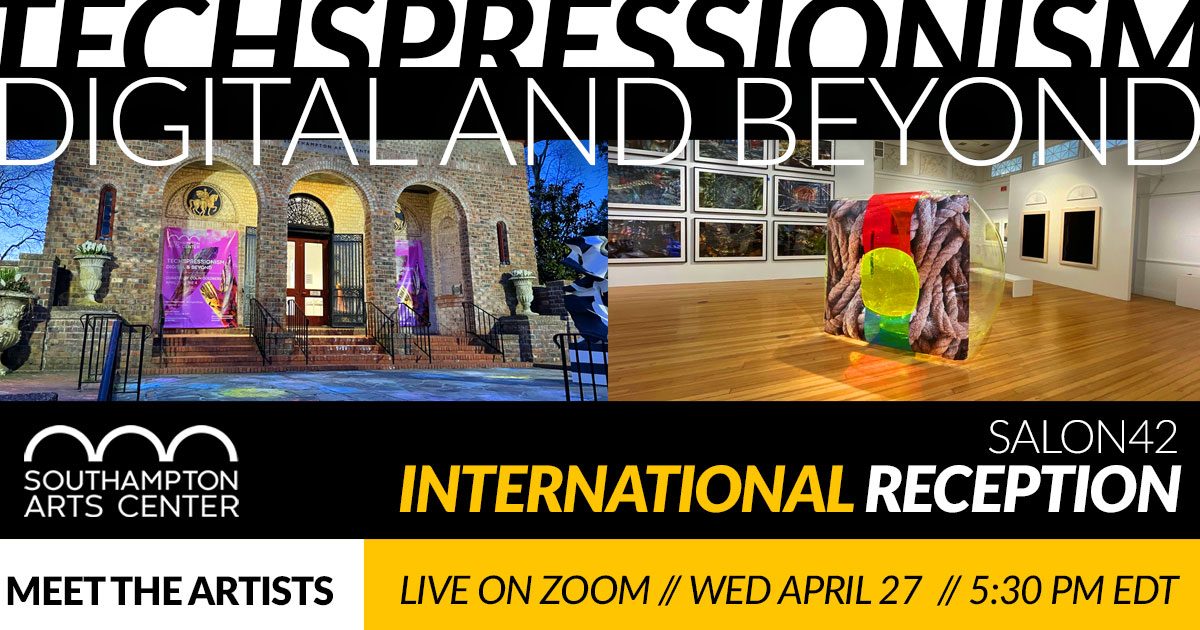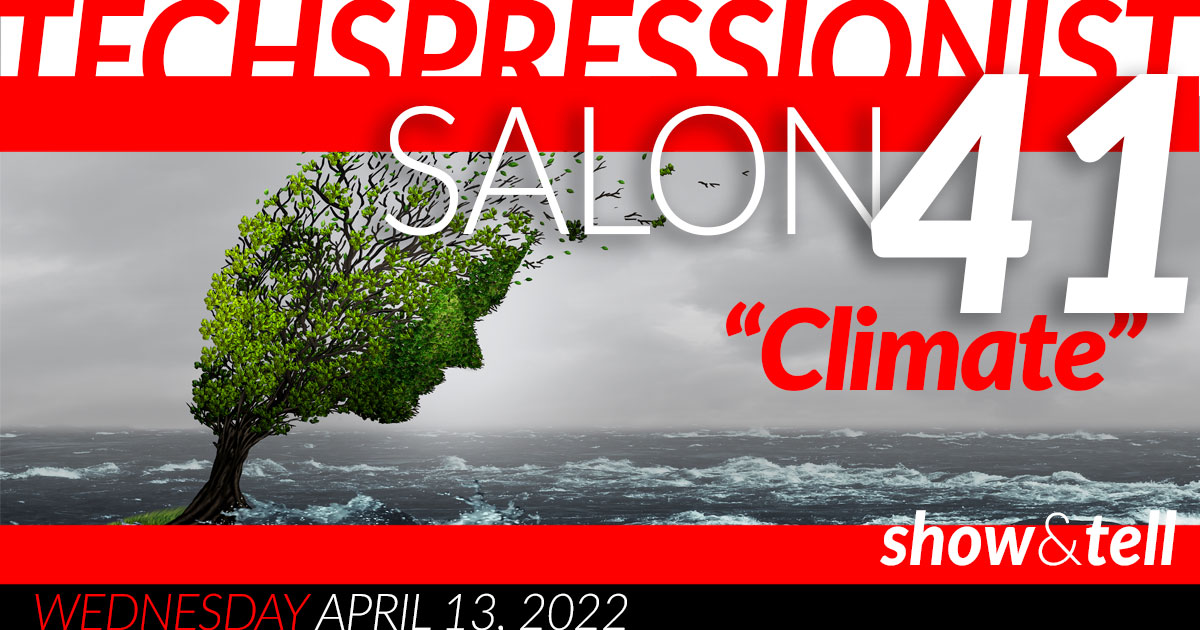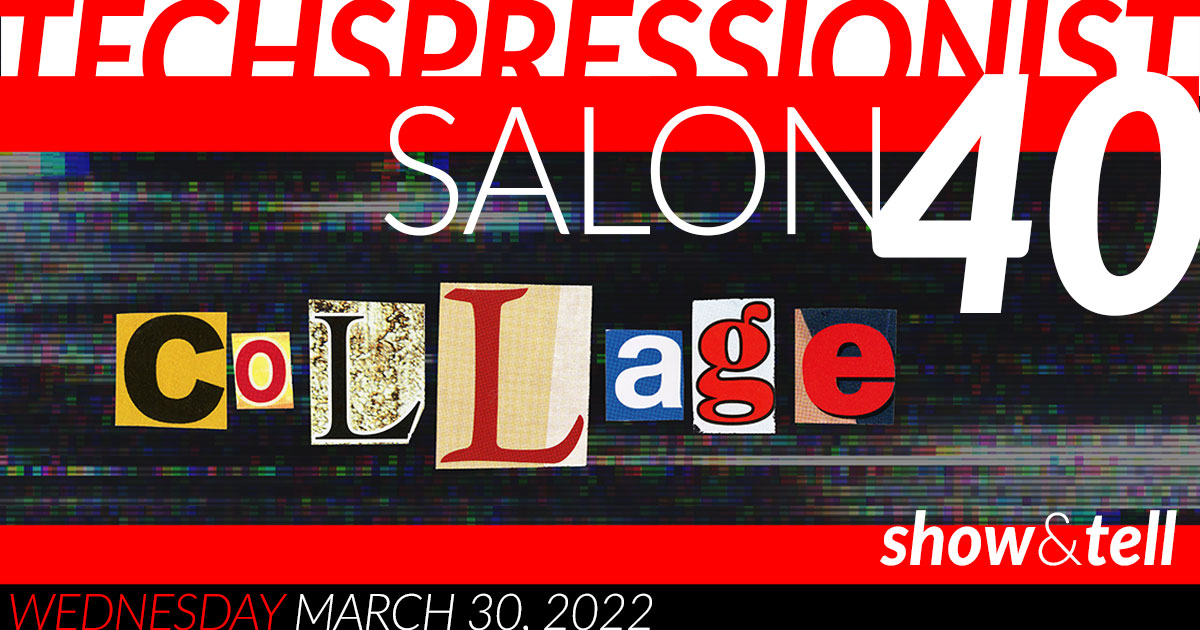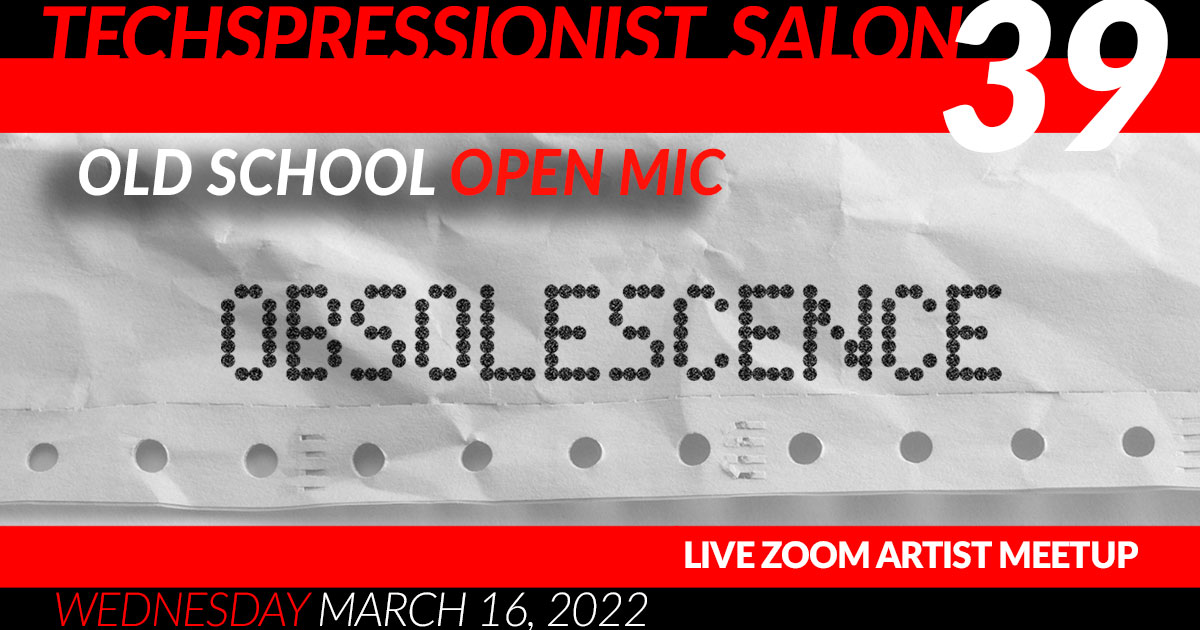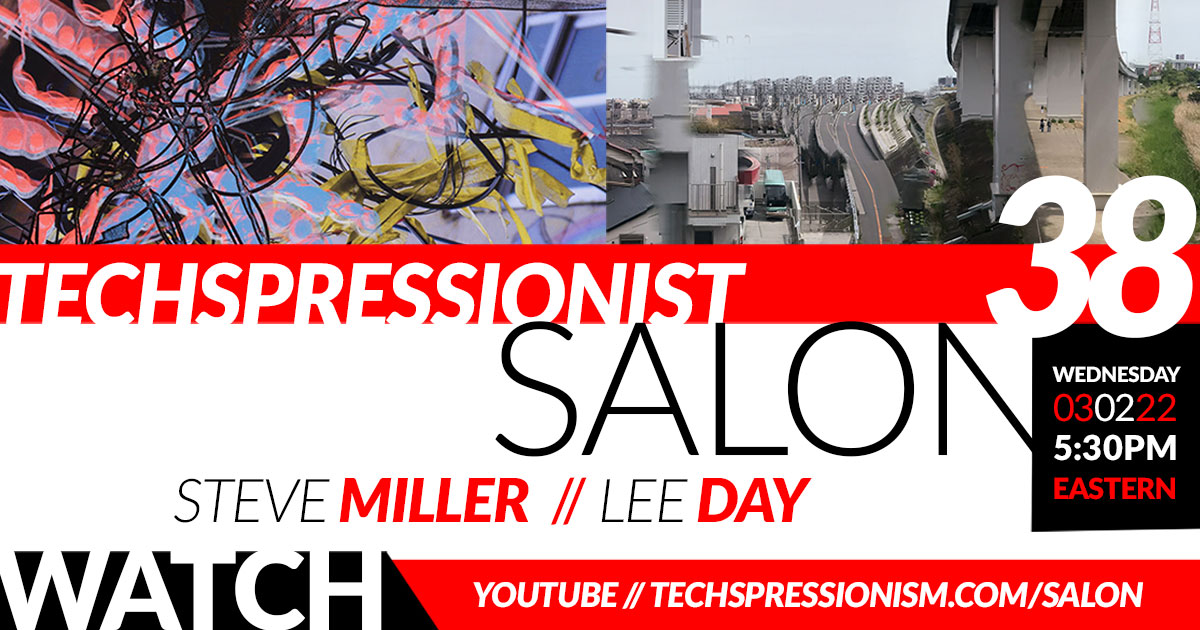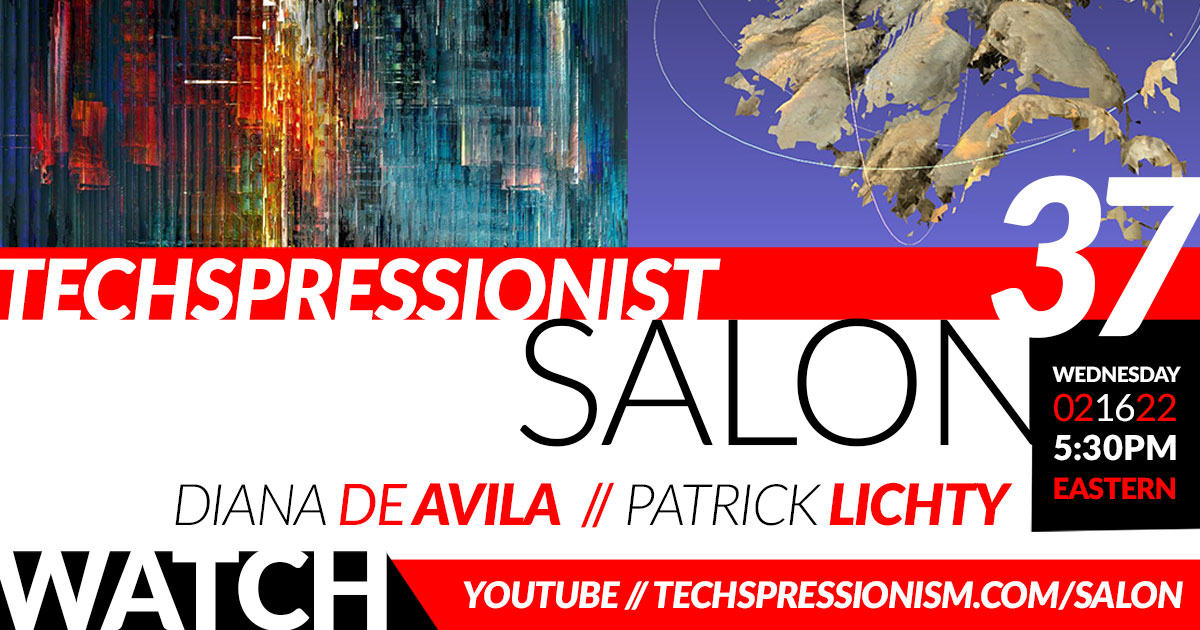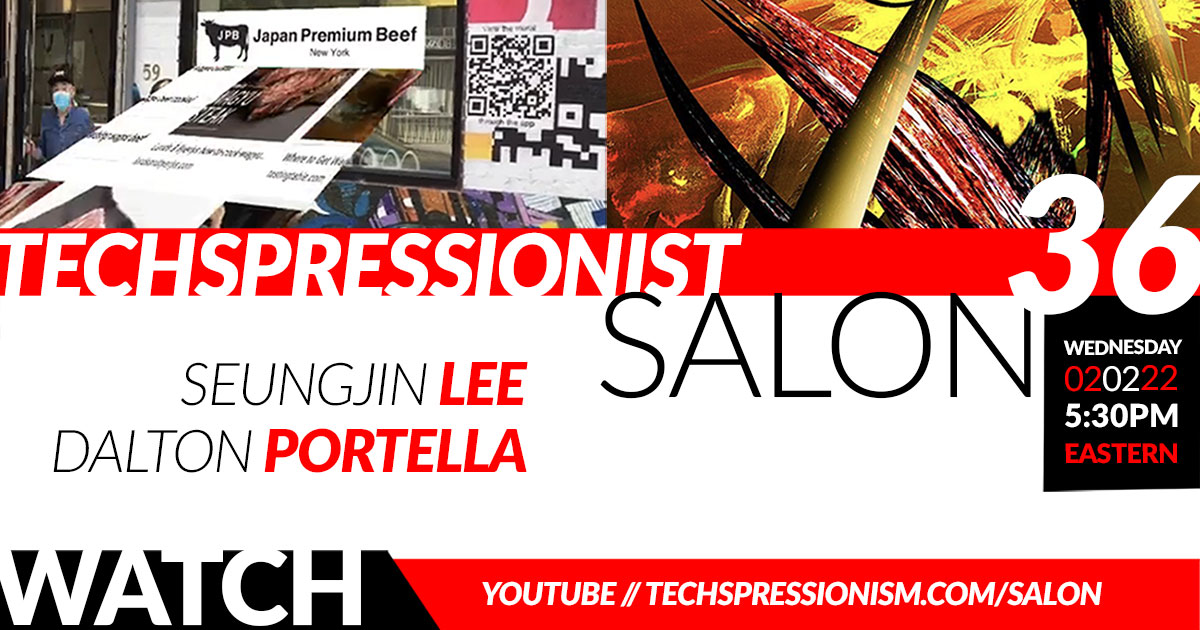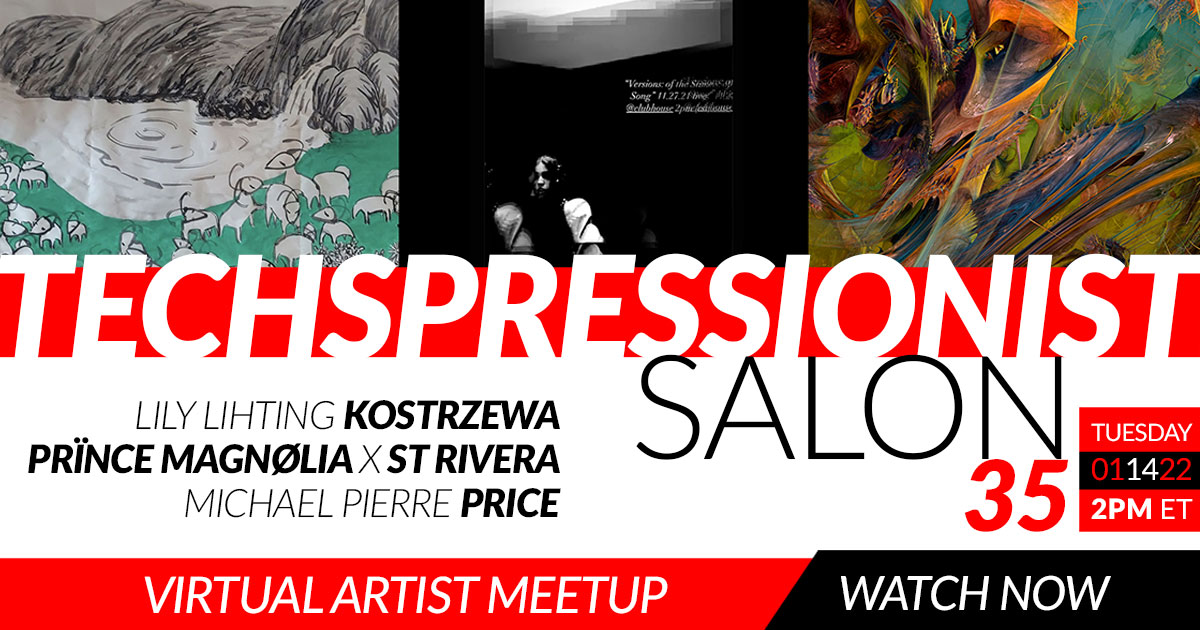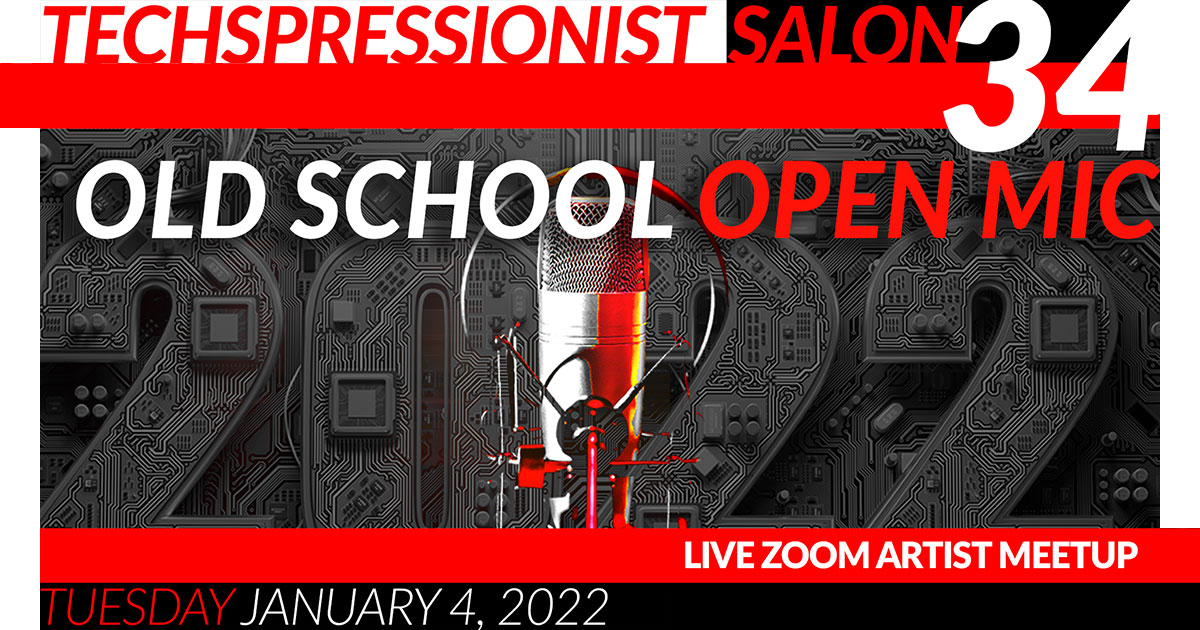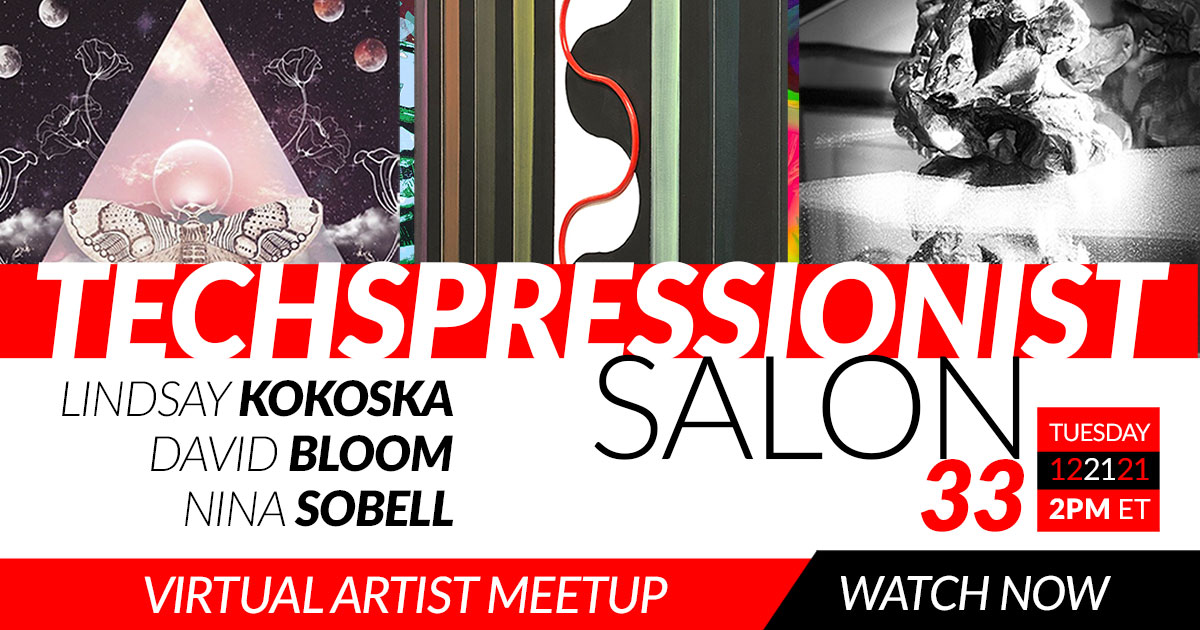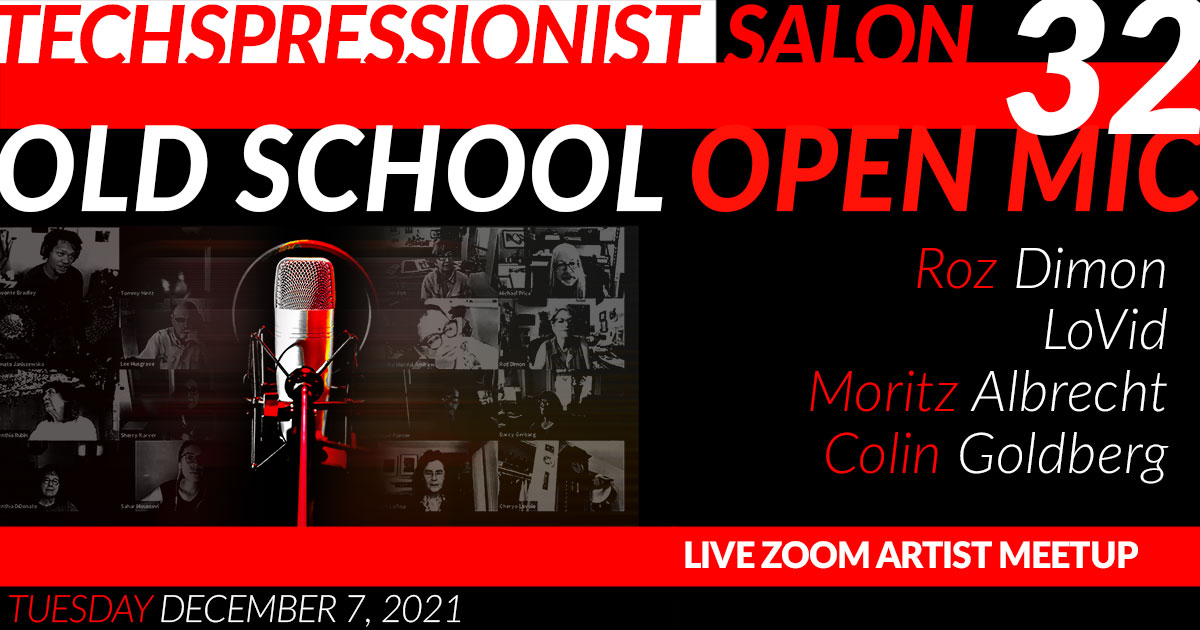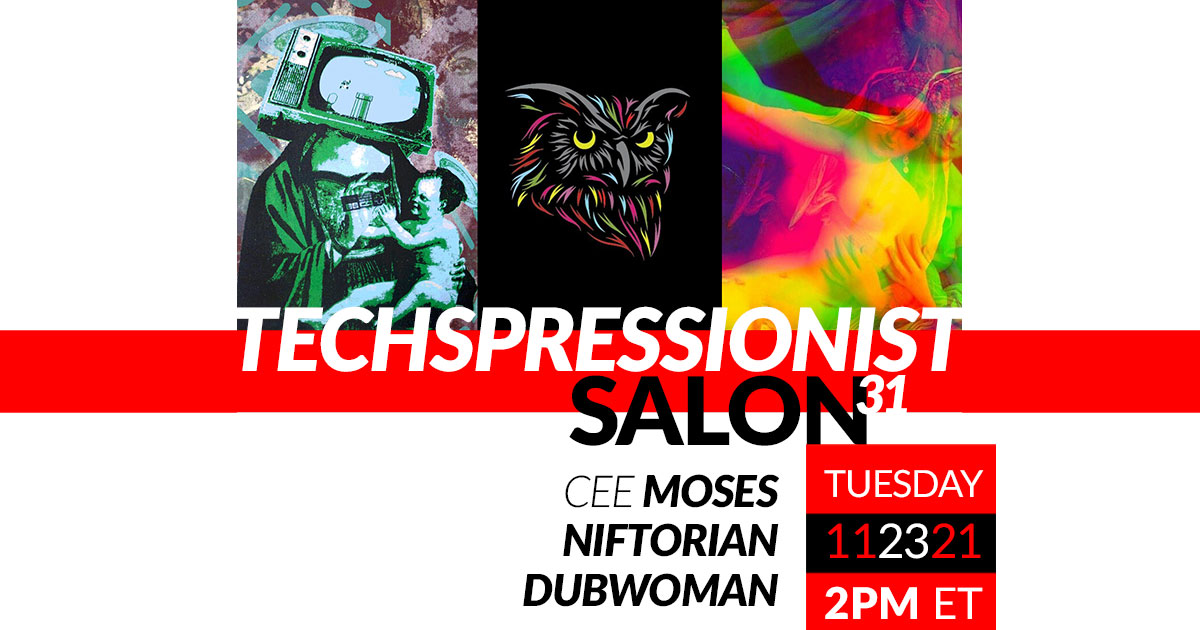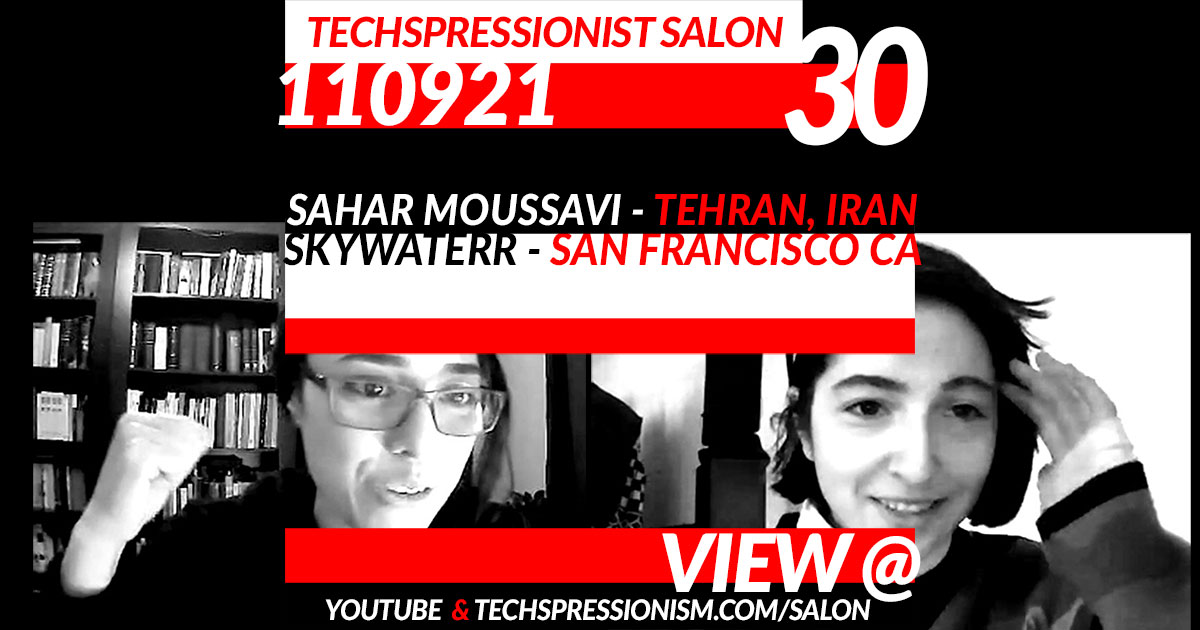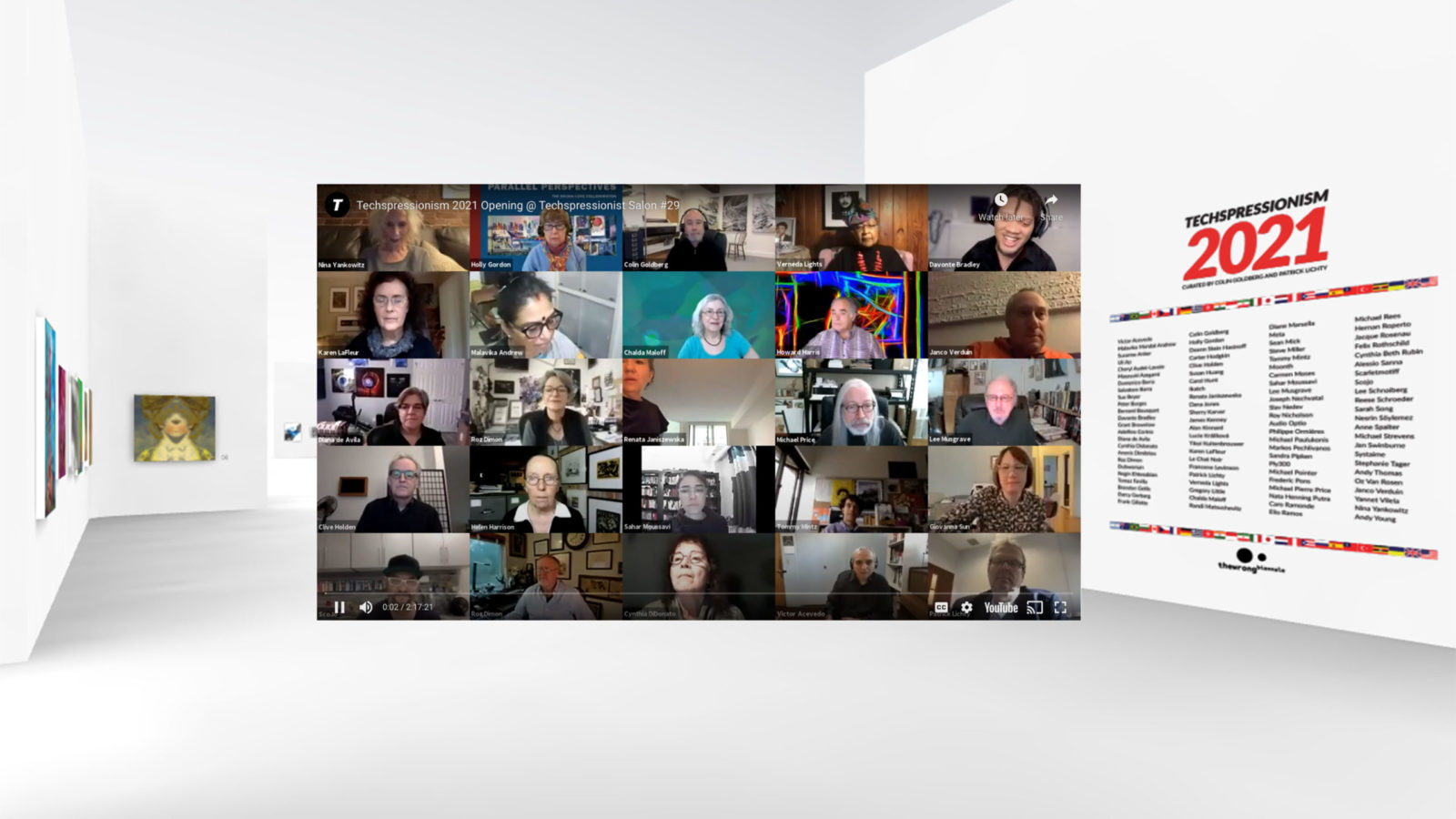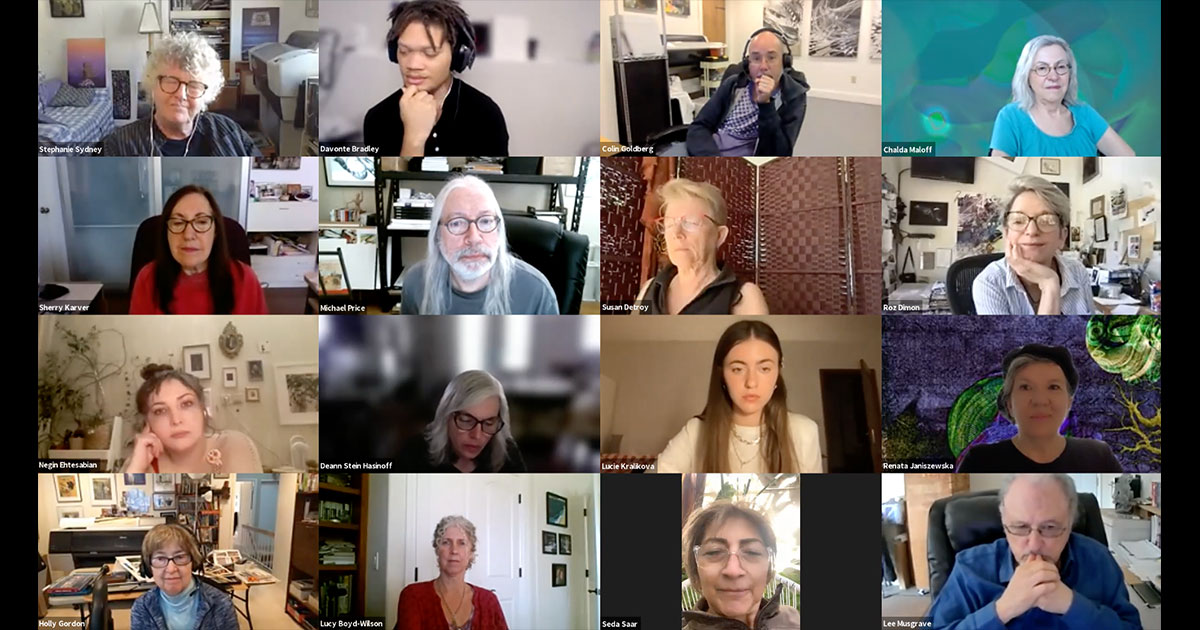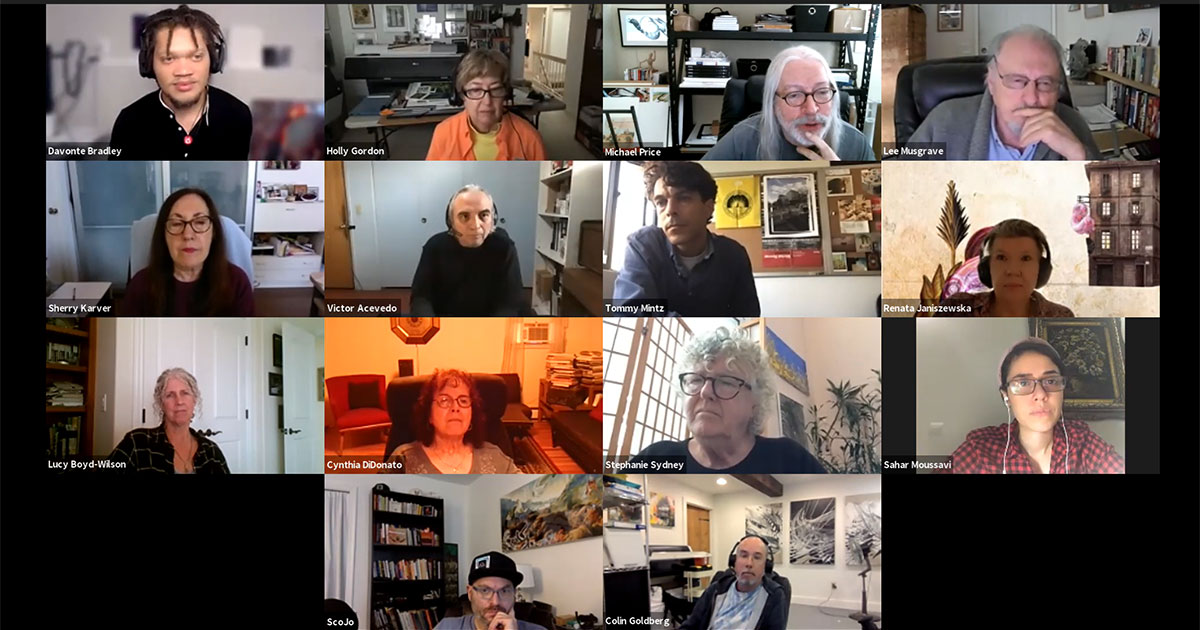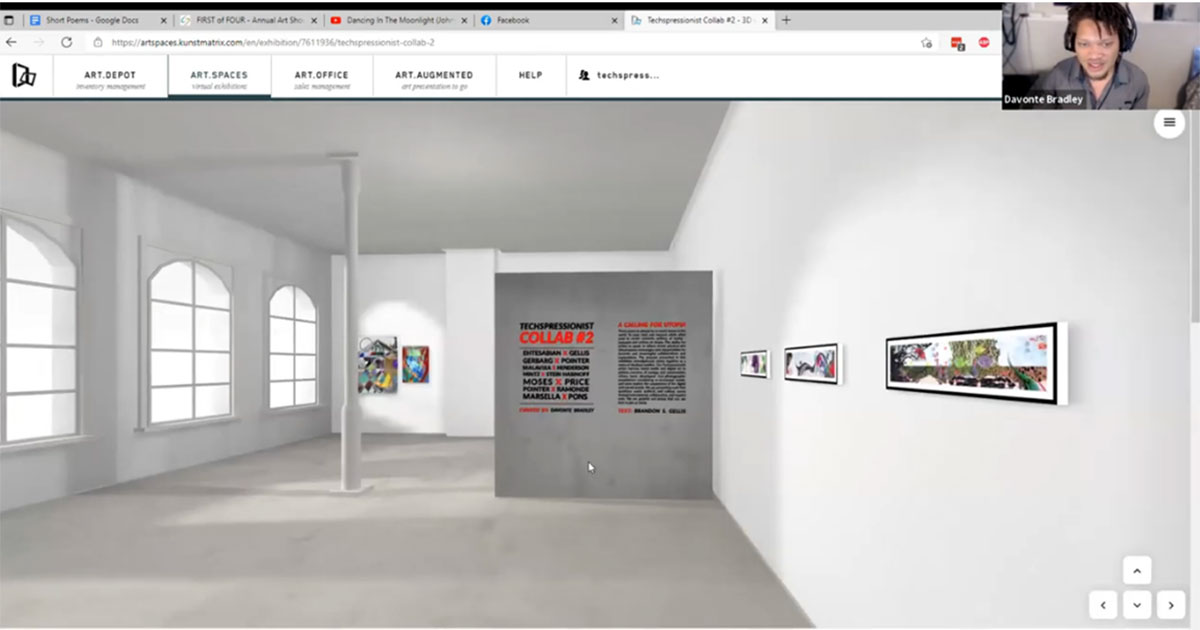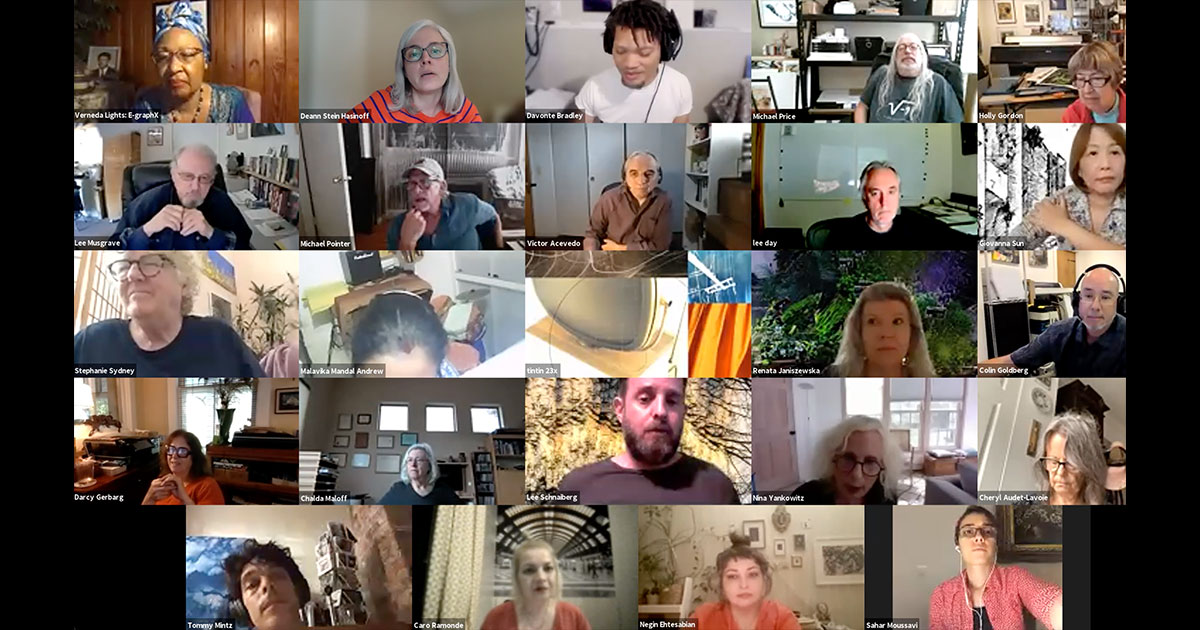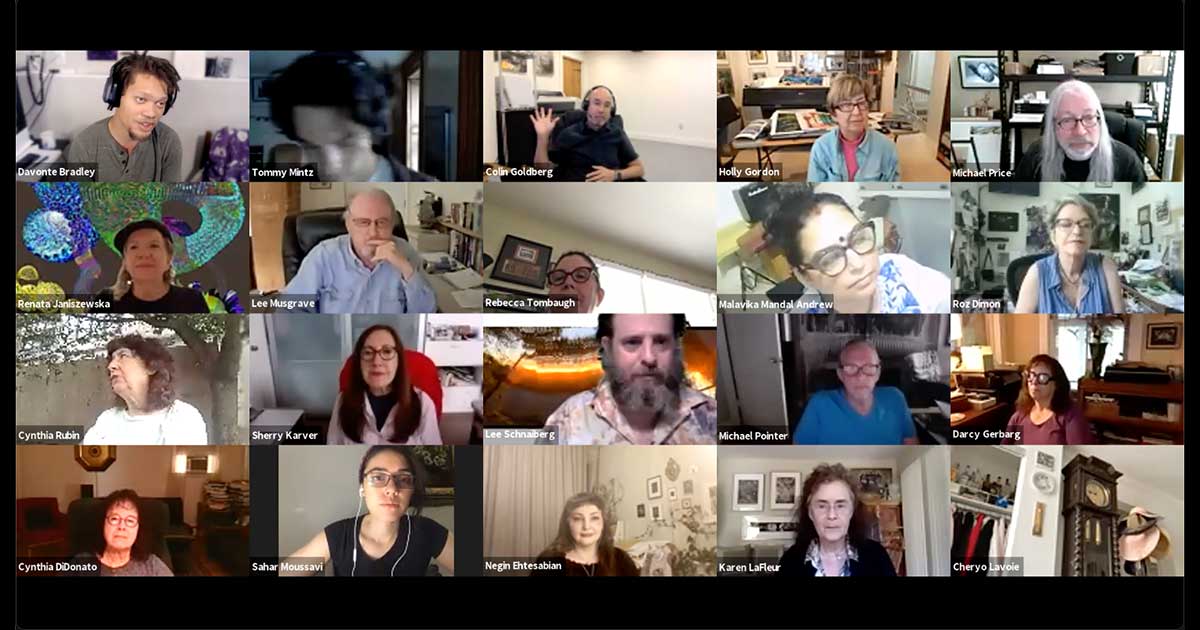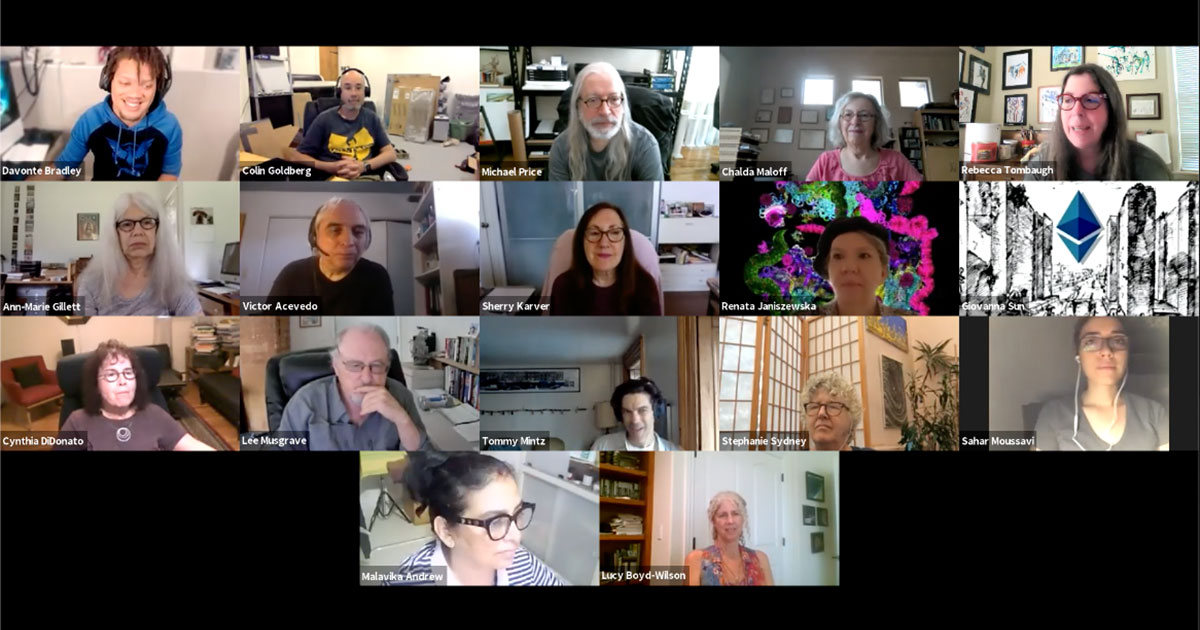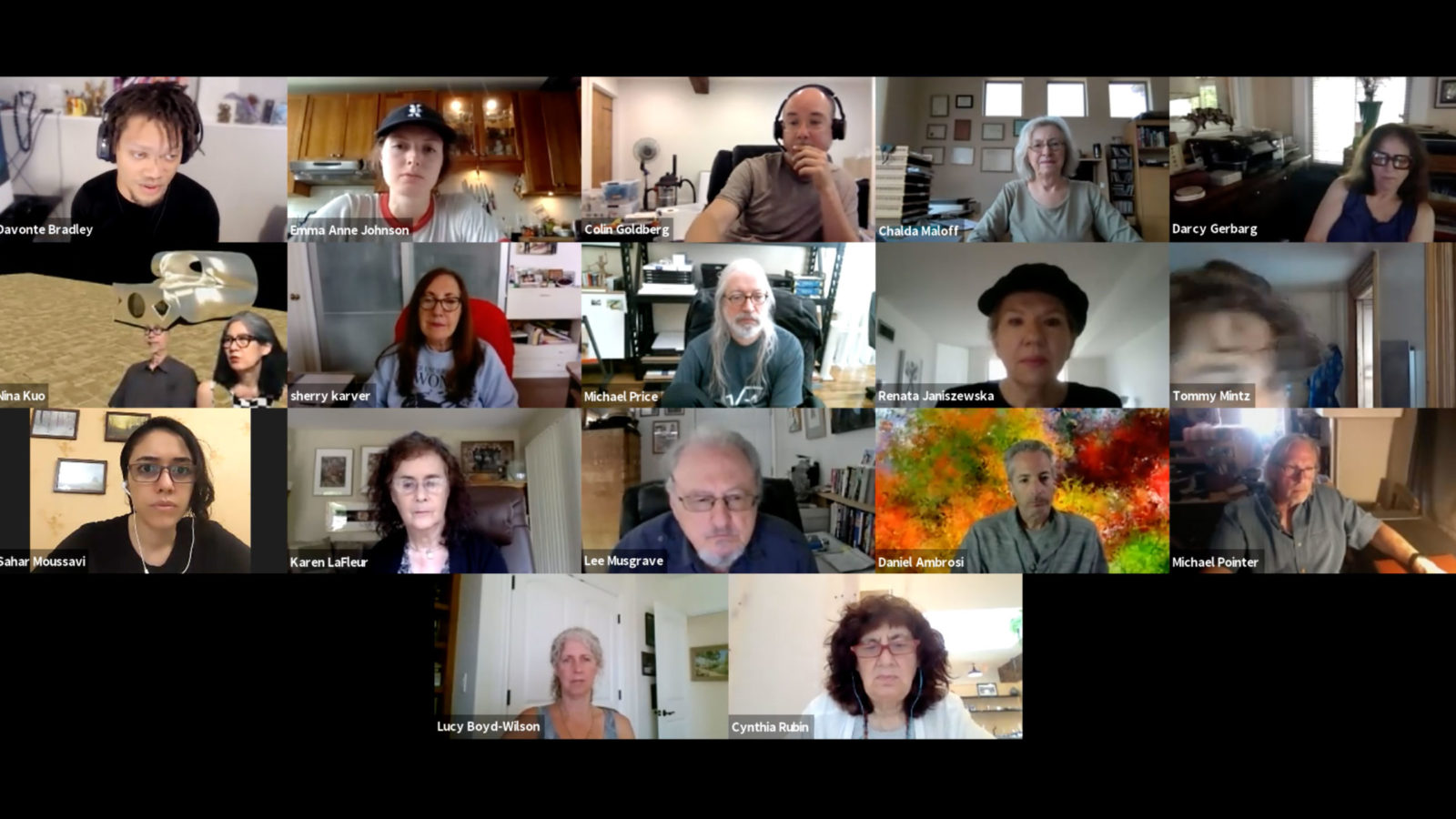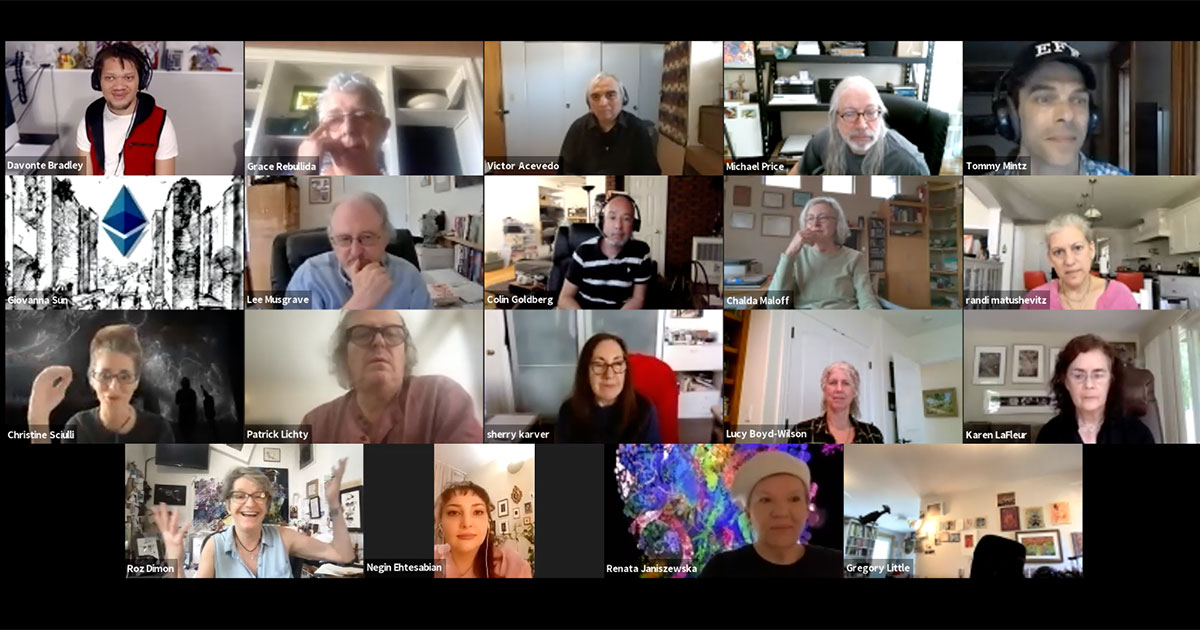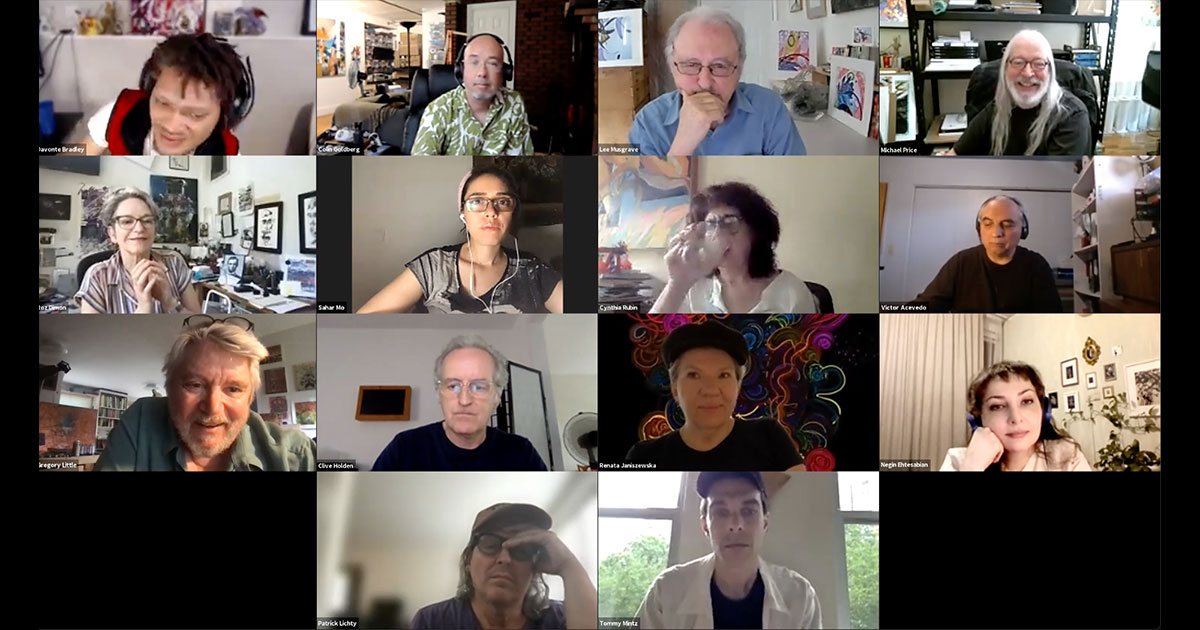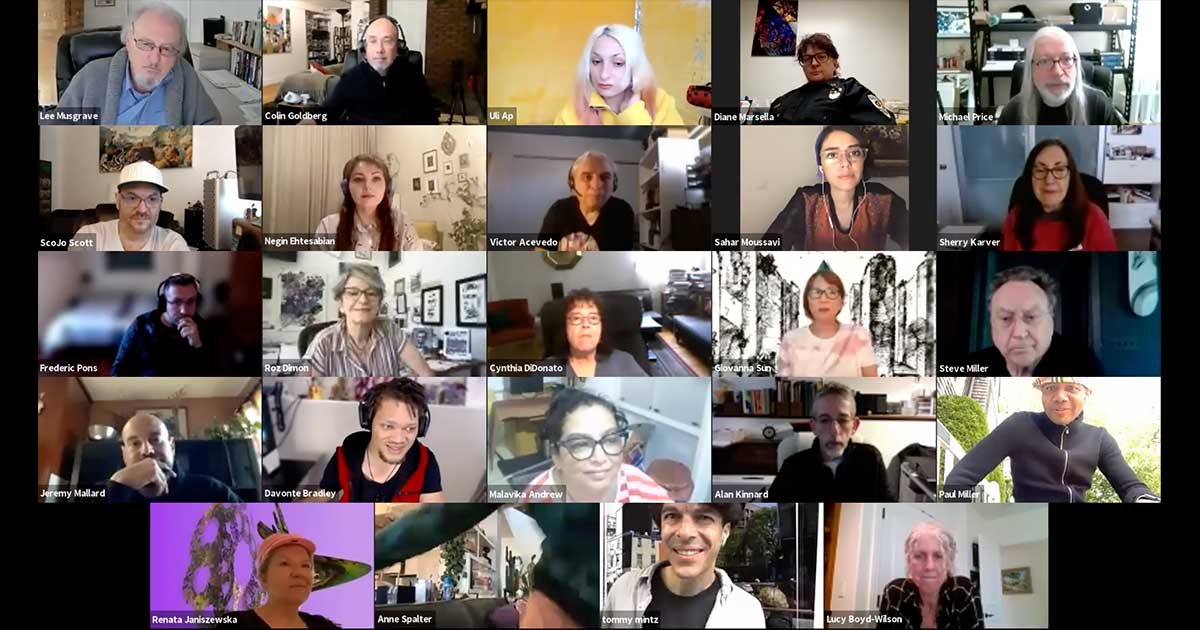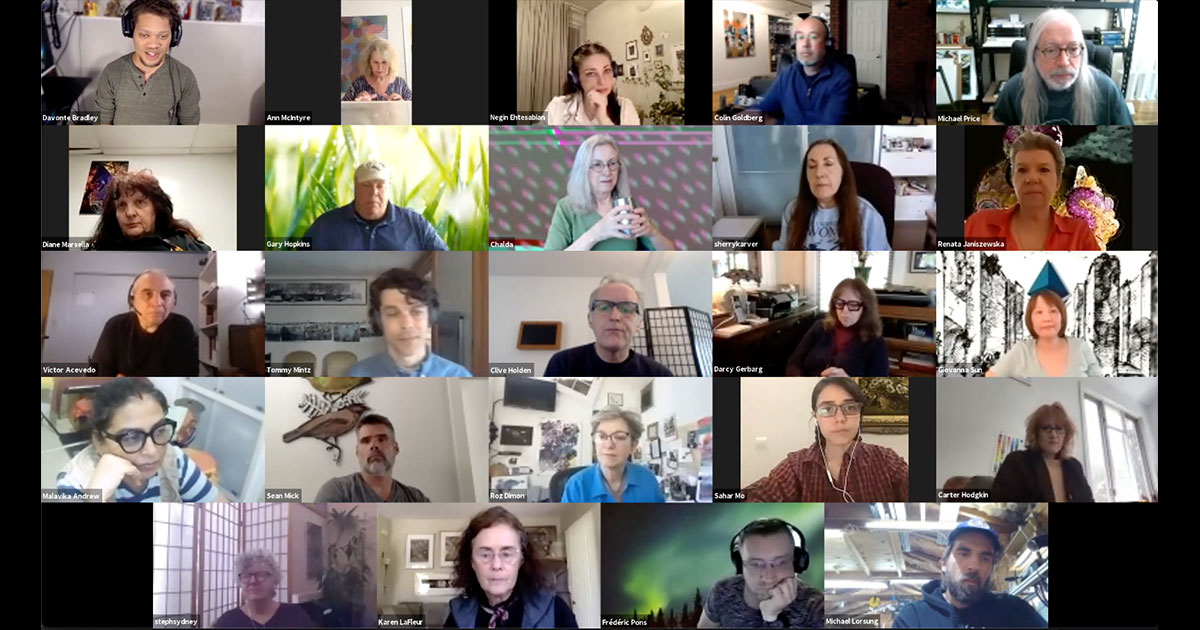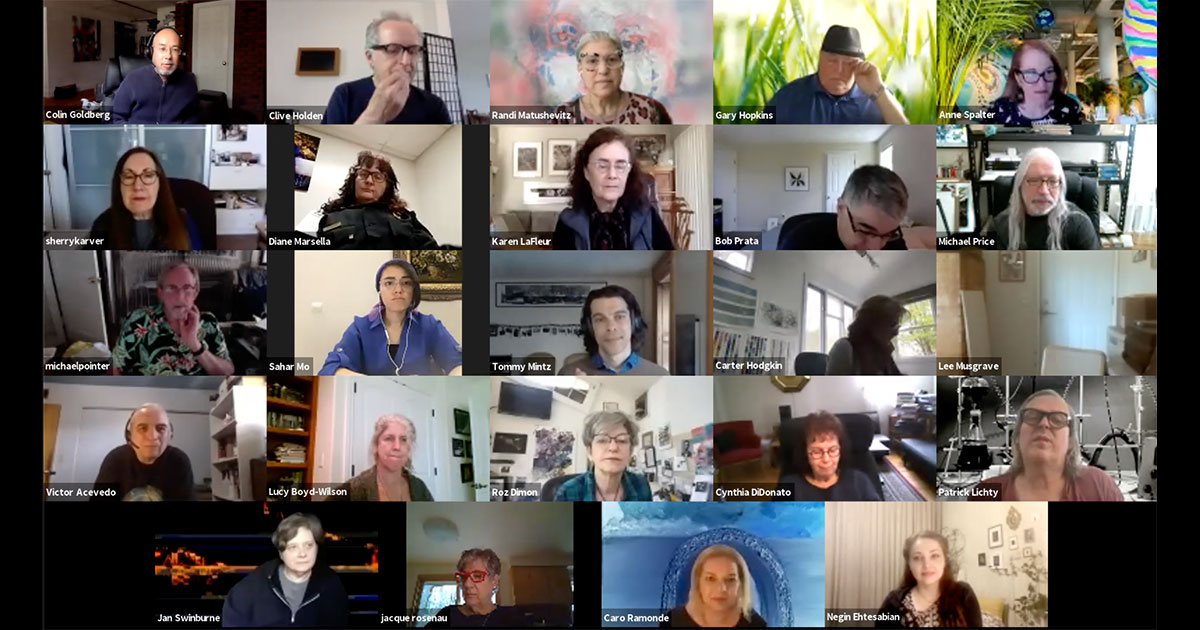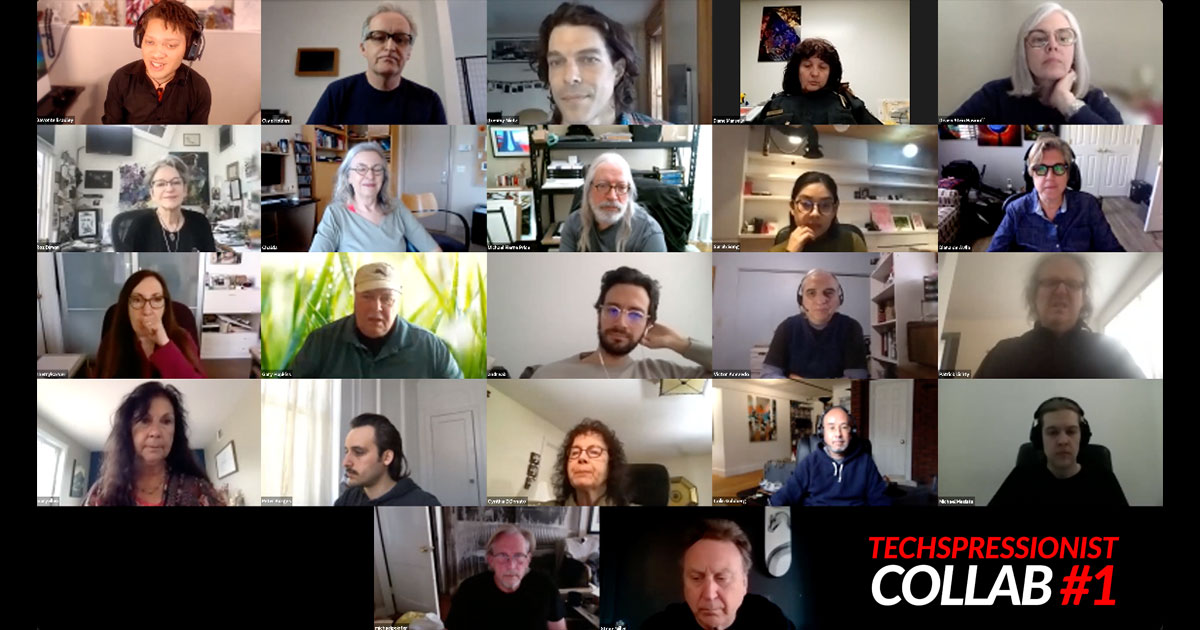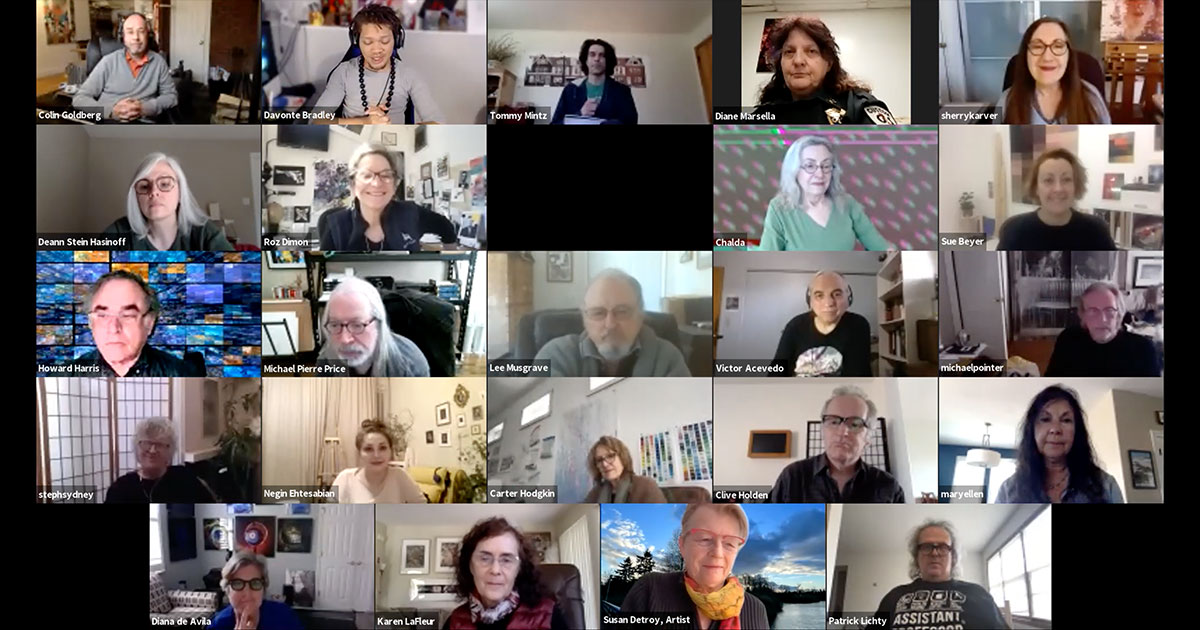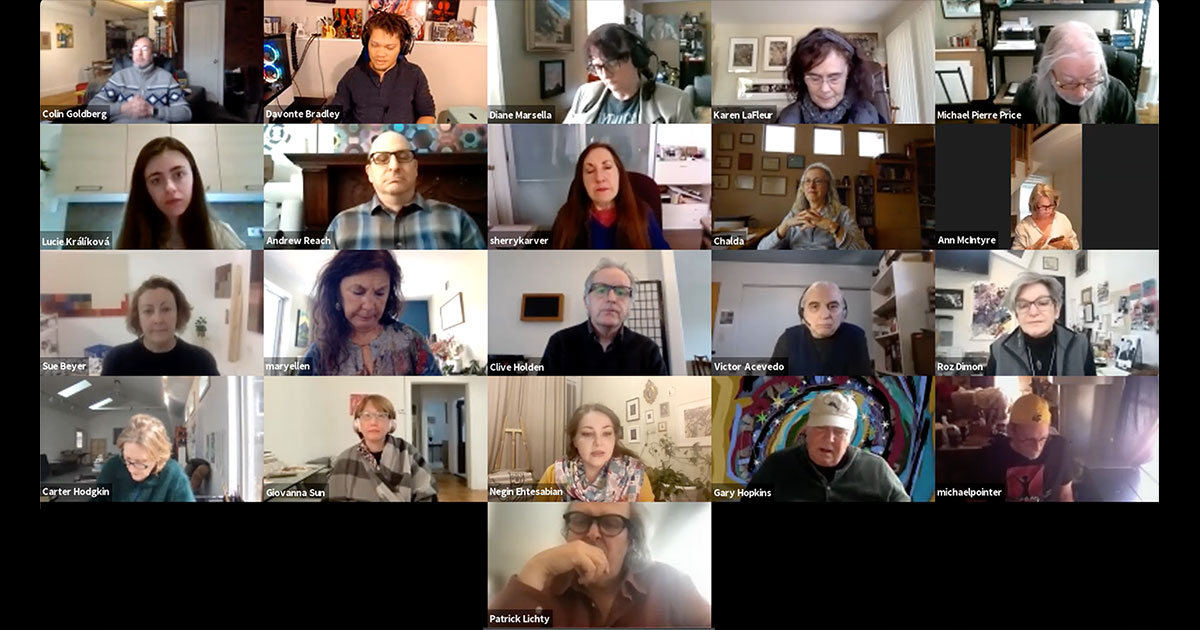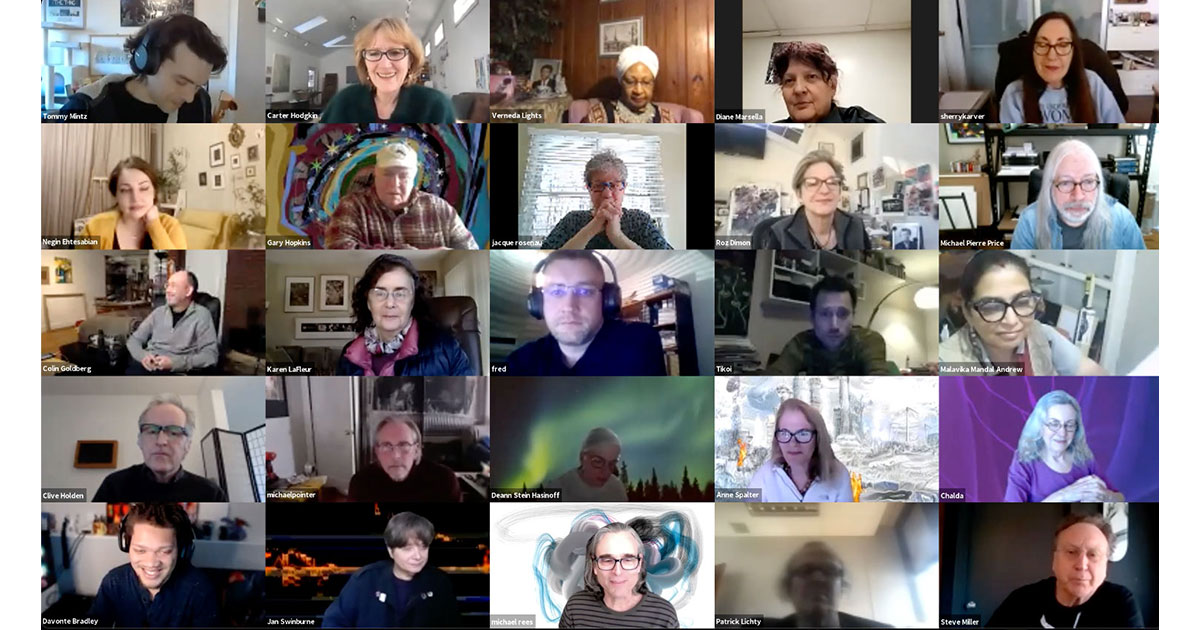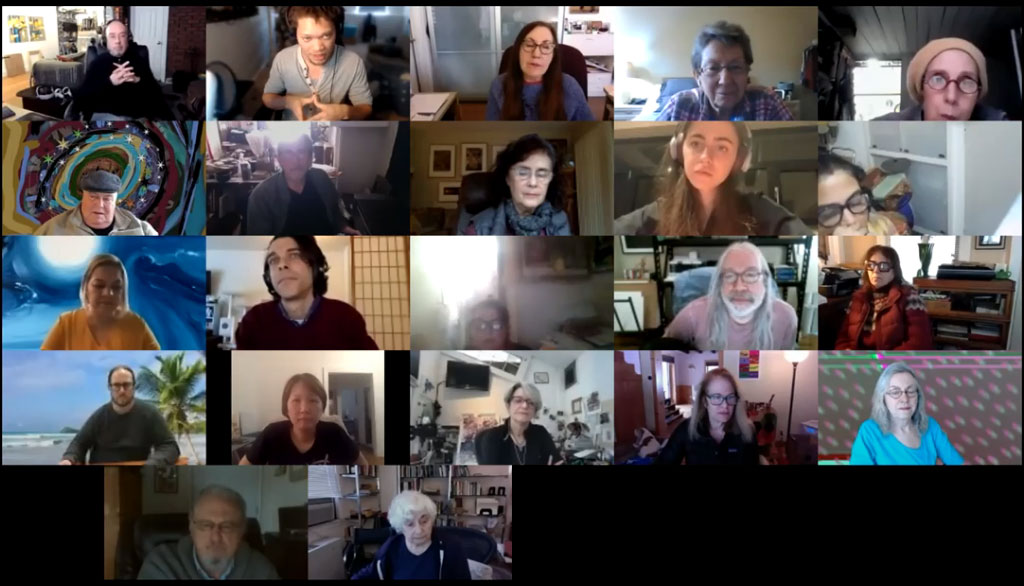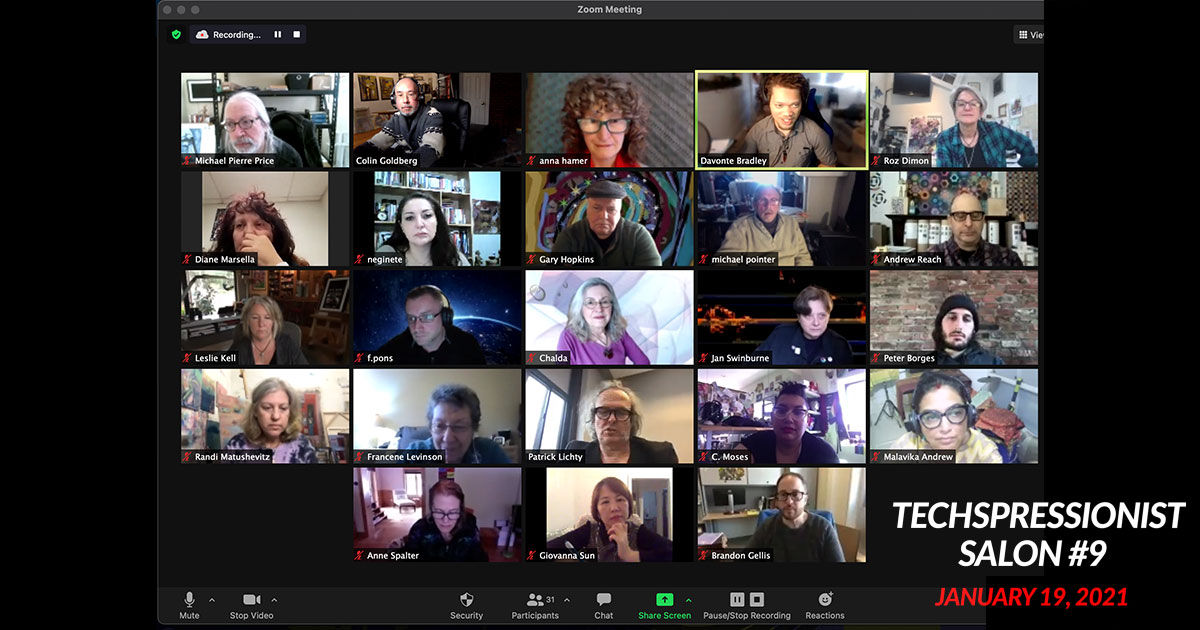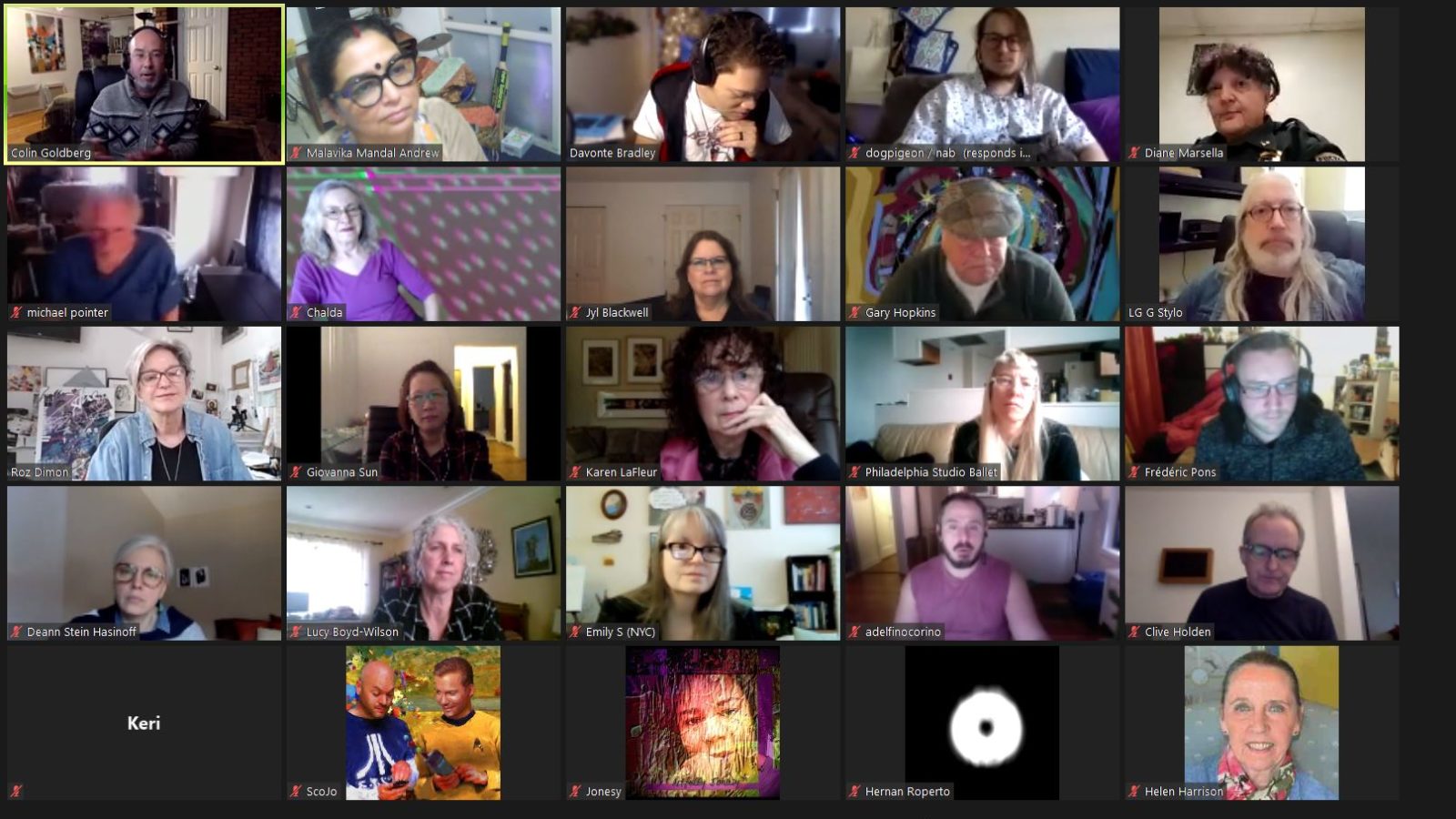Techspressionist Salon 91
Origins: The Prehistory of Techspressionism – Part Two
Moderated by Michael Pierre Price
Recorded January 2, 2025
A selection of Techspressionist artists sharing their work and experiences working with art and technology in the 1960s, 70s, and 80s. Part two of a two-part salon series.
00:30 Roz Dimon
14:01 Cynthia Beth Rubin
26:28 Carter Hodgkin
37:11 Victor Acevedo
51:17 Annnette Weintraub
1:06:20 Michael Pierre Price
ARTISTS
Roz Dimon is a pioneering digital artist with eight pieces in the digital collection of AT&T from as early as 1989. She was featured with David Hockney in a Forbes Magazine article about investing in digital art in 1991, and curated the highly acclaimed exhibition “code” in 1995. Dimon is known for her interactive media paintings like PALE MALE, an edition of which is in the collection of The 9/11 Memorial Museum. Her work is being featured alongside such notables as Richter, Fischl and Nakagawa in an essay by art historian Gail Levin being published in Japan in March 2022. Recent grants include The National Endowment for The Arts, and The Institute of Museum and Library Sciences. In addition to 35 years of physical oil paintings, Dimon has been fortunate to have been collected by the late Walter Liedtke of the Metropolitan Museum of Art. Her work was recently in the Techspressionist Exhibition “NFT NOW.” Dimon is represented by Carter Burden Gallery in New York City. Shelter Island, NY USA
Cynthia Beth Rubin was an early adopter of digital imaging, beginning her transition from painting to the computer in 1984. Based in New Haven, she is equally fascinated by the imagined memories of culture and with envisioning unseen but essential microscopic life. Her work has been recognized internationally in exhibitions and festivals, including NY Creative Tech Week, the Jewish Museum in Prague, the Siberia State Art Museum, Techspressionism exhibitions, and numerous editions of SIGGRAPH and ISEA.
Carter Hodgkin’s work is based on visualizations of energy, inspired by particle physics and forms in nature. Employing simulation design in an animation process of interacting particles, she aims for an intense visual experience where color, line, and form trace movement, energy and space. Her working process is an interplay between sophisticated digital means woven into traditional media with an emphasis on the hand.
Victor Acevedo is an artist best known for his digital print work and video. His current focus is producing electronic visual music works. His imagery has a metaphysical bent, expressed with geometrical abstraction, sometimes with figuration. His video work explores the perceptual implications of synesthesia and is influenced by Sacred geometry as well as the geometry of Buckminster Fuller’s Synergetics.
Annette Weintraub’s work is an investigation of architecture as visual language and the symbolism of space. Her projects integrate narrative elements within a variety of conceptual representations of space and examine the boundary between personal and public space and the social meanings of landscape. Her projects have been shown at venues that include: College Art Association, FILE in Sao Paulo and Rio de Janeiro, the Everhart Museum in Scranton, PA; Heara 8 in Jerusalem; The Atlanta Contemporary Art Center; Museo Nacional de Bellas Artes, Buenos Aires, Argentina; 5th Salon de Arte in Cuba; Video Biennal Israel; The 5th Biennial of Media and Architecture in Graz Austria; The Whitney Biennial; The International Center for Photography/ICP; The First Chiang Mai New Media Art Festival, Chiang Mai University Museum, Thailand; The International Film Festival Rotterdam; Thirteen/WNET TV’s Reel New York.Web; Viper in Switzerland; at SIGGRAPH and ISEA and numerous other national and international exhibitions. Commissions include The Rushlikon Centre for Global Dialogue, CEPA and Turbulence. Annette Weintraub was the recipient of a Silver Award in I.D. Magazine’s Interactive Media Review and her work has been cited in many publications, including: Aperture, Art in America, Artforum, ArtByte, Newsweek, The New Yorker, New York Magazine, The Boston Globe, Leonardo, and Intelligent Agent as well as many online citations including Arts@Large column in the New York Times online, CNN.com, NetArt Review, NYFA and Salon among others.
MODERATOR
Michael Pierre Price works from his home studio in Phoenix, Arizona creating his digital art prints that are primarily inspired by the intersection of modern physics, neuroscience, and spirituality. He often uses mathematics, specialized software, and AI when he creates his abstract, algorithmic, and surrealist art.
WHAT IS A TECHSPRESSIONIST SALON?
Techspressionist Salons are a time and place in cyberspace where artists gather once a month to hang out, share their work and discuss matters relating to art, philosophy, and technology.
These meetups were conceived as a modern counterpart to the Surrealist salons of the 1920’s, in which artists could meet informally to socialize and discuss ideas. Techspressionism is a 100% volunteer-based international artist community.
The First Techspressionist Salon was held on September 1, 2020, and included artists Colin Goldberg, Patrick Lichty, Steve Miller and Oz Van Rosen, as well as art historian Helen Harrison, Director of the Pollock-Krasner House and Study Center, the former home and studio of painters Jackson Pollock and Lee Krasner. During this first Salon session, the working definition of Techspressionism was decided upon by the participants as: “An artistic approach in which technology is utilized as a means to express emotional experience.”
Artist Davonte Bradley (aka DAVO) proposed the idea of recording the Salons and publishing them on the Techspressionism YouTube Channel, which was implemented starting with Salon #8.
Salons are moderated by a rotating panel of artist volunteers. After the recording ends, artists are welcome to hang out for the afterparty (aka advisory board meeting), in which the topic for the next Salon is decided upon, and other community-related ideas are discussed.

